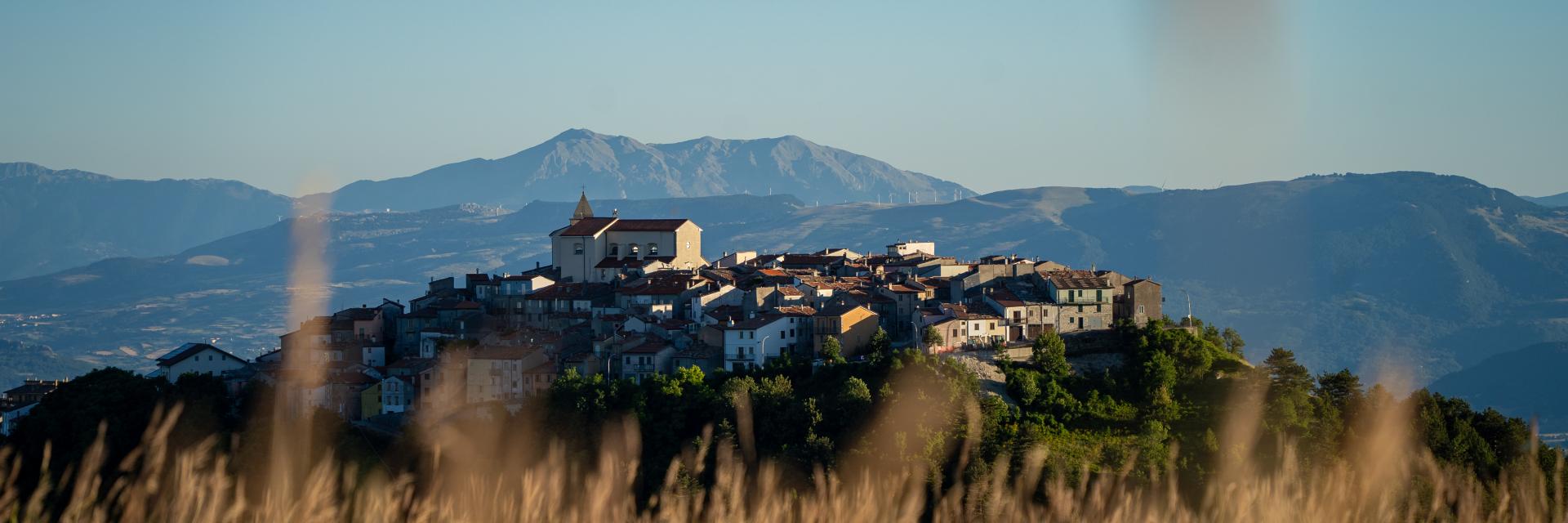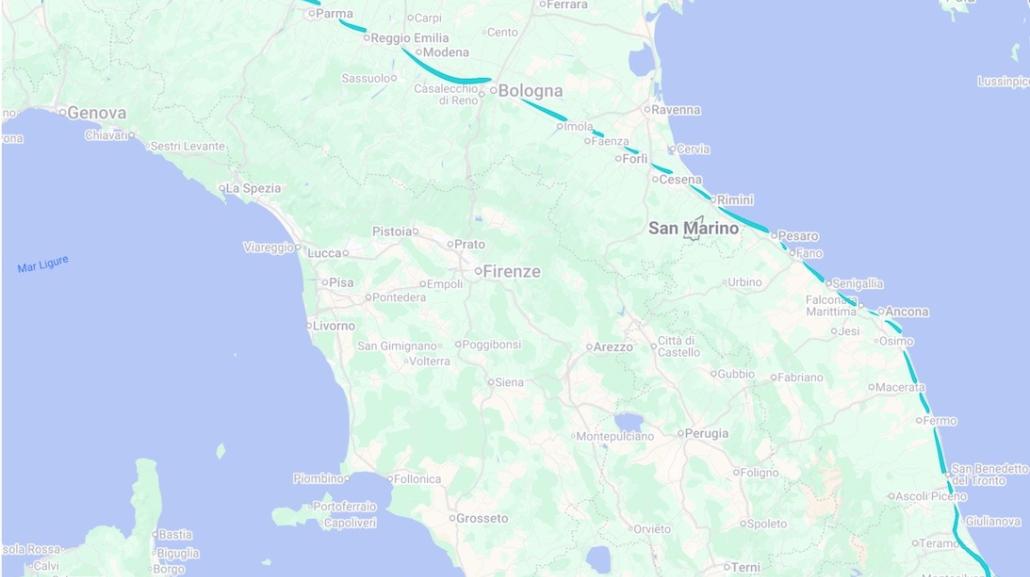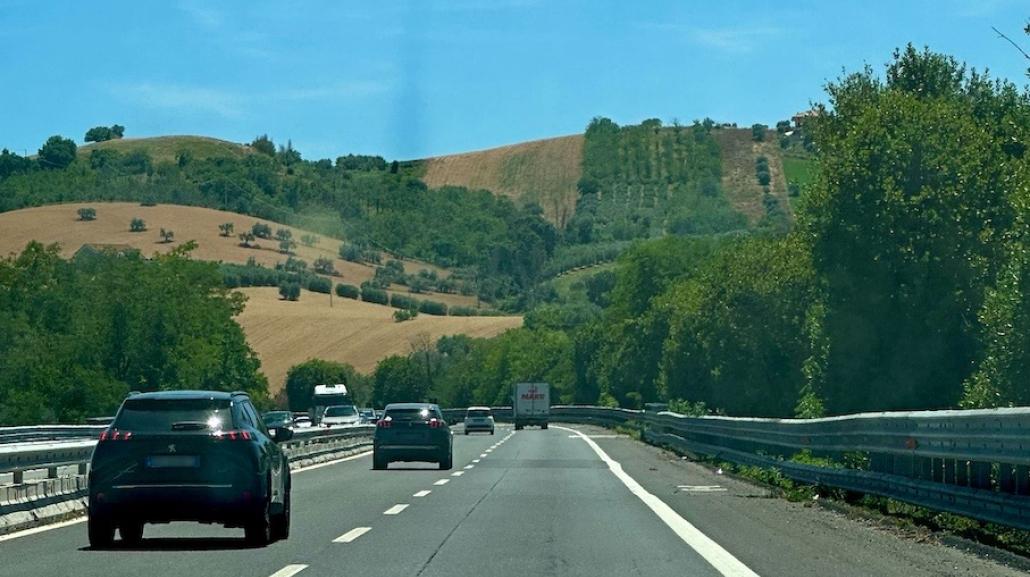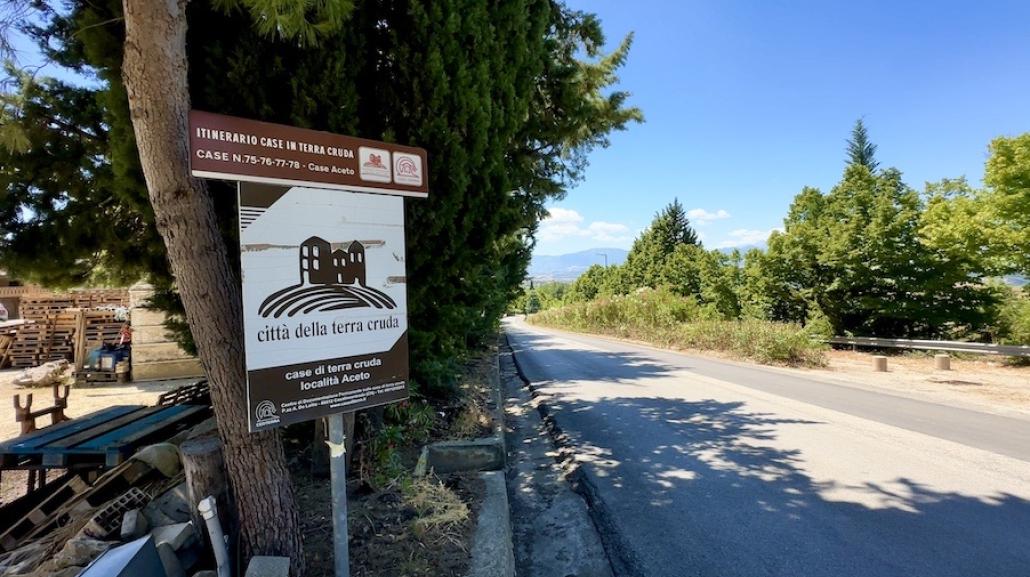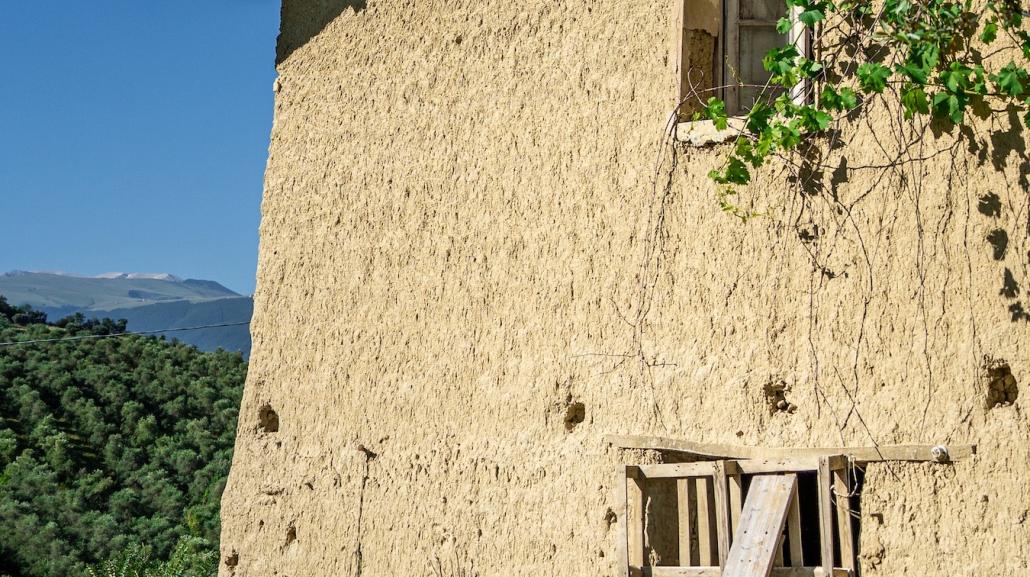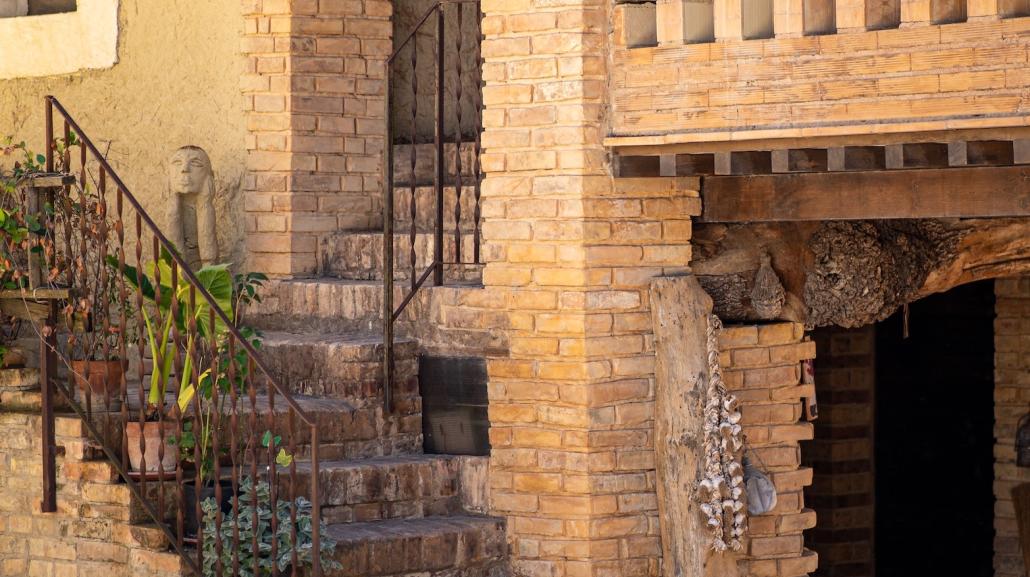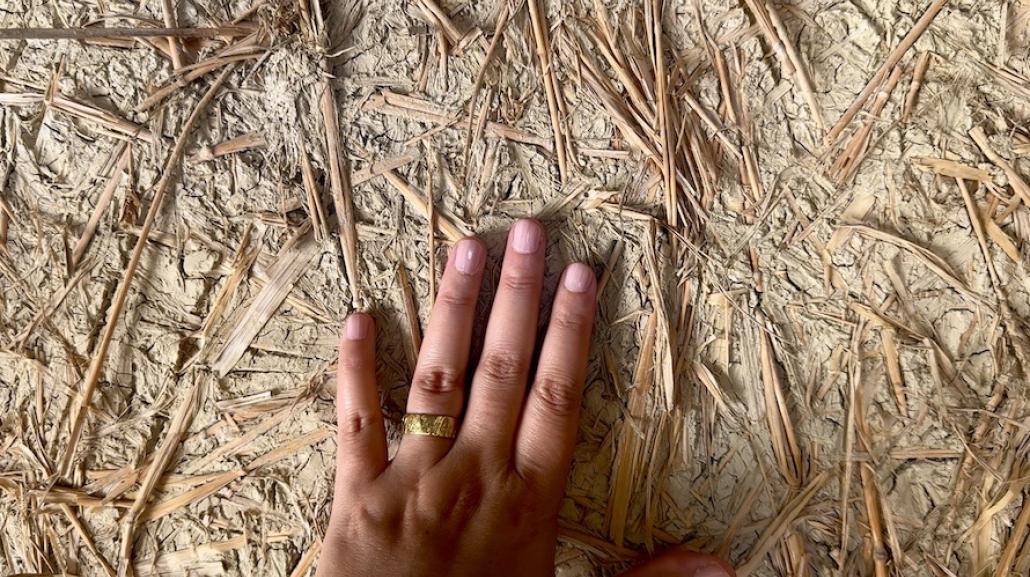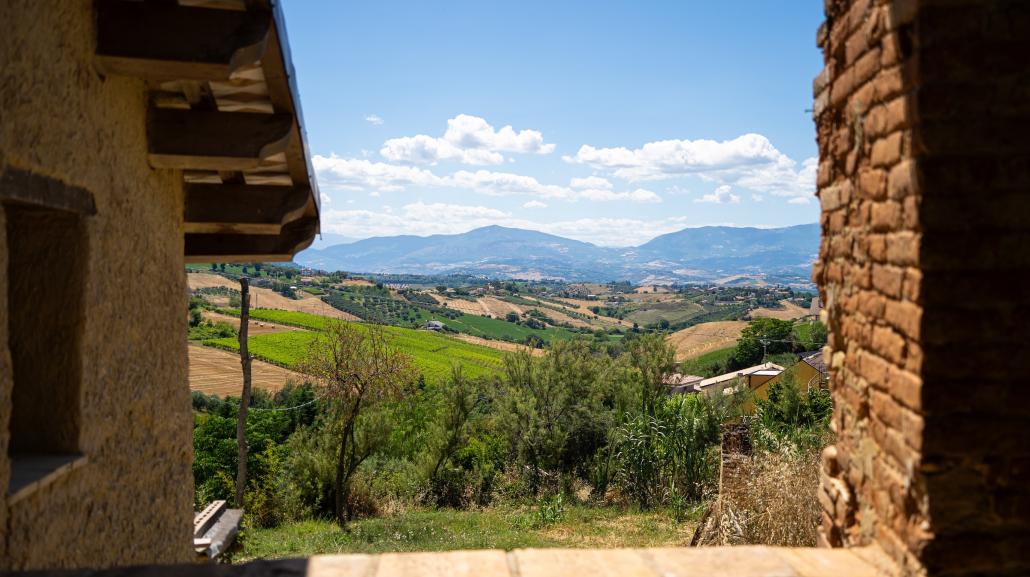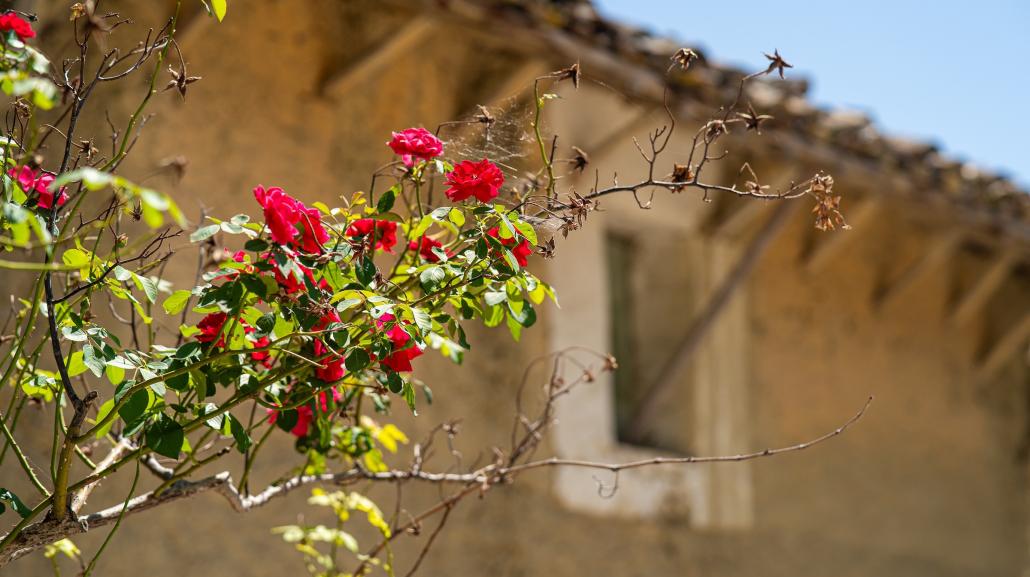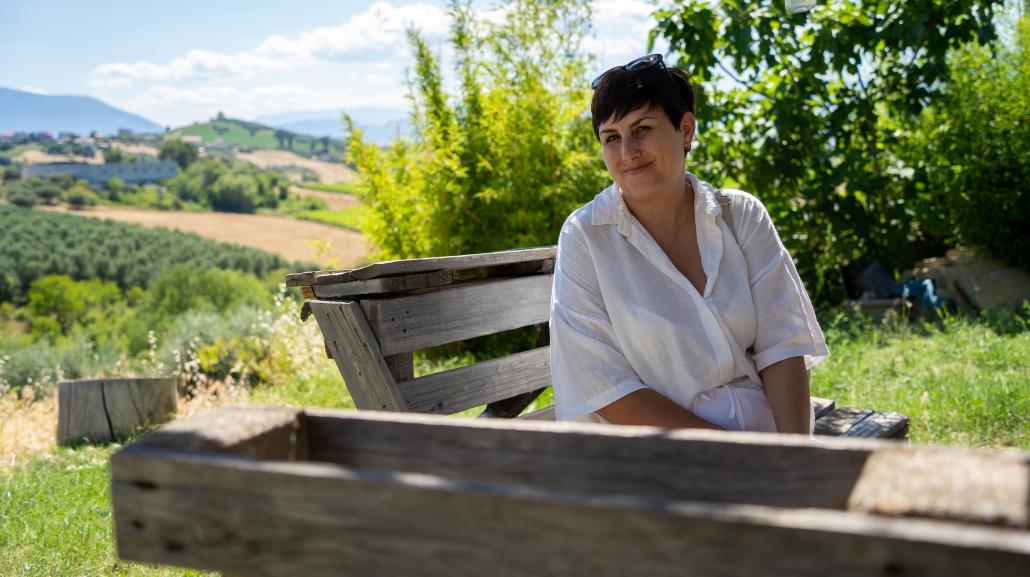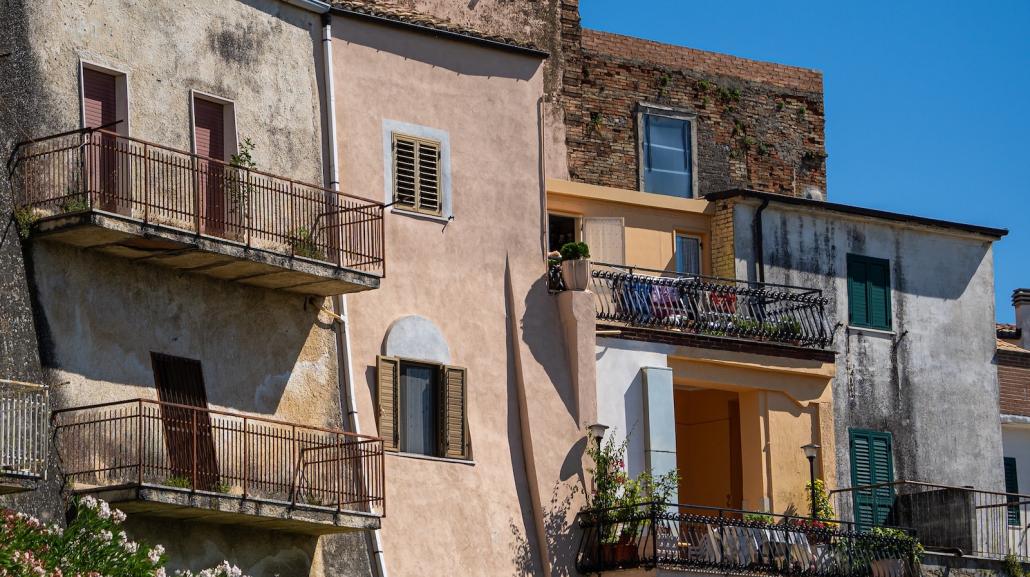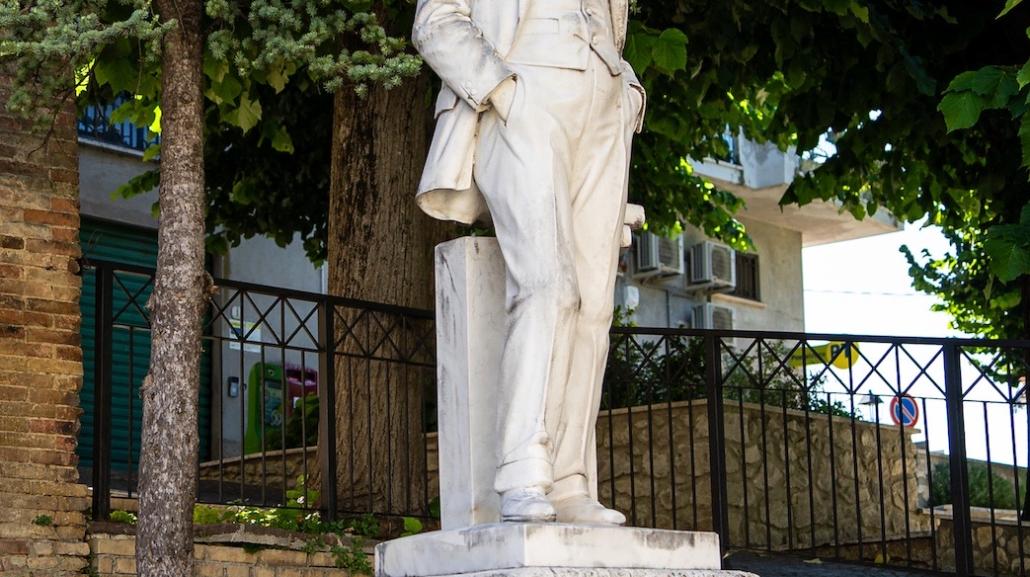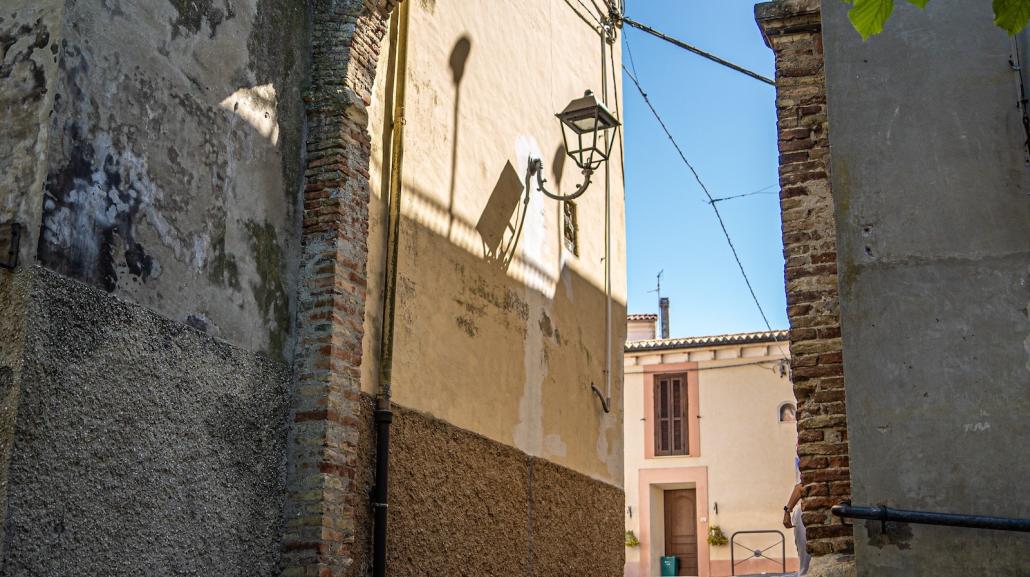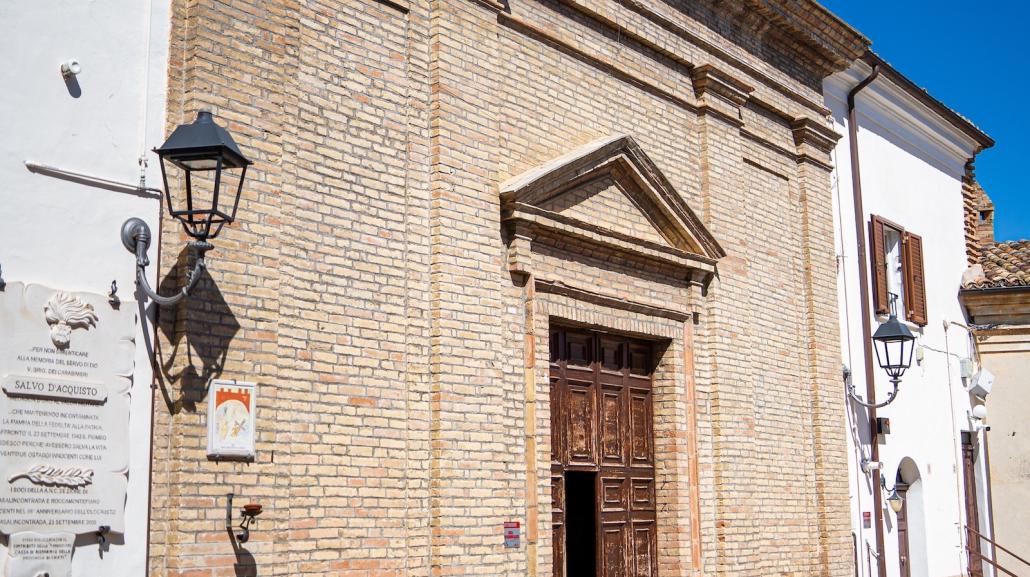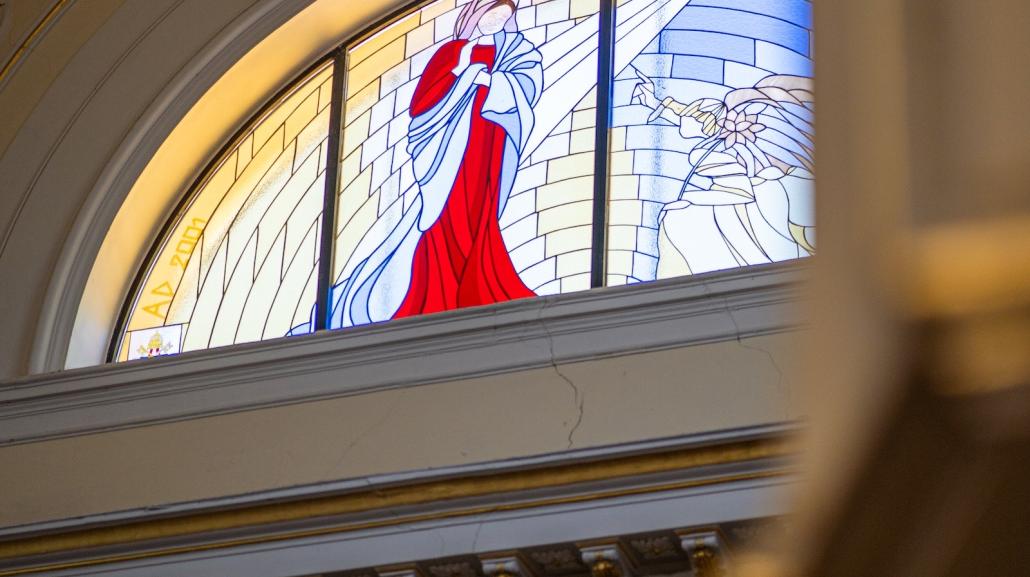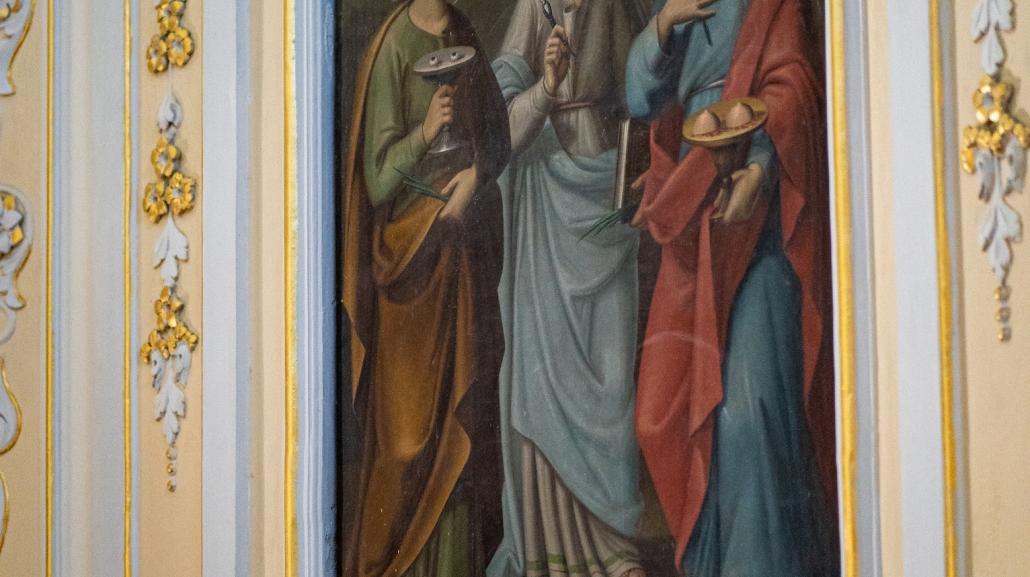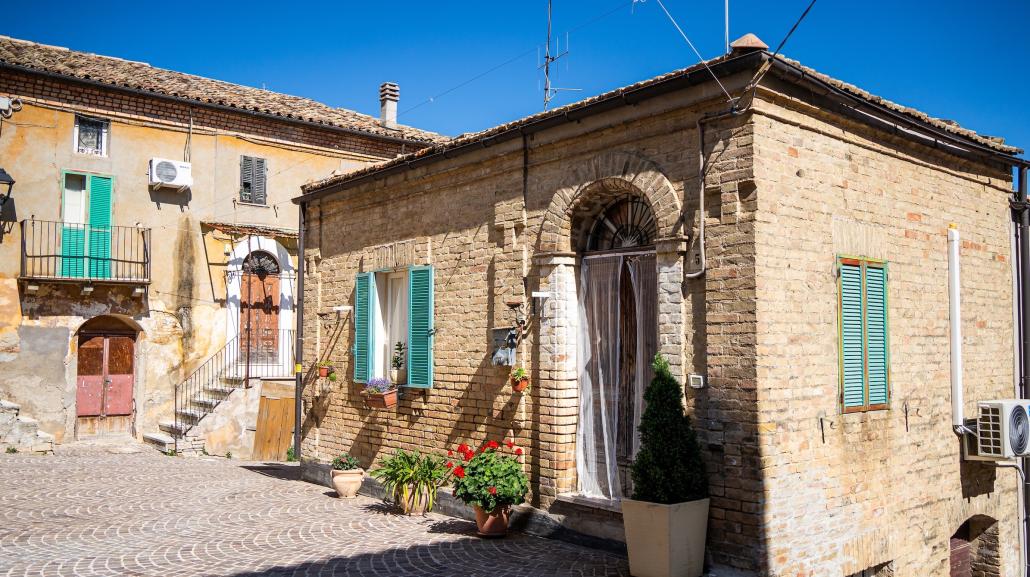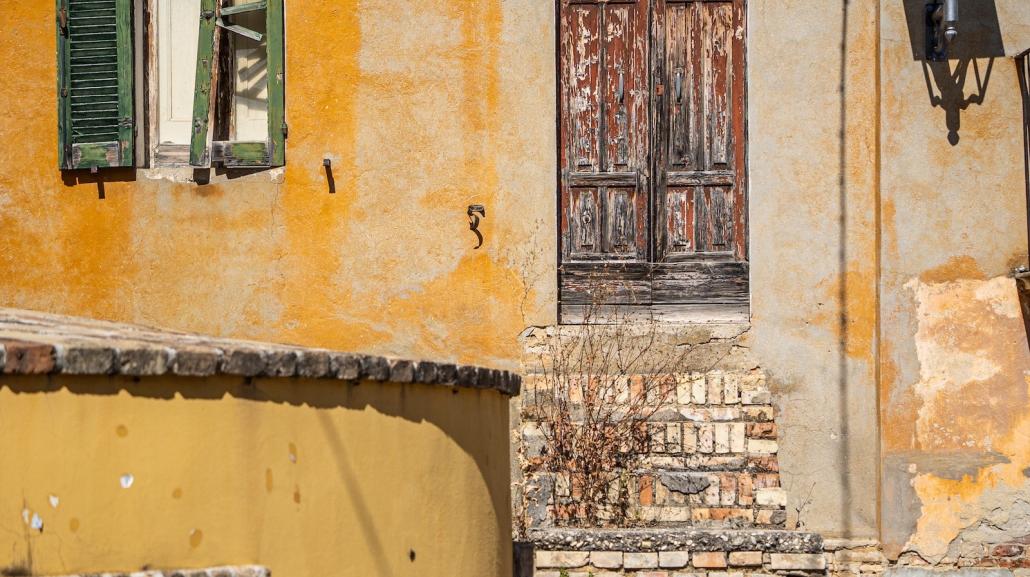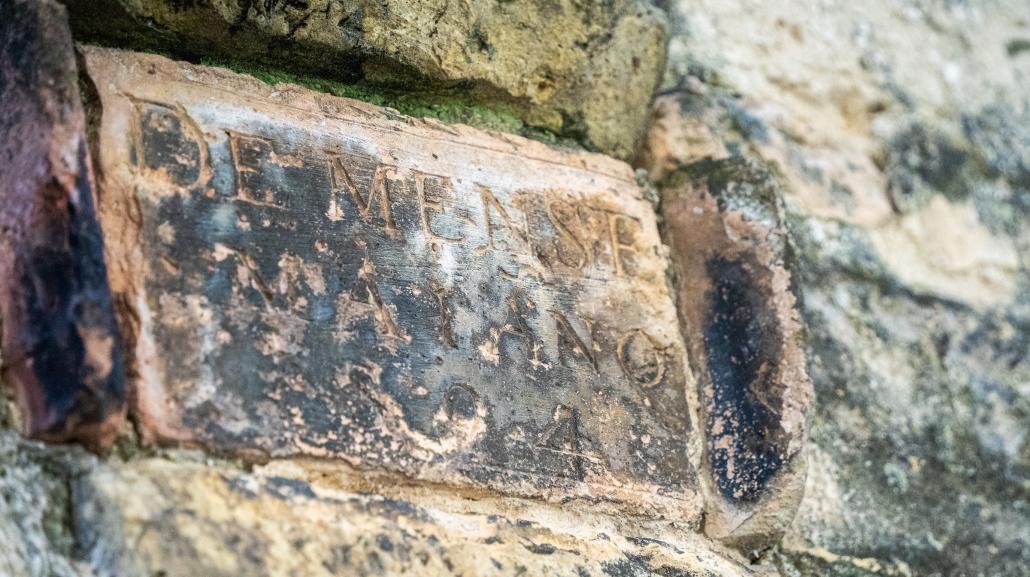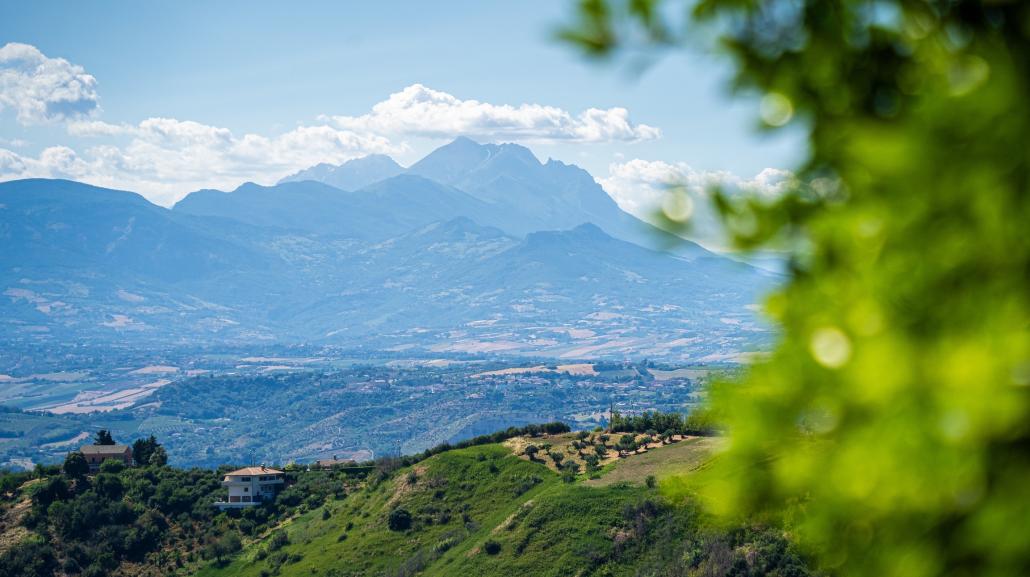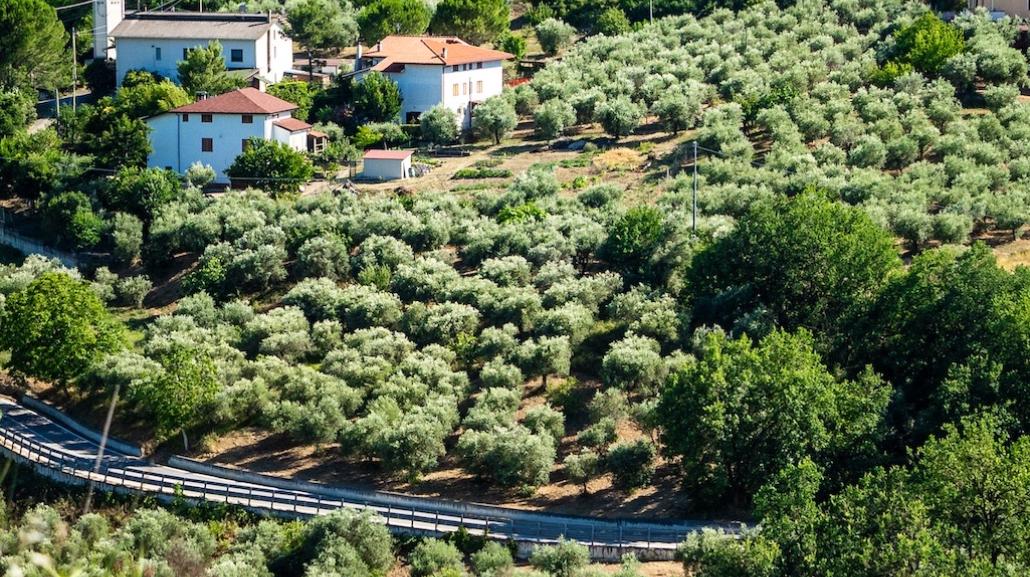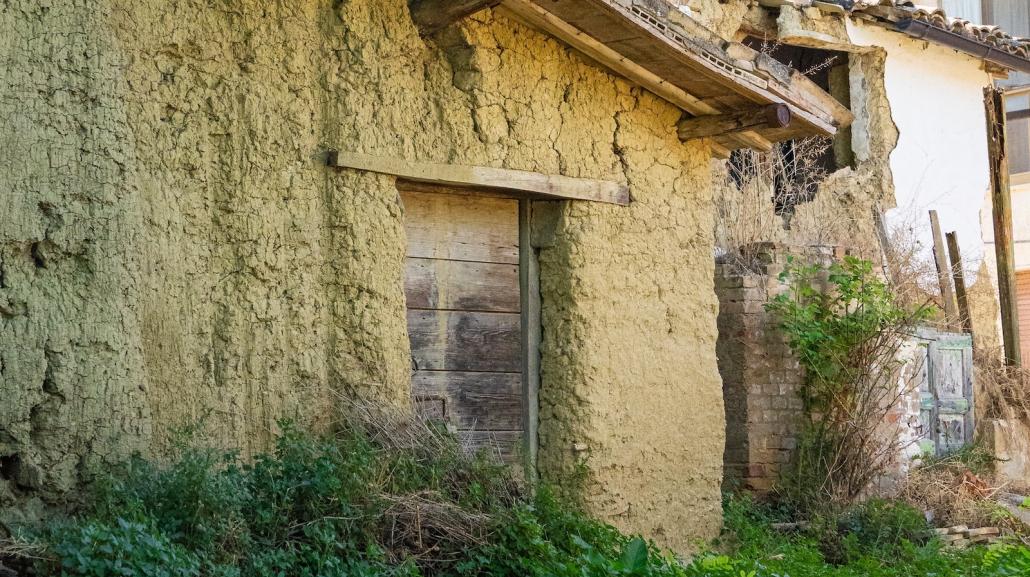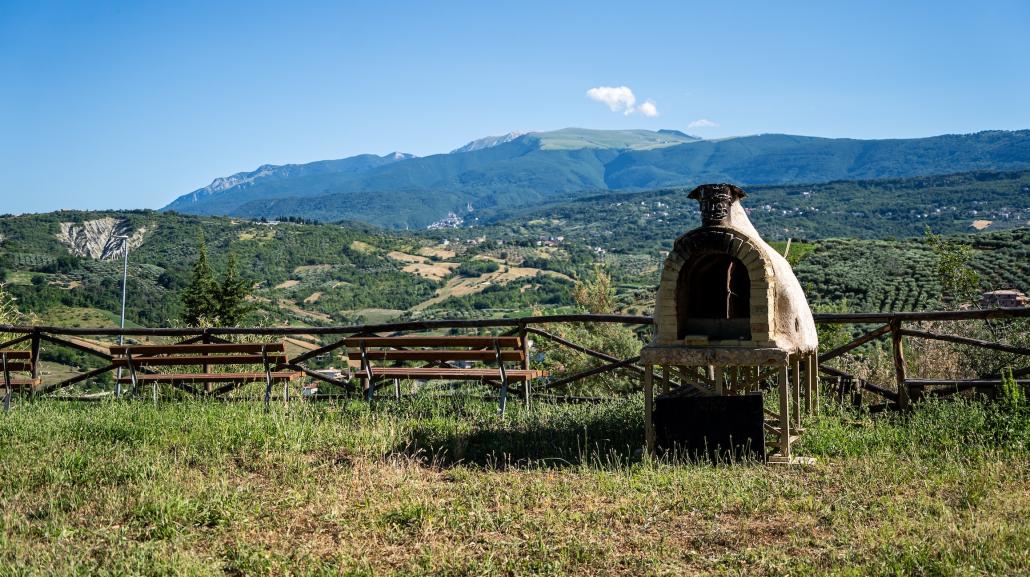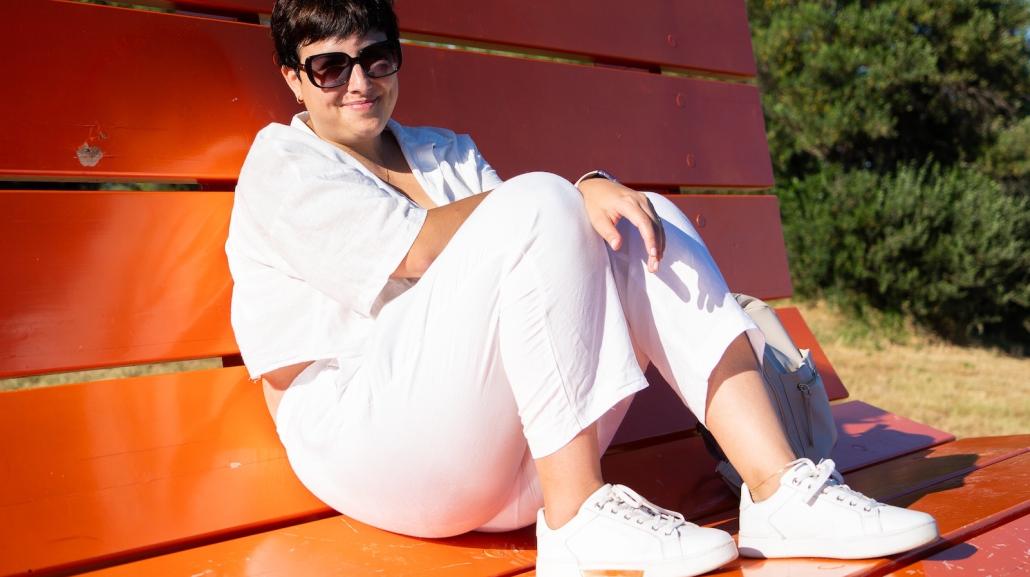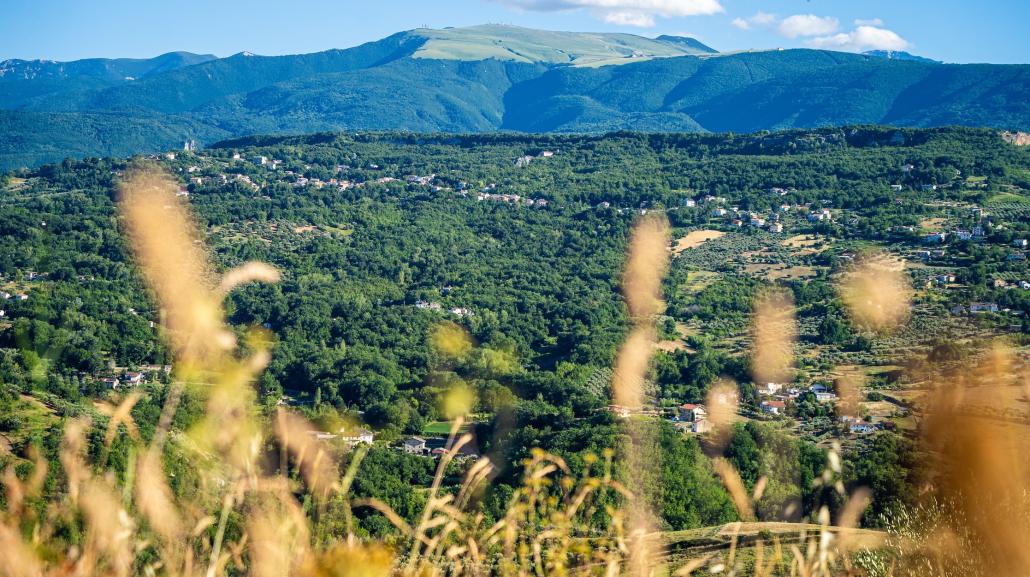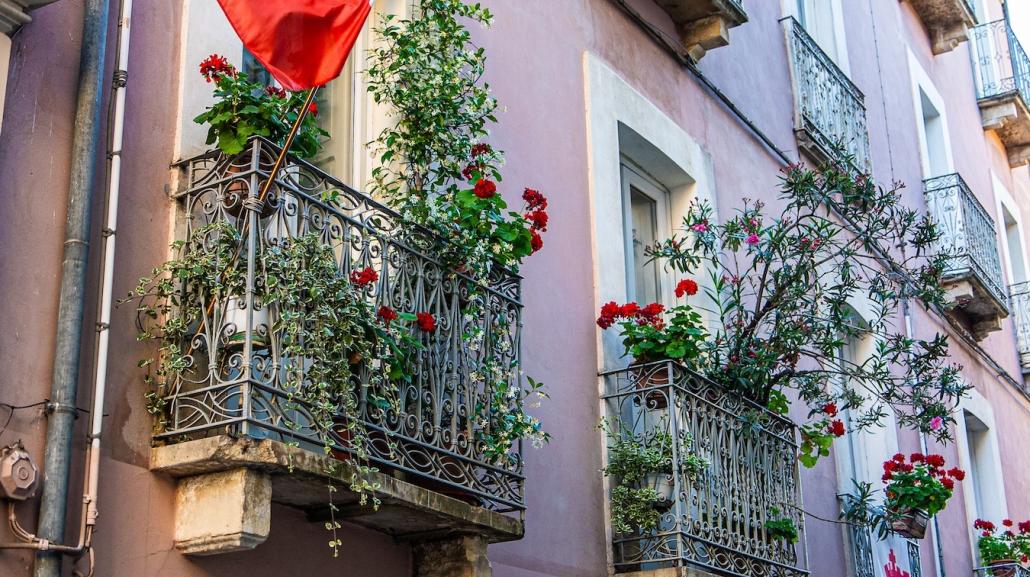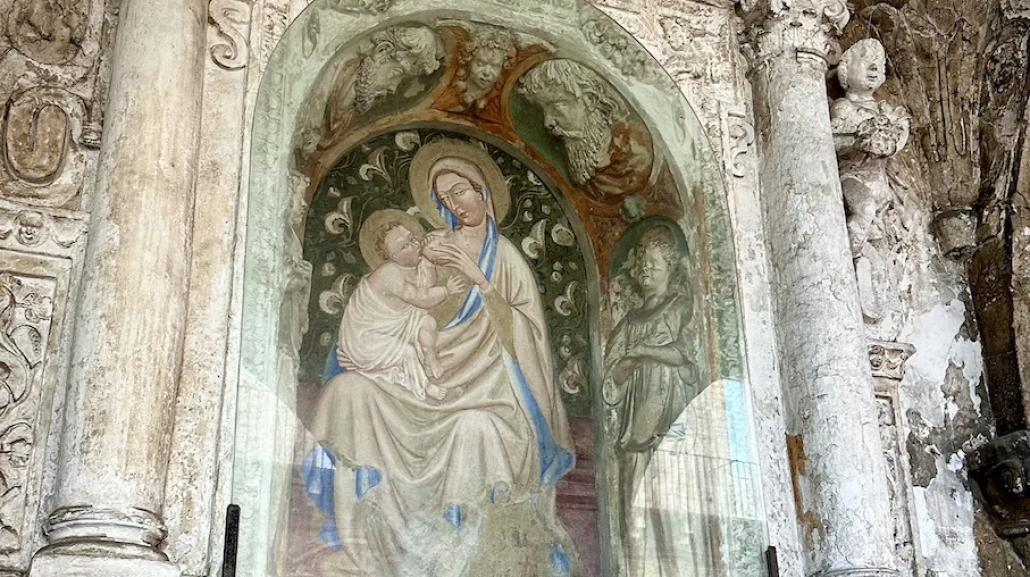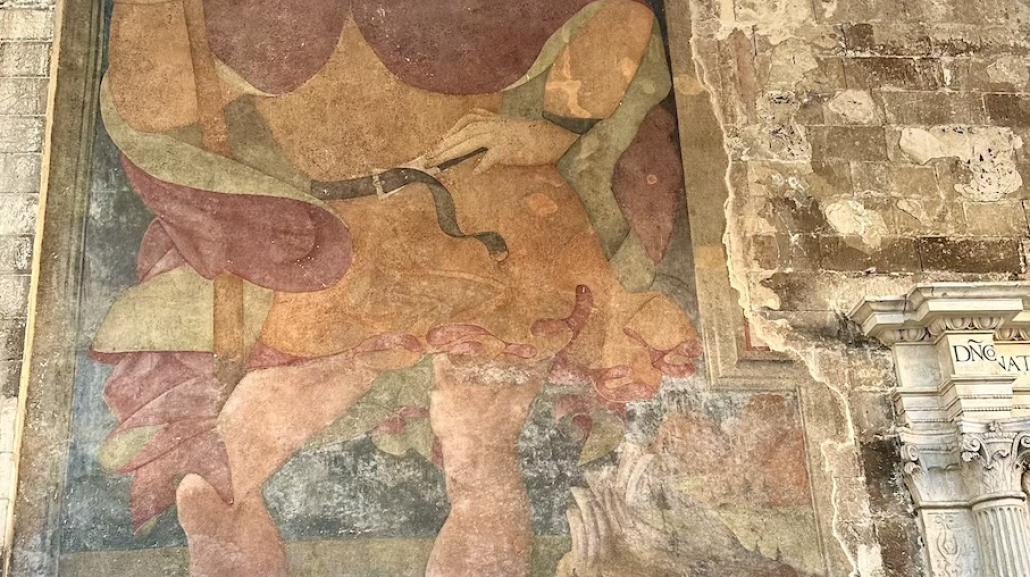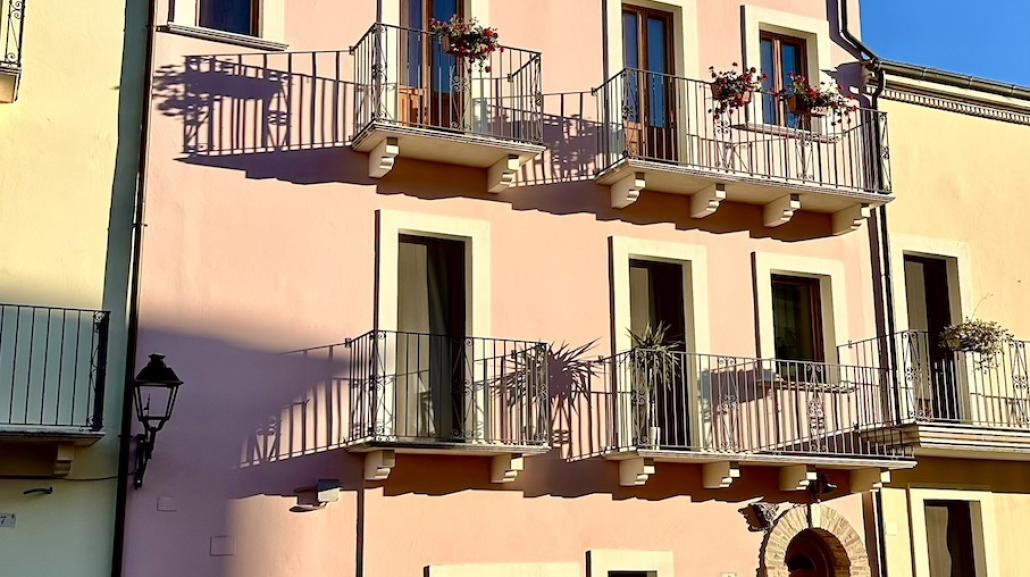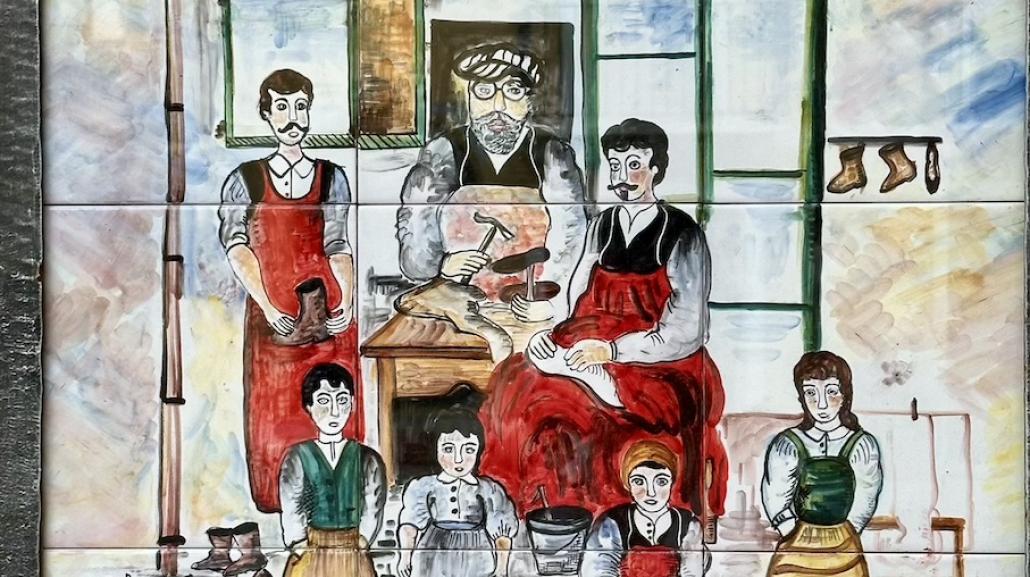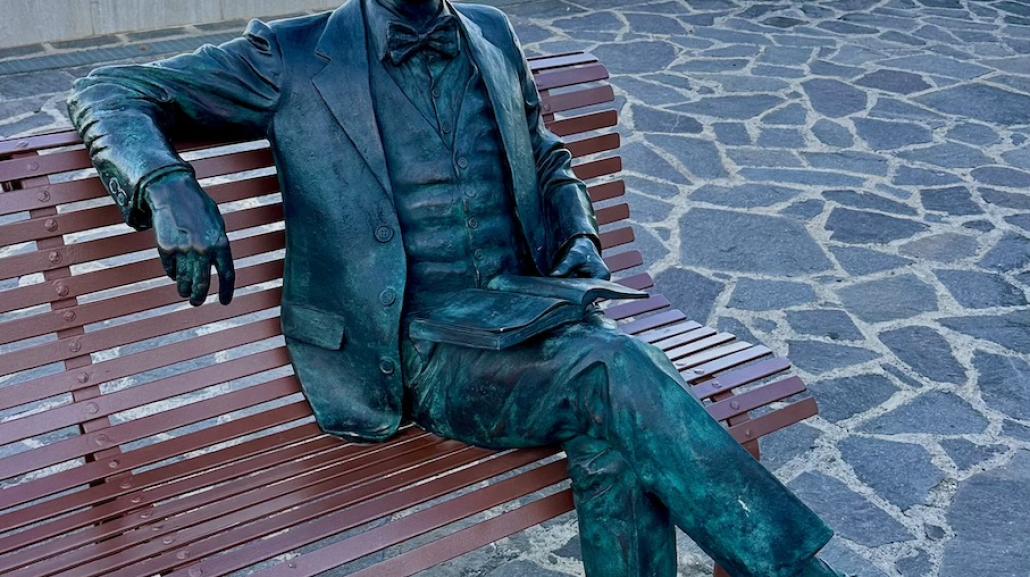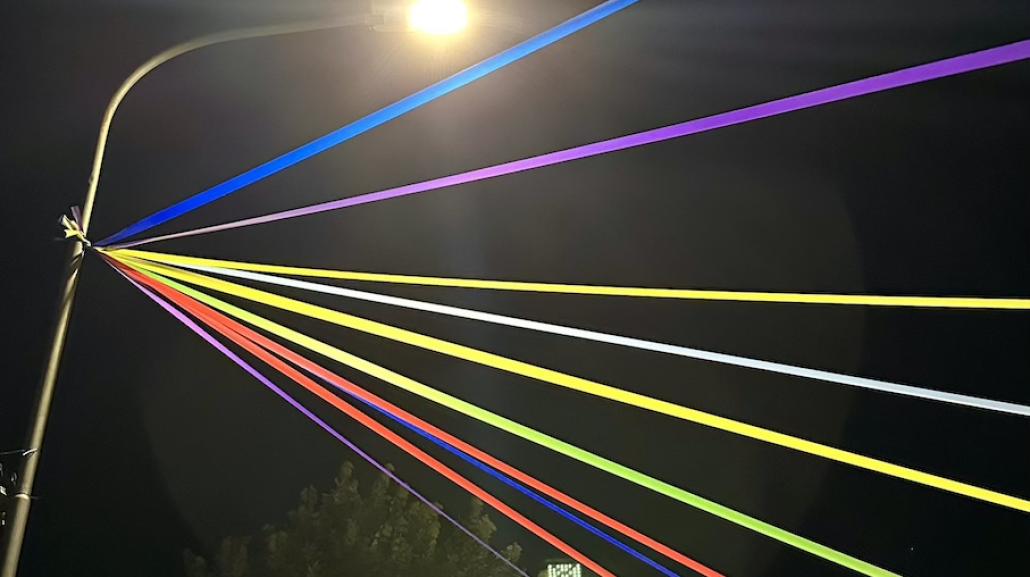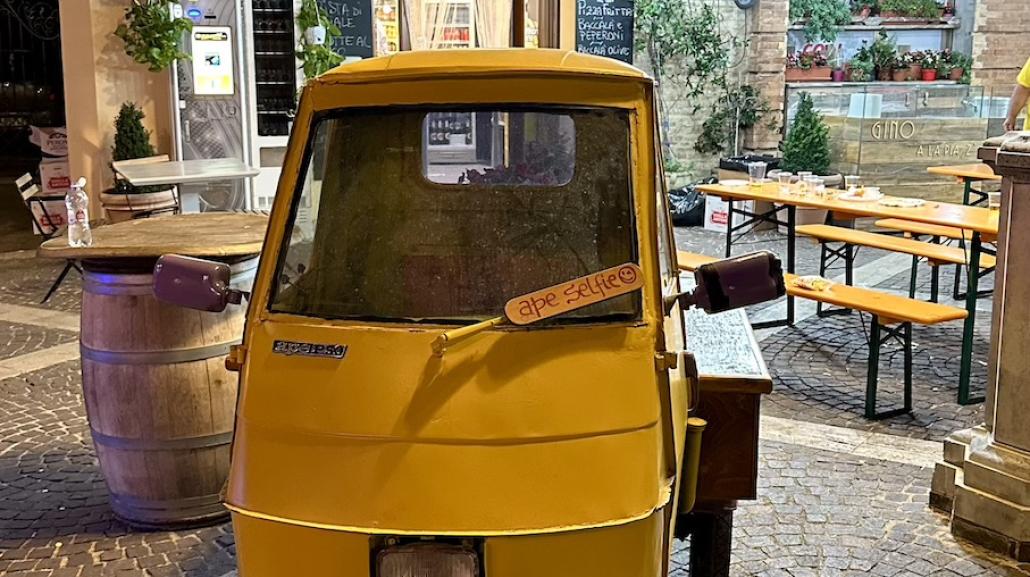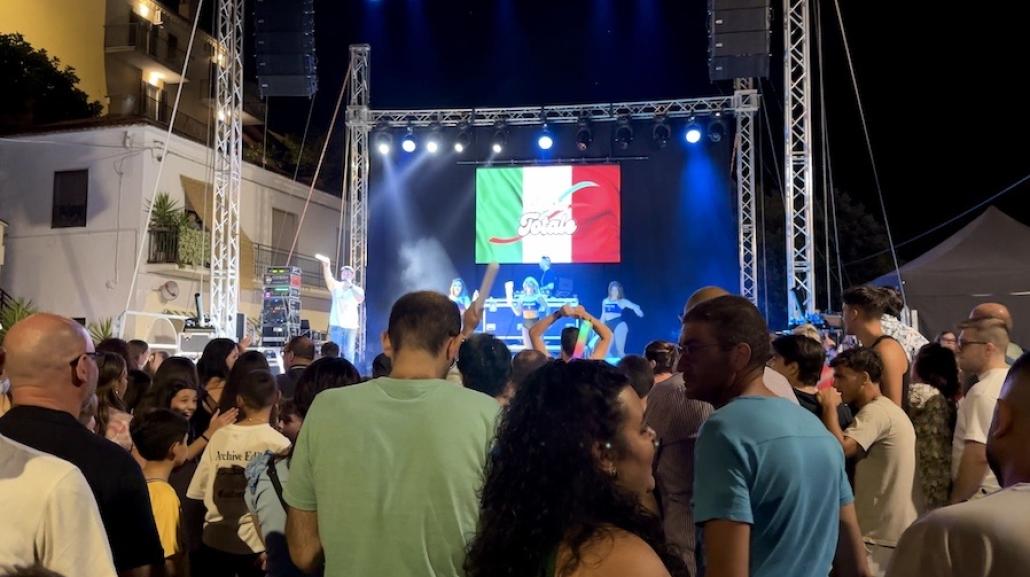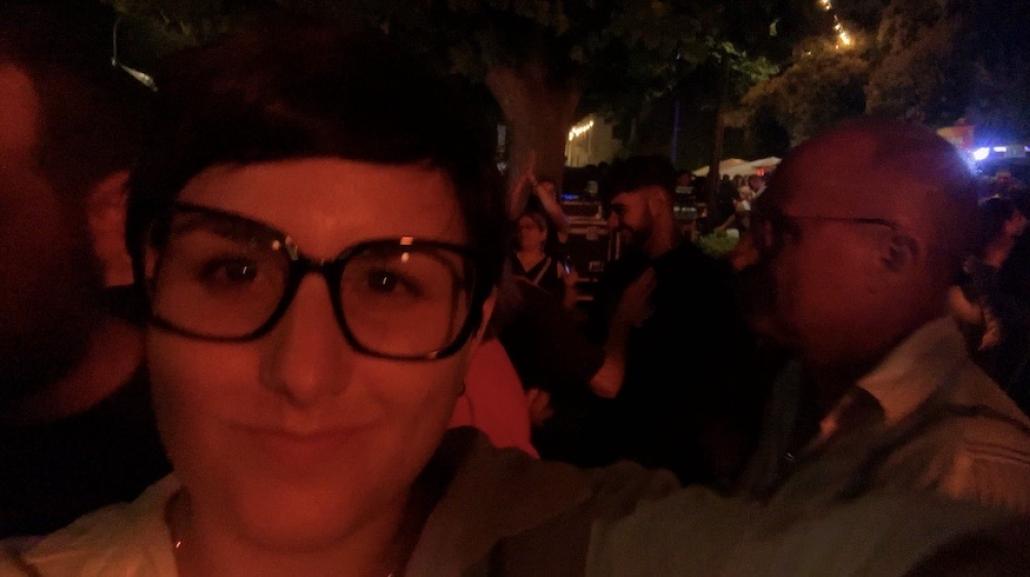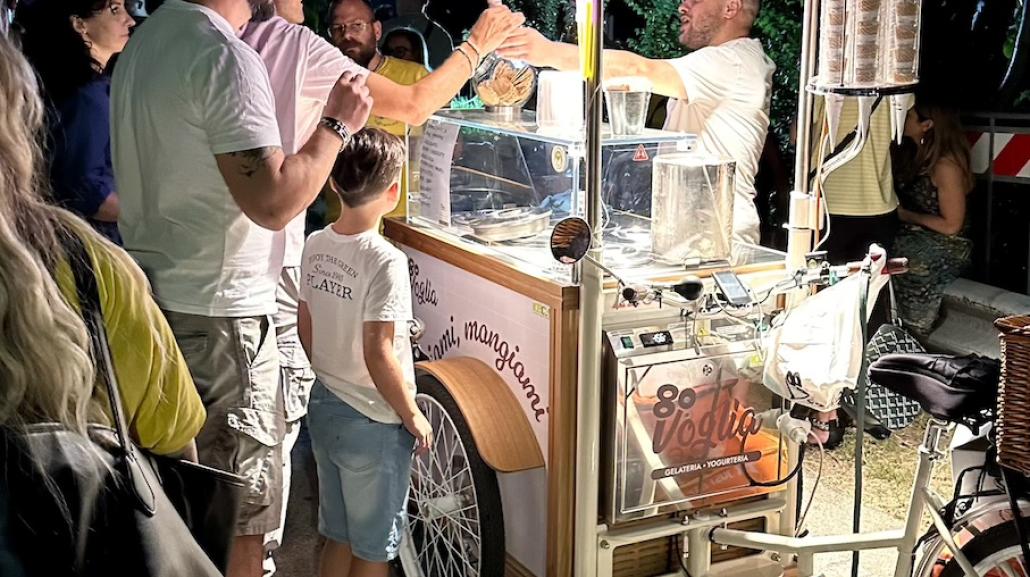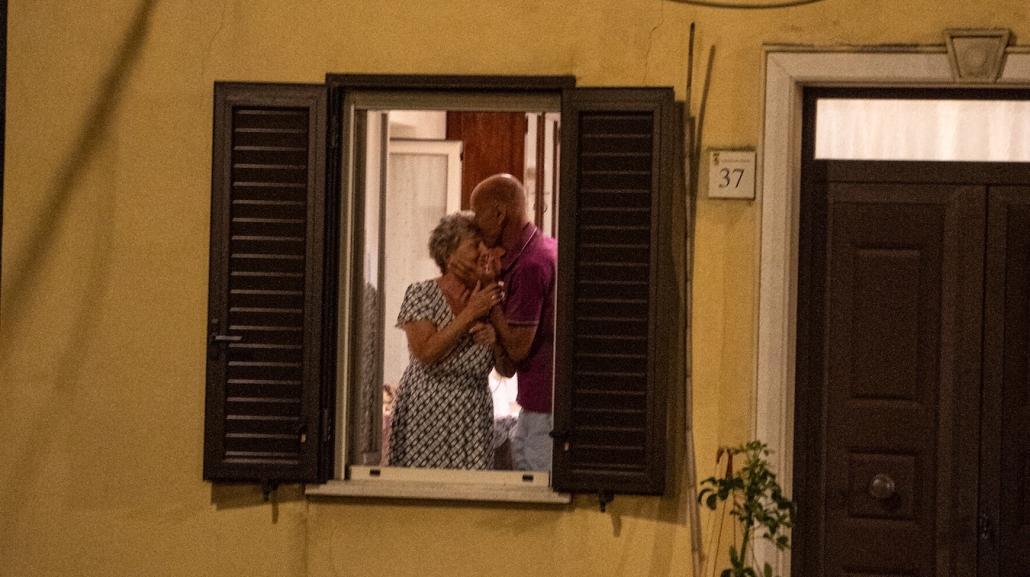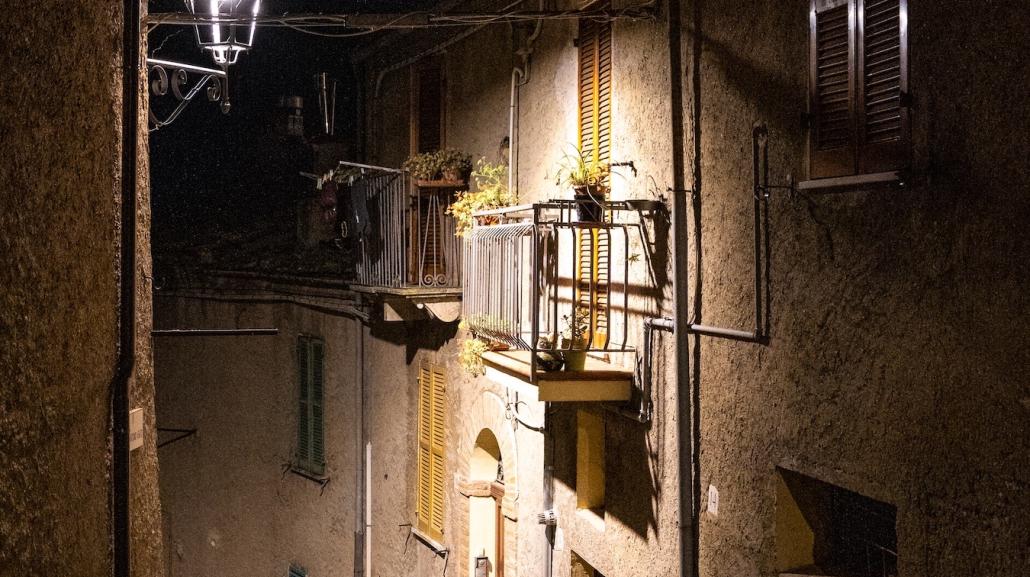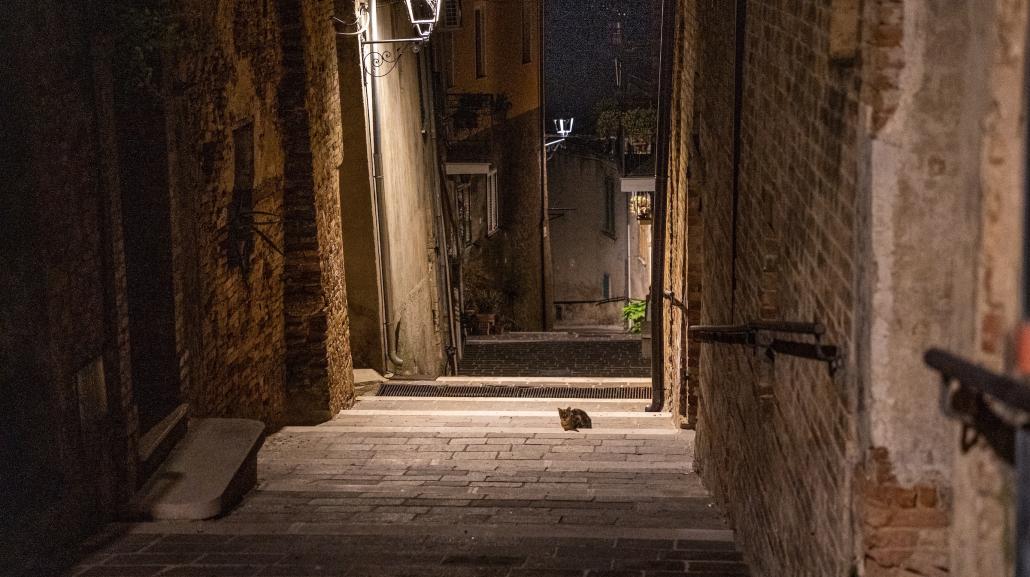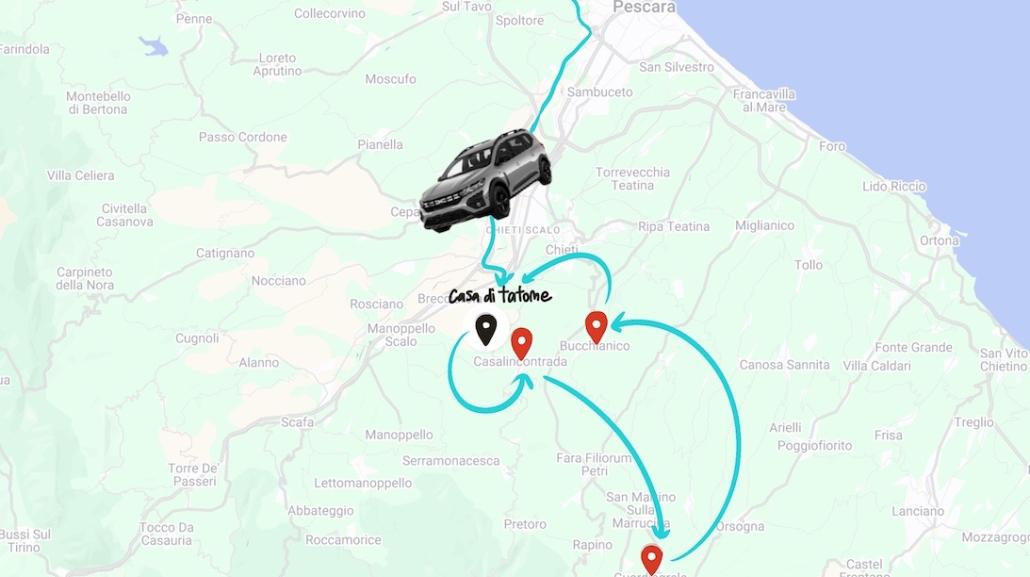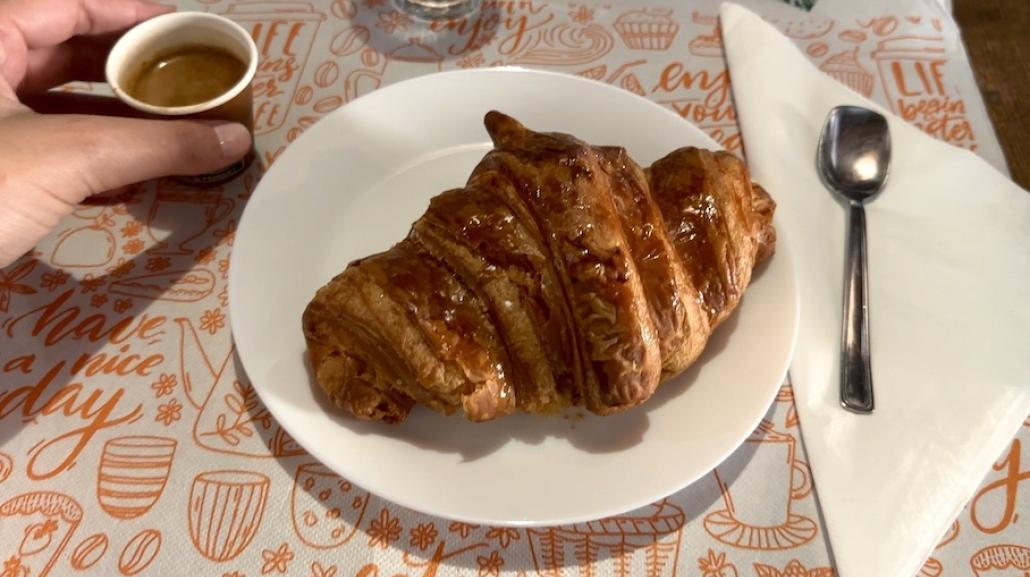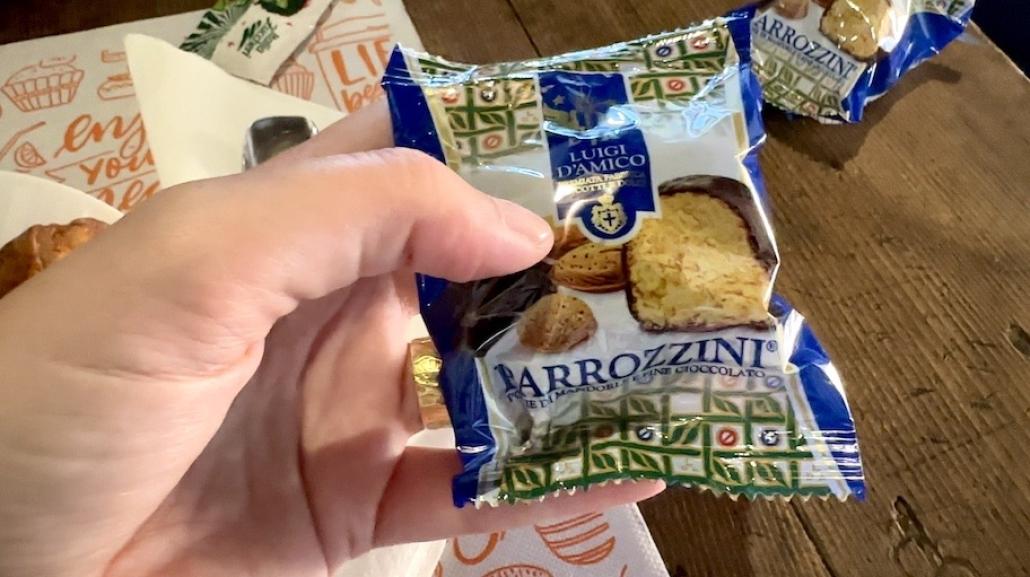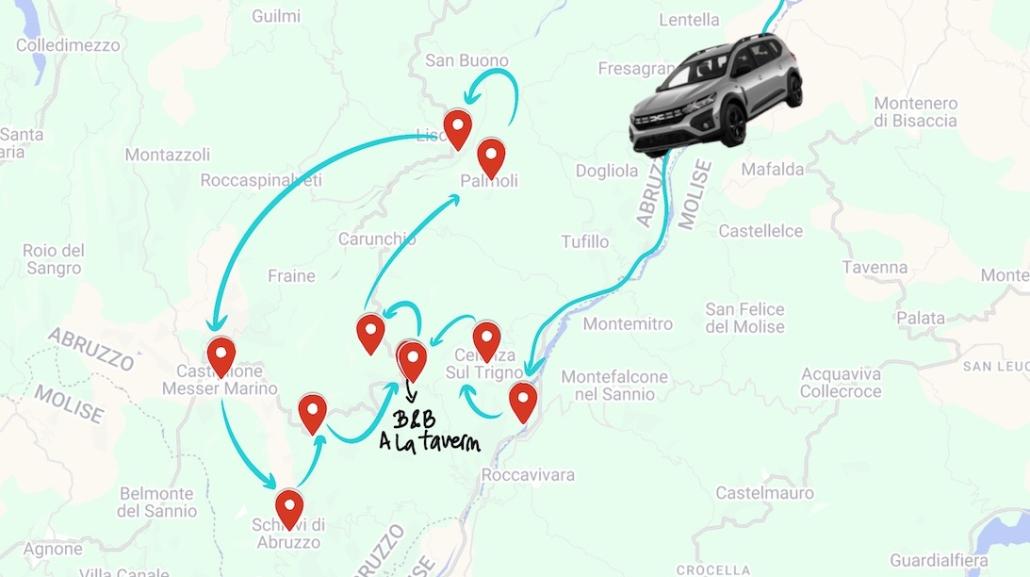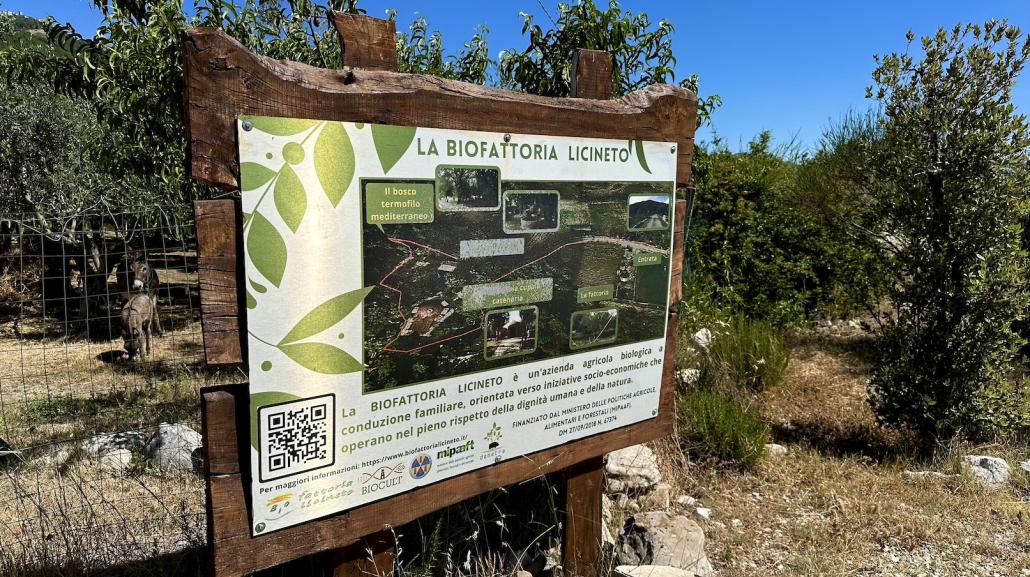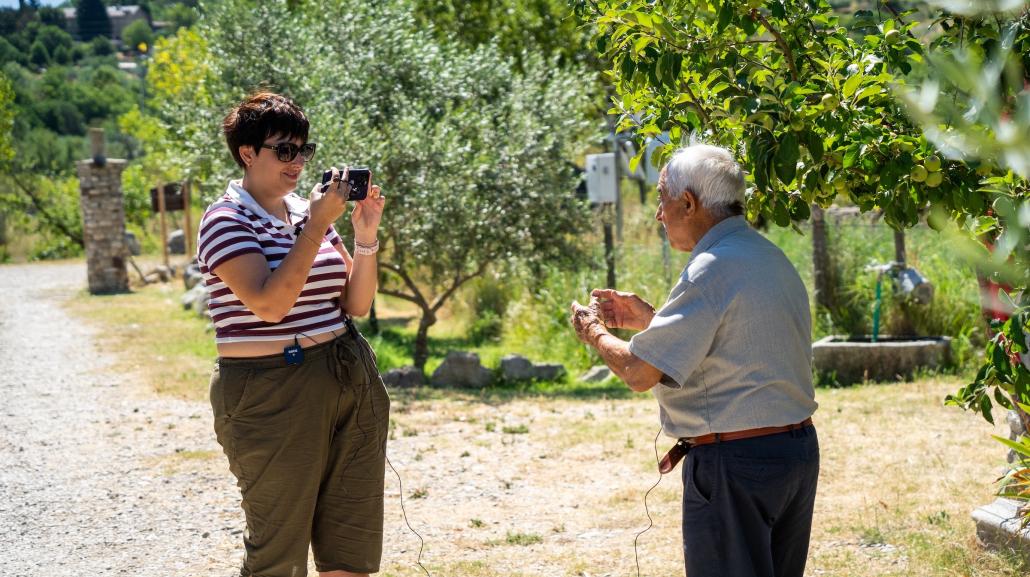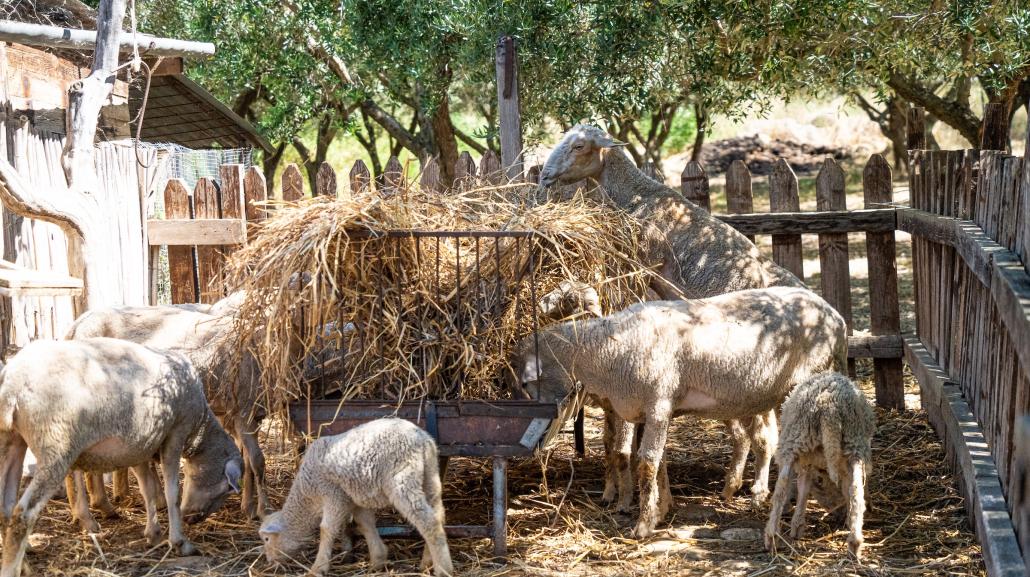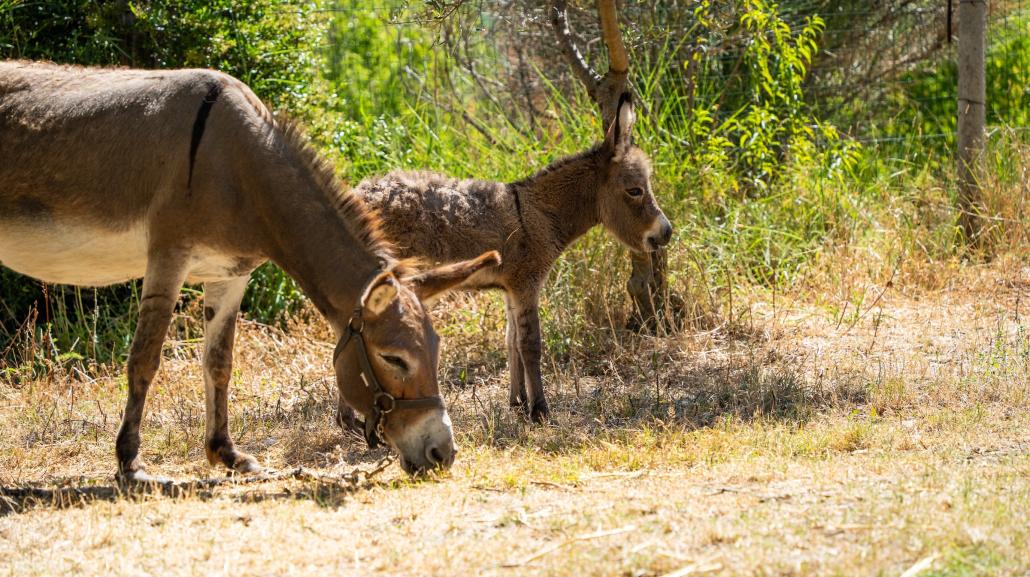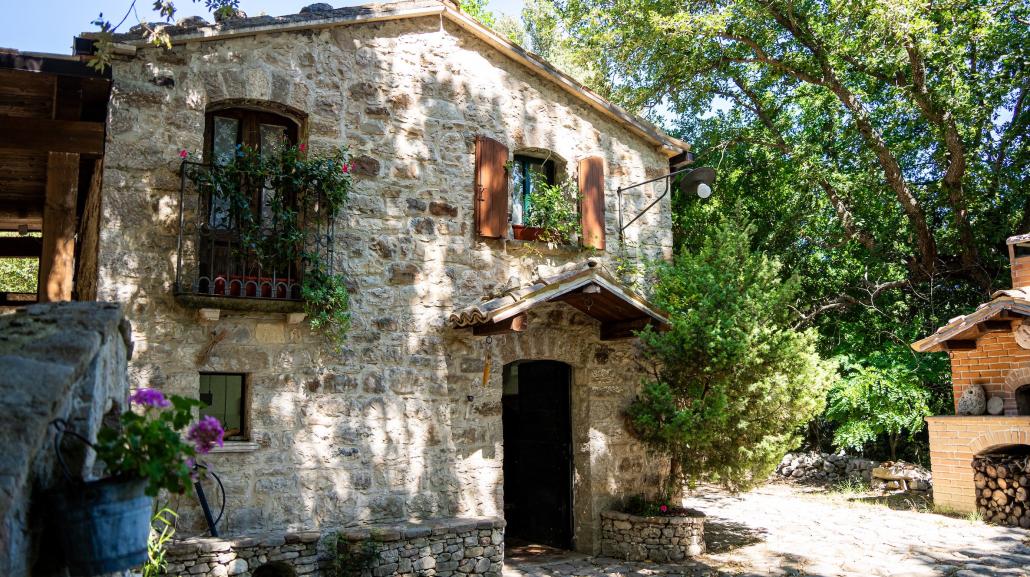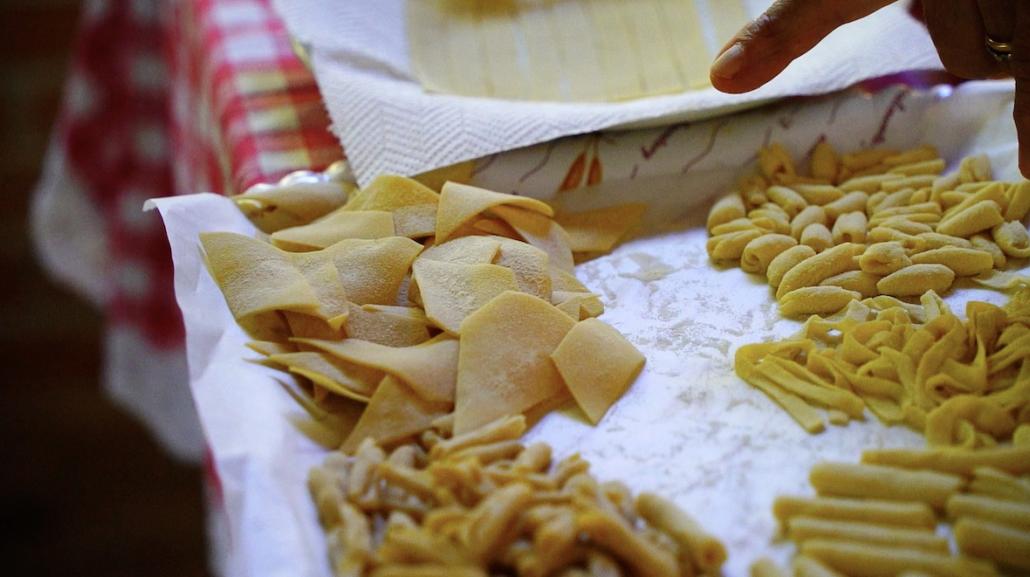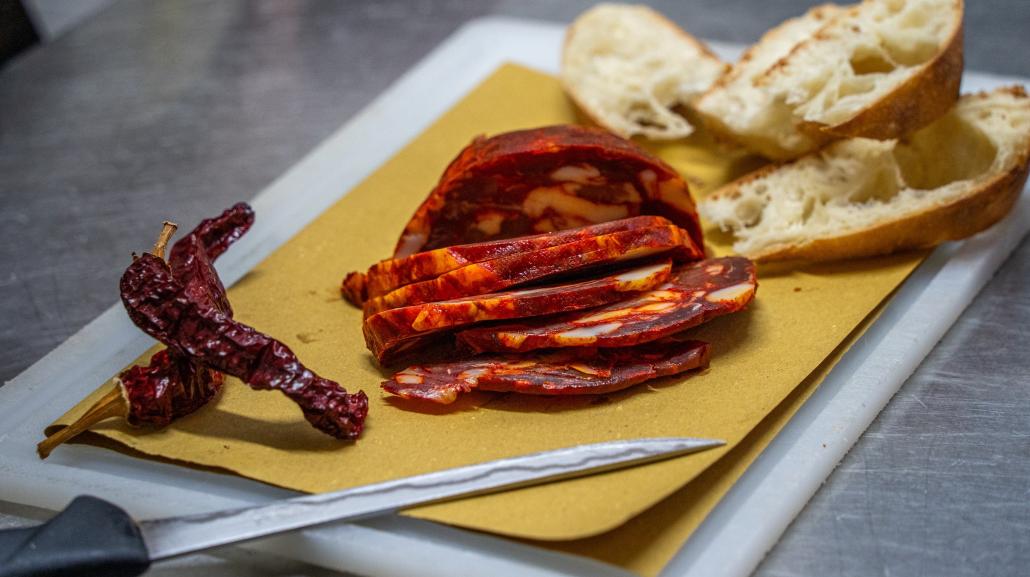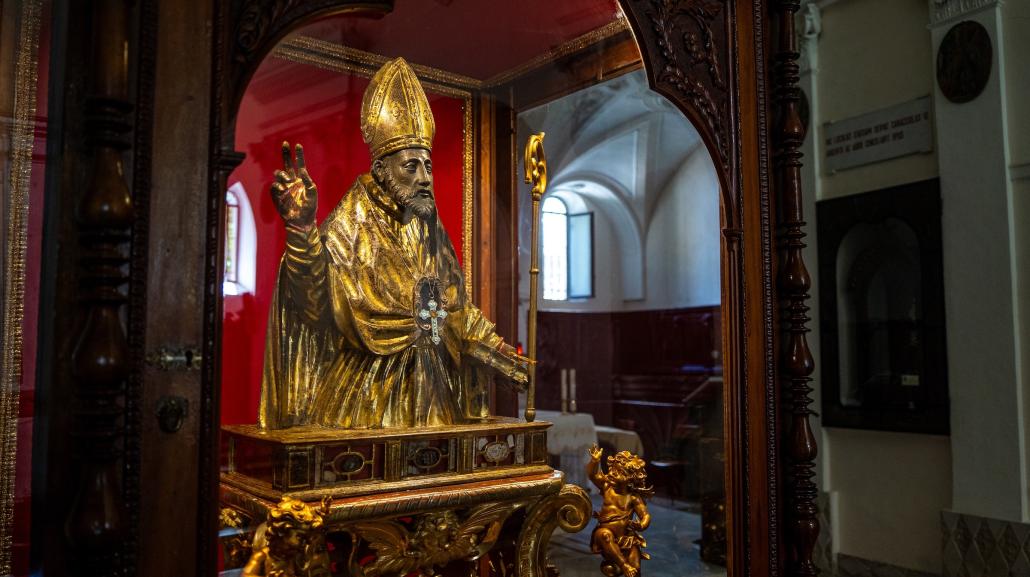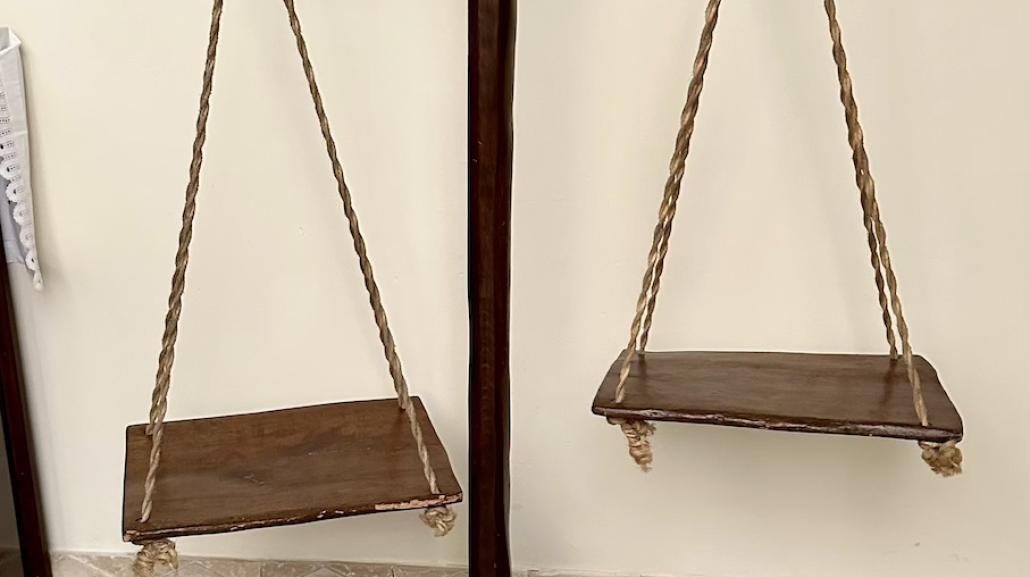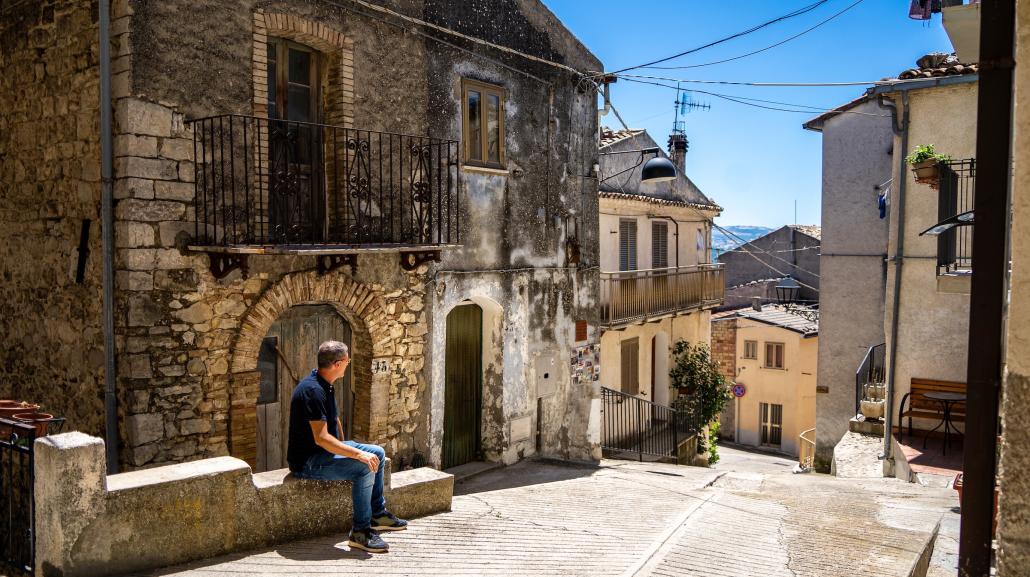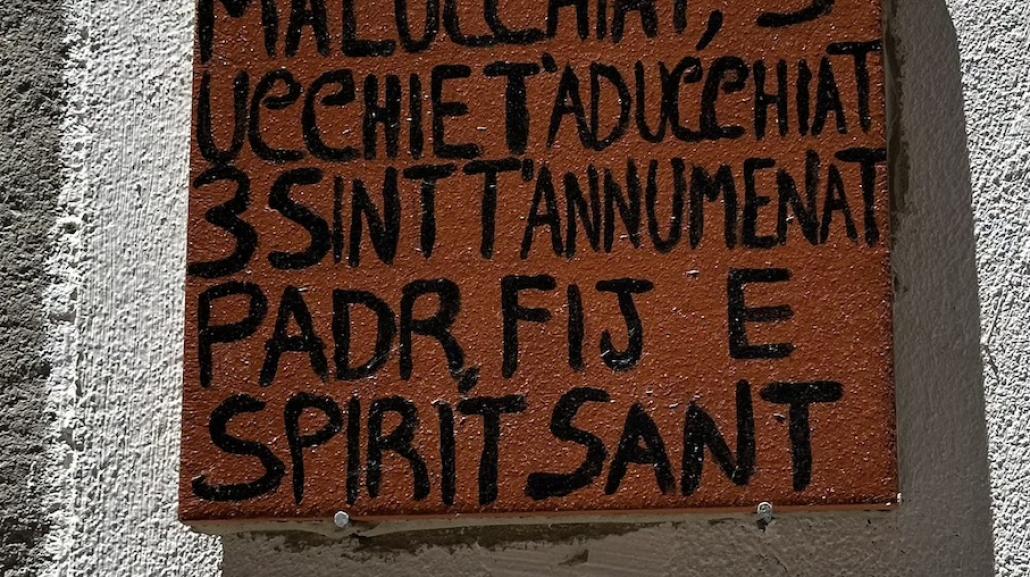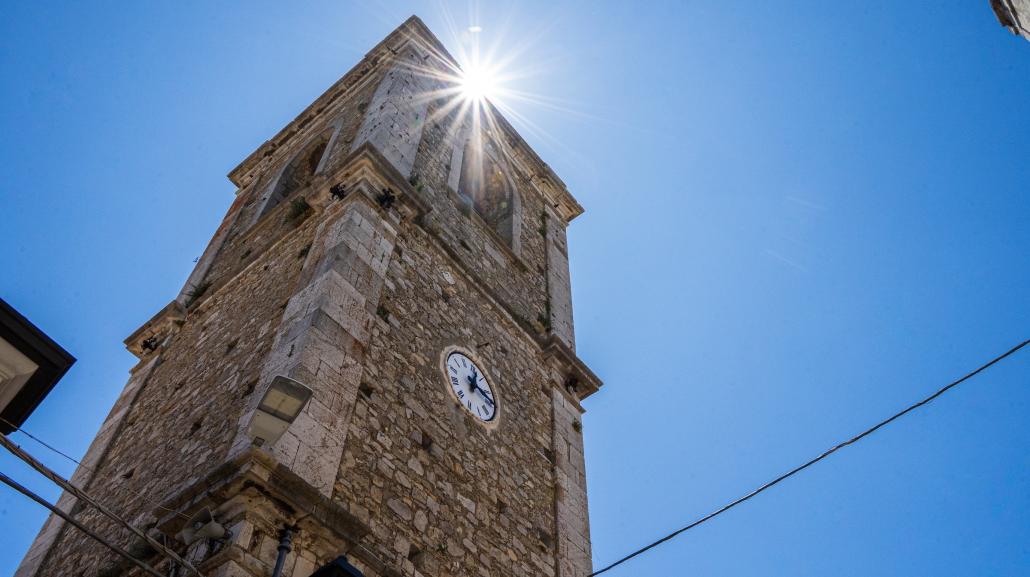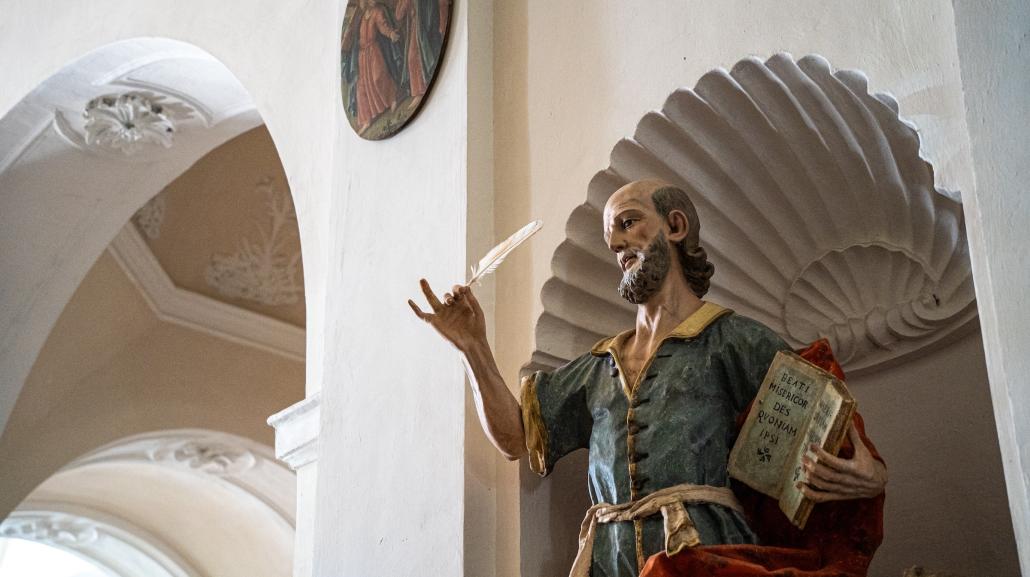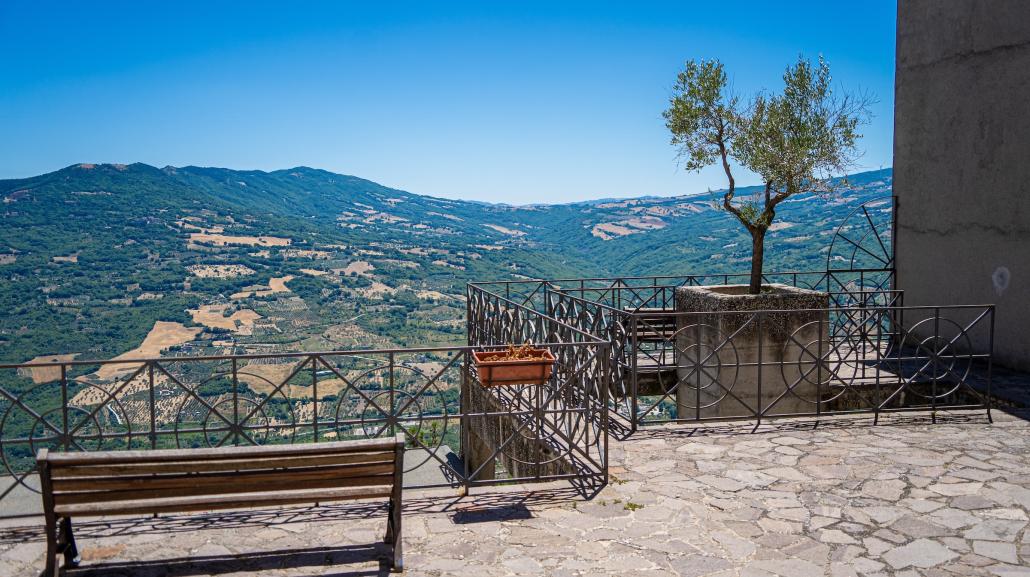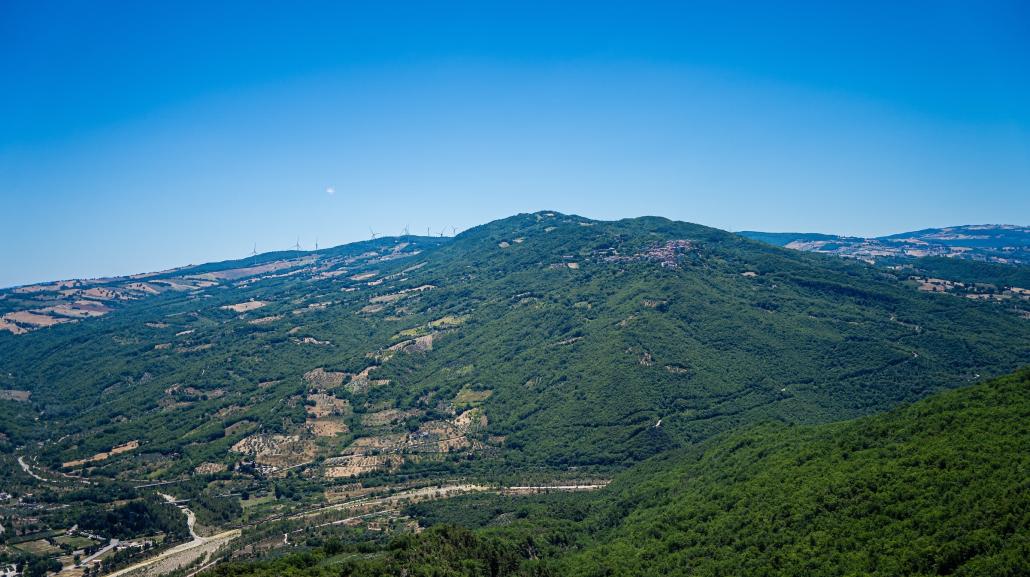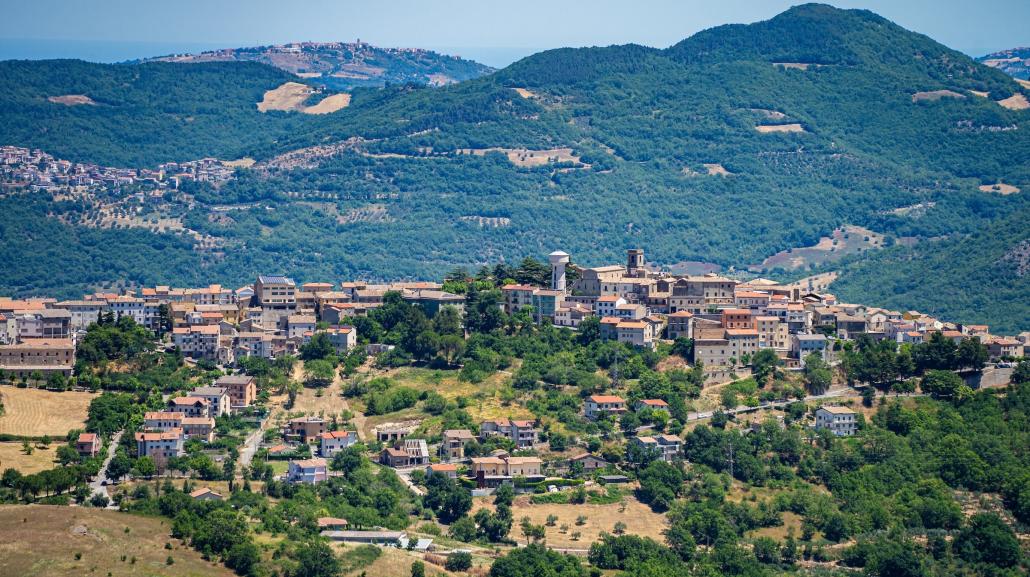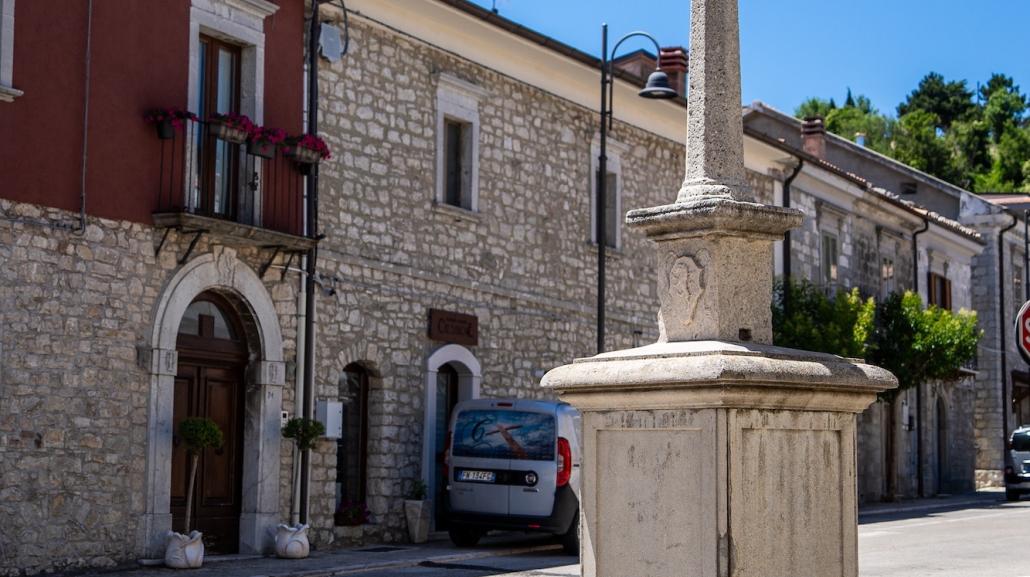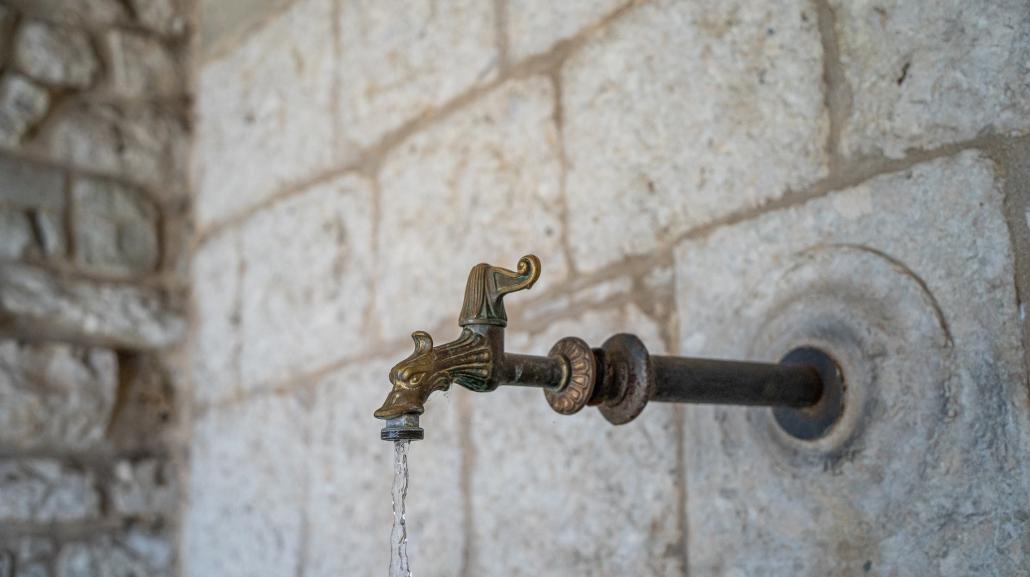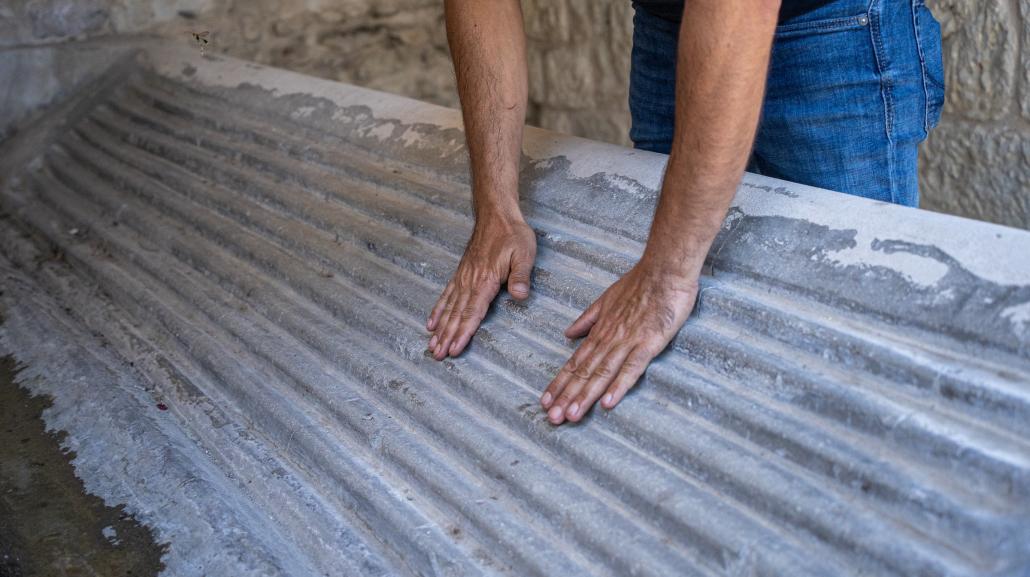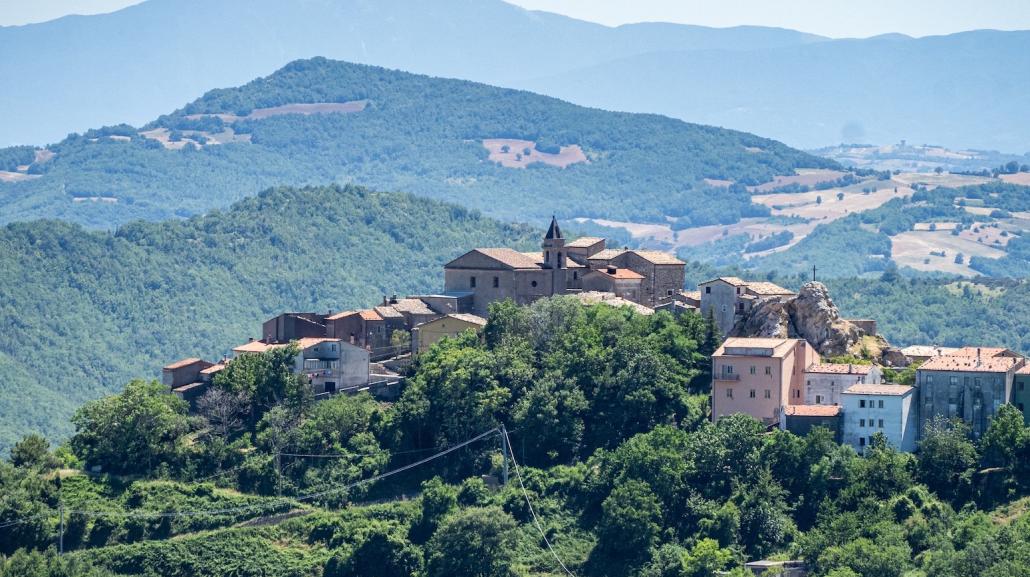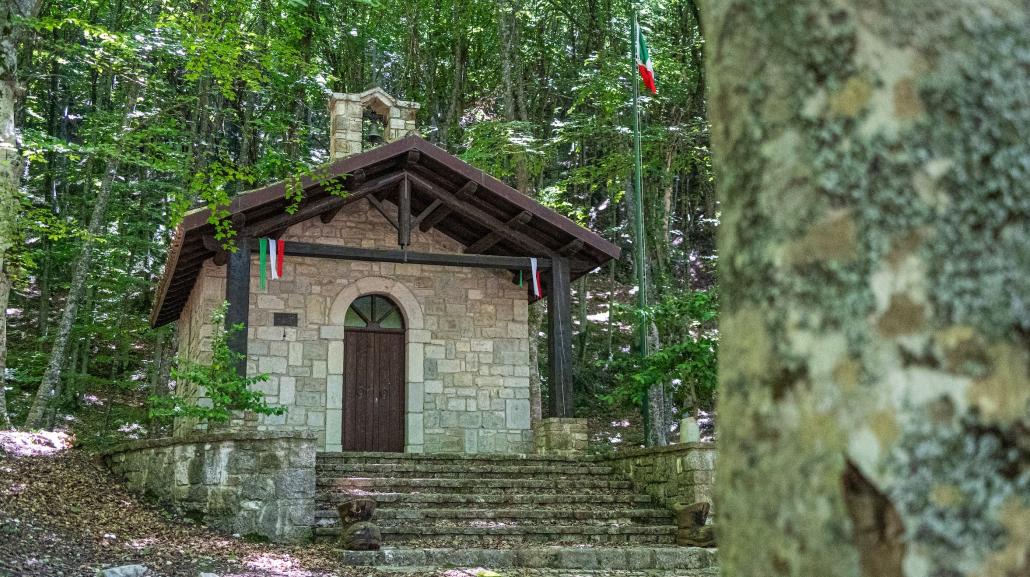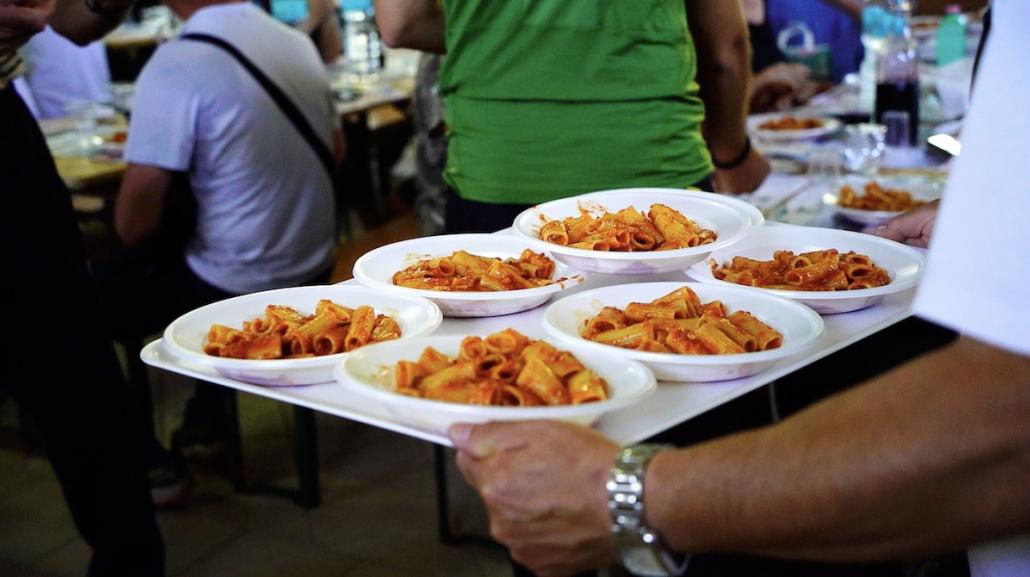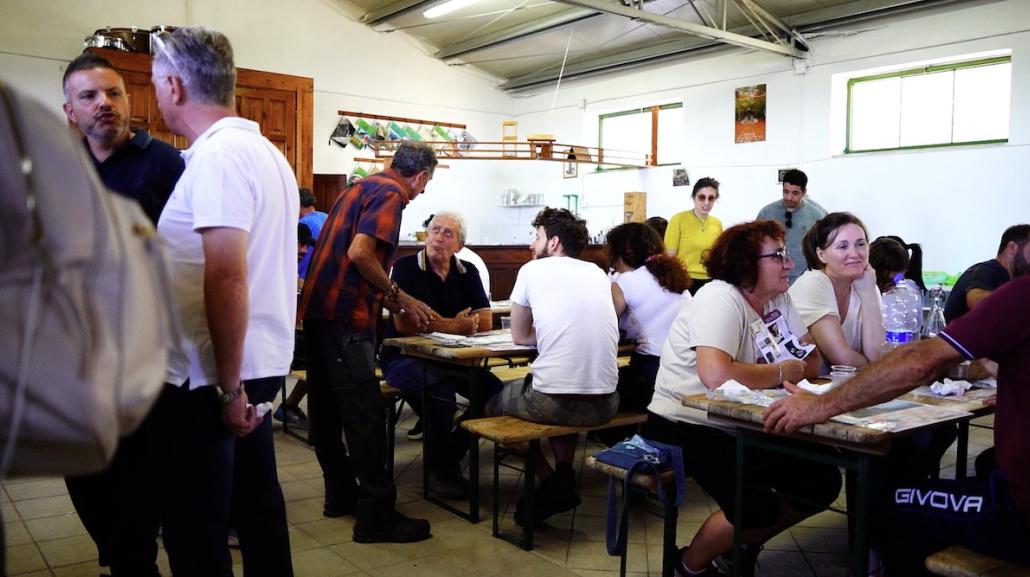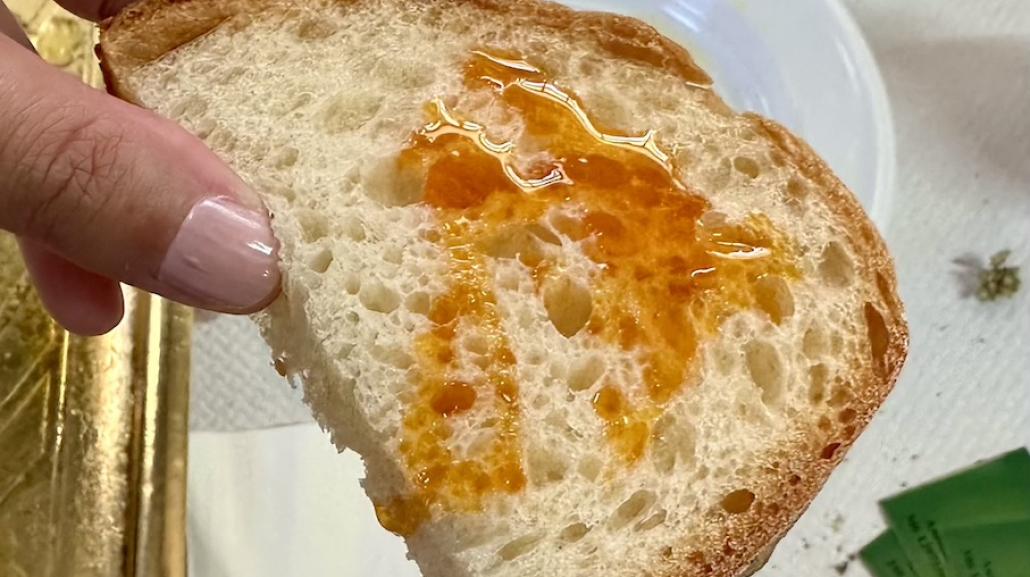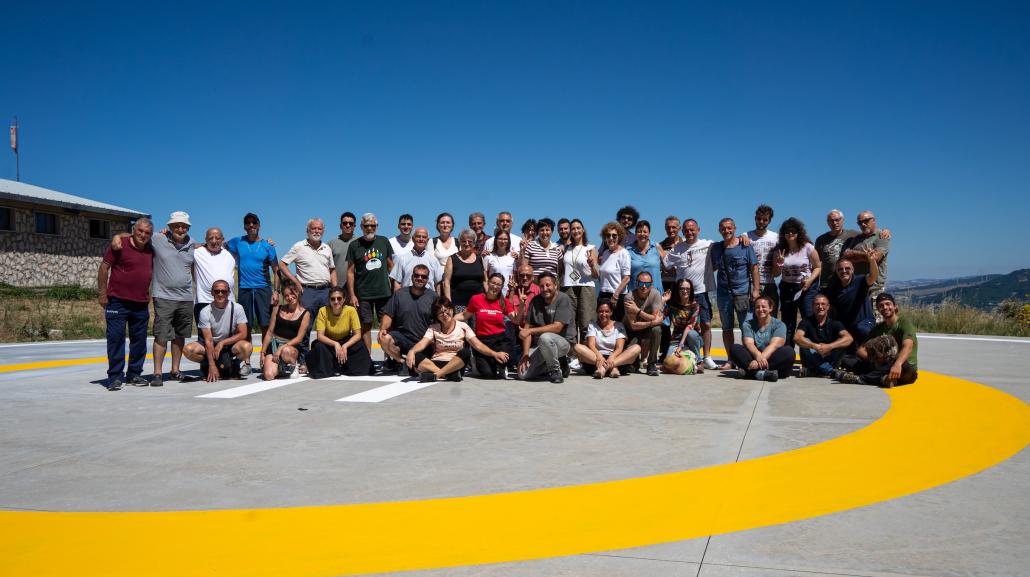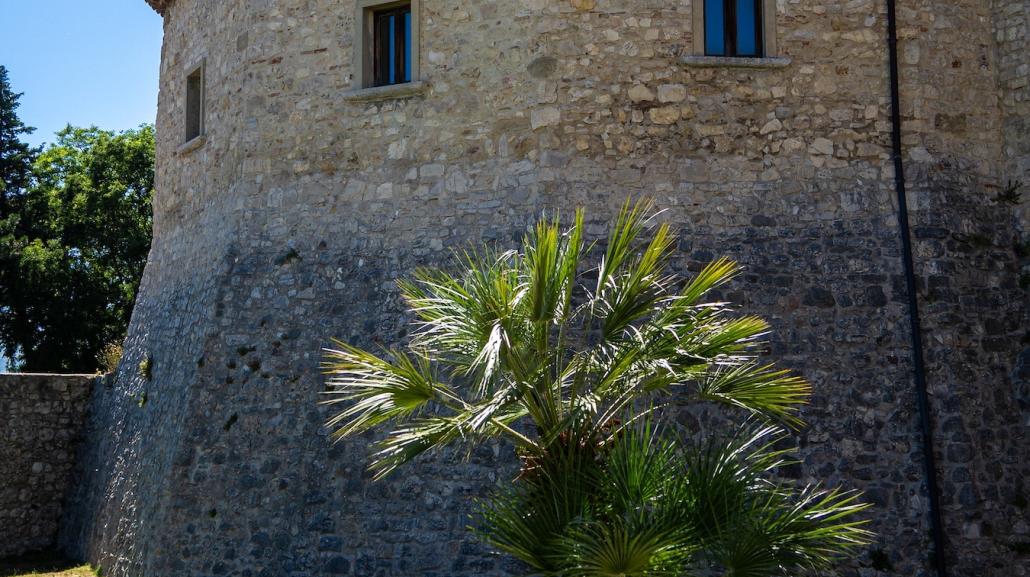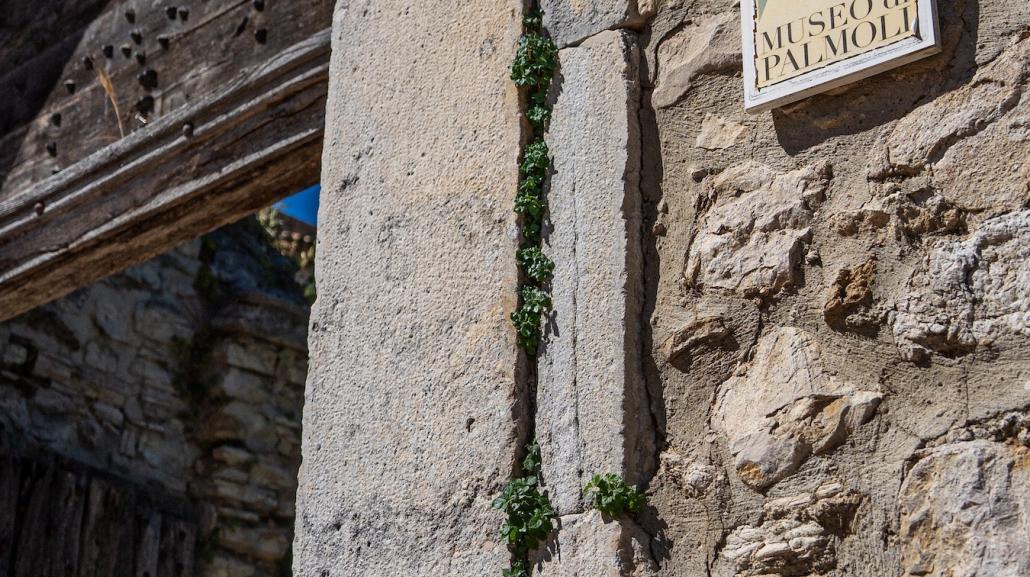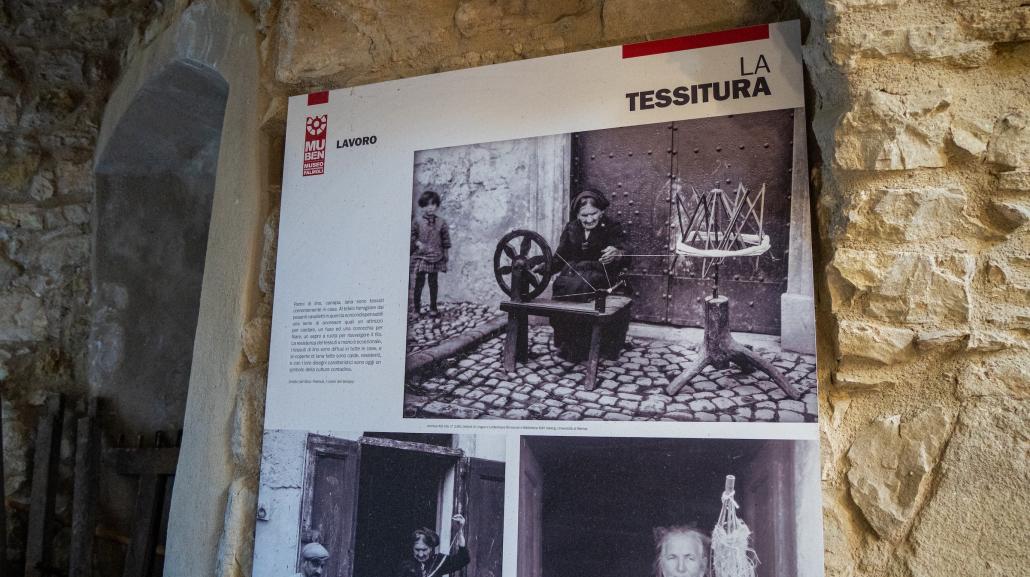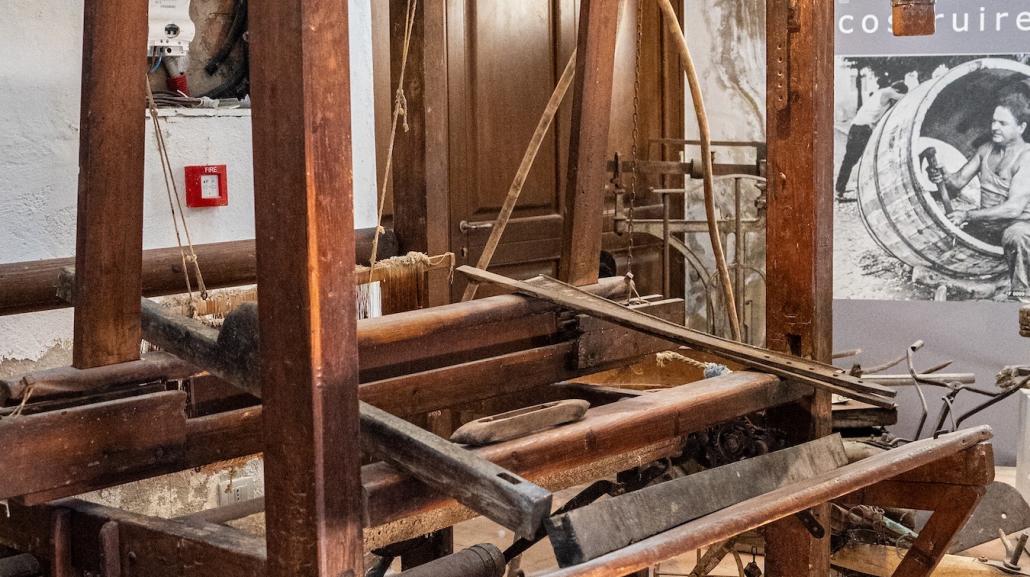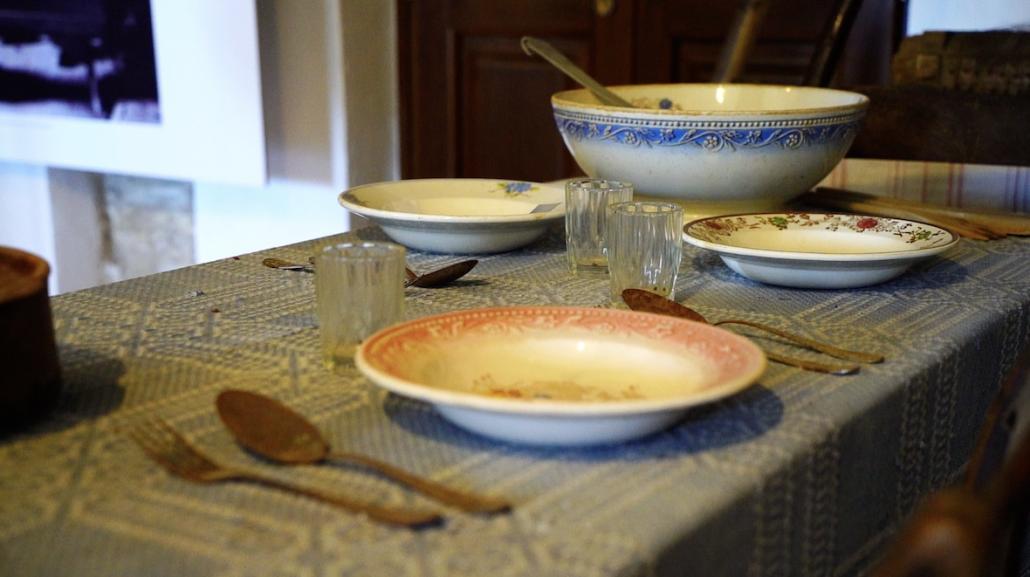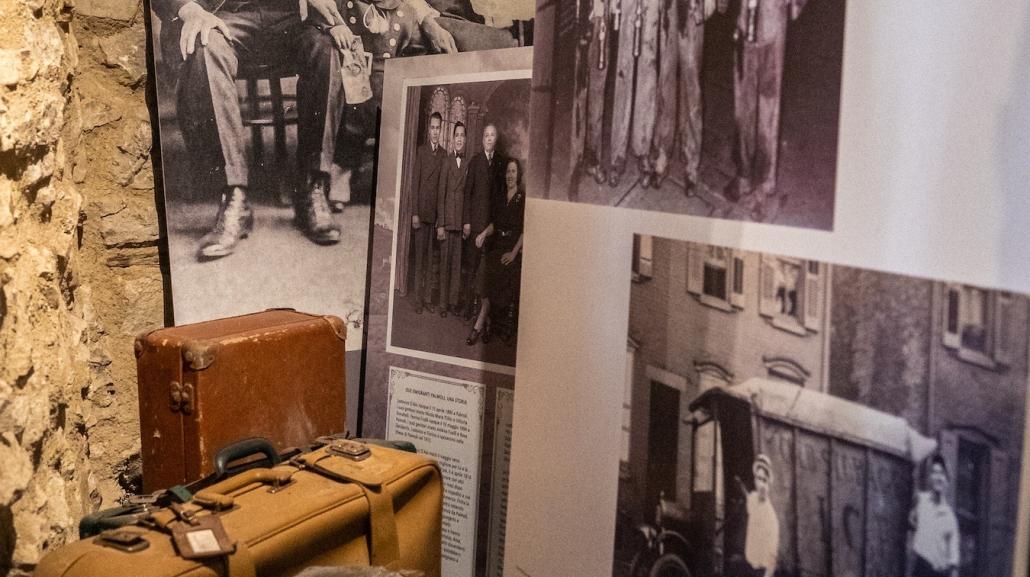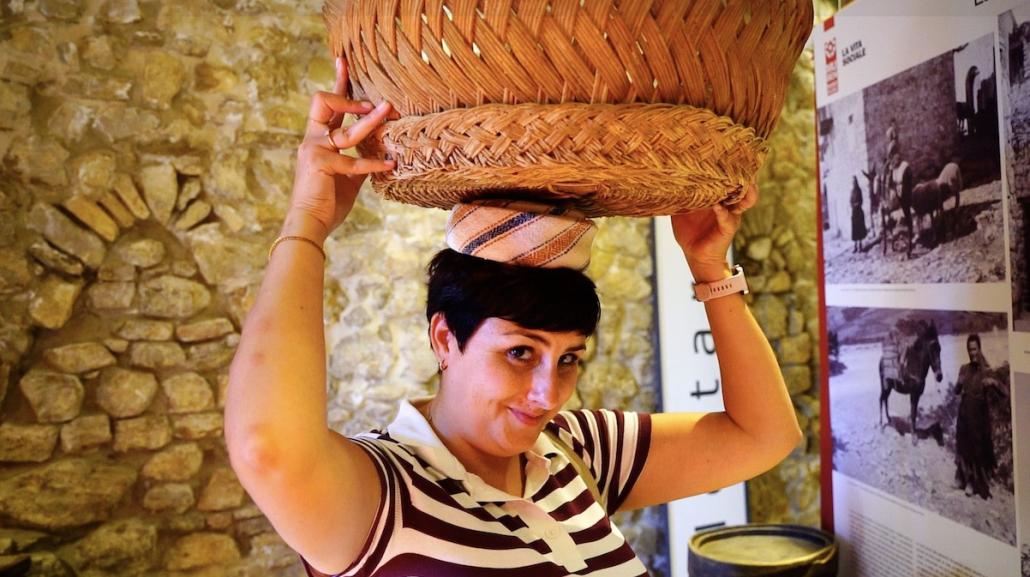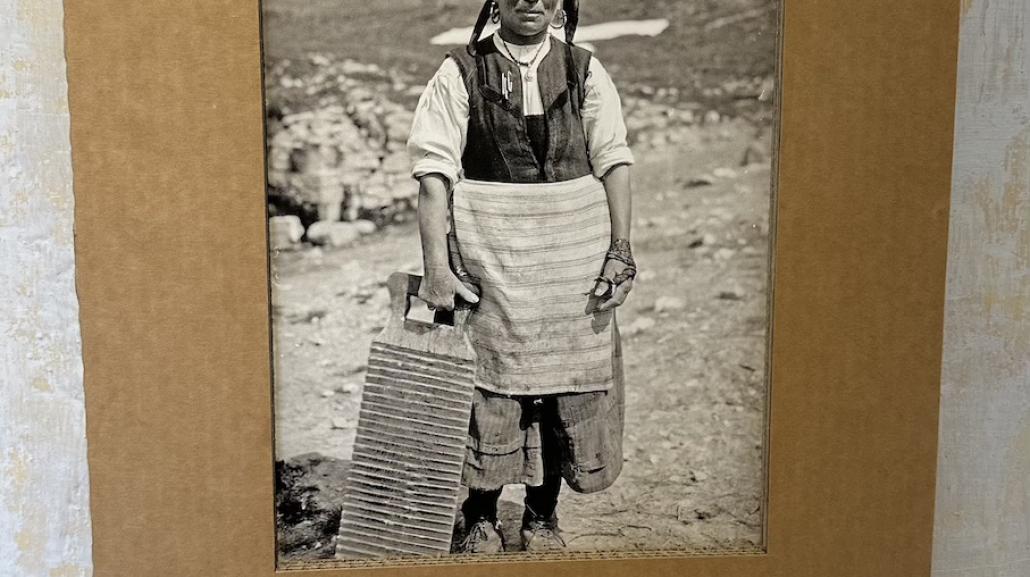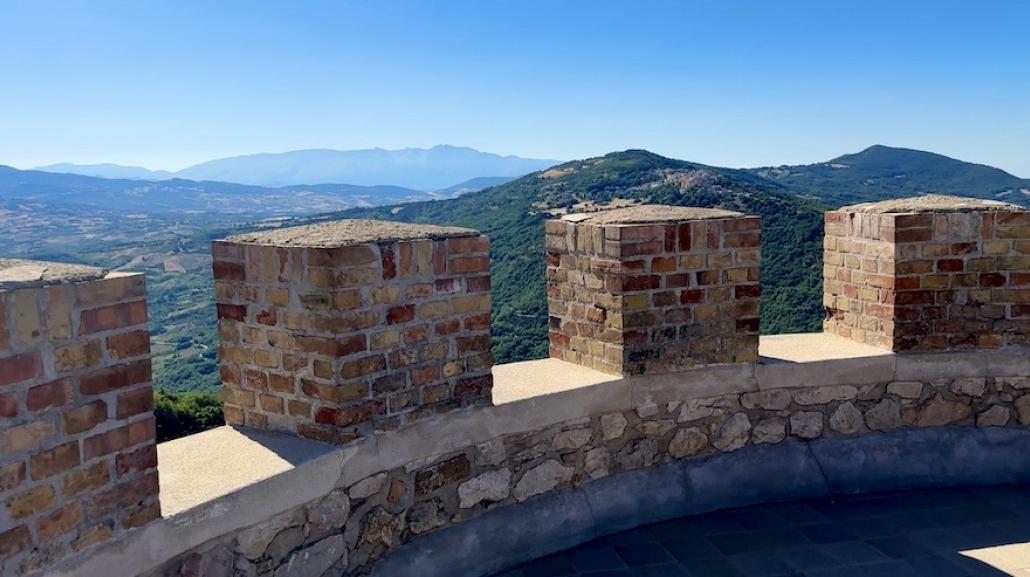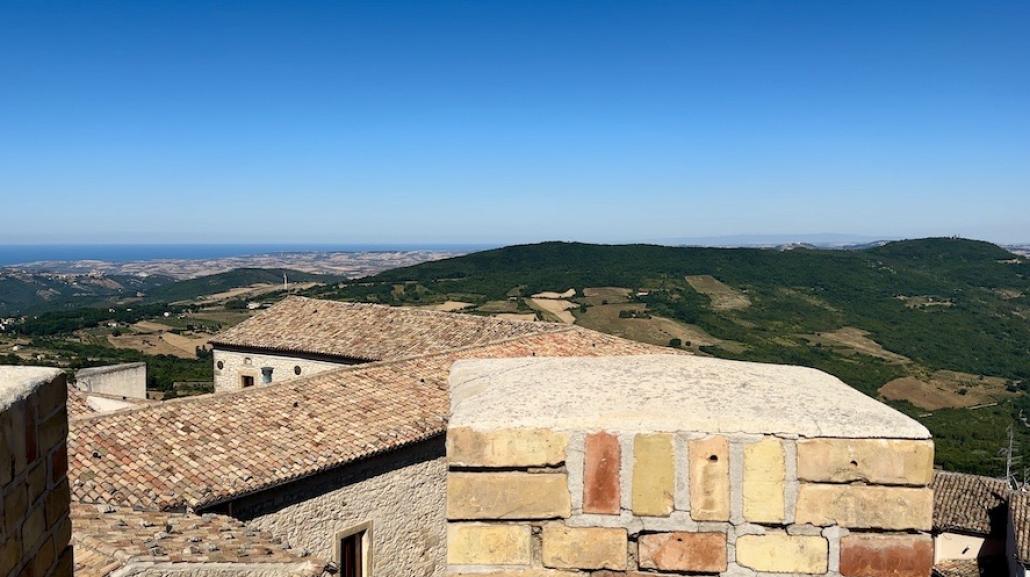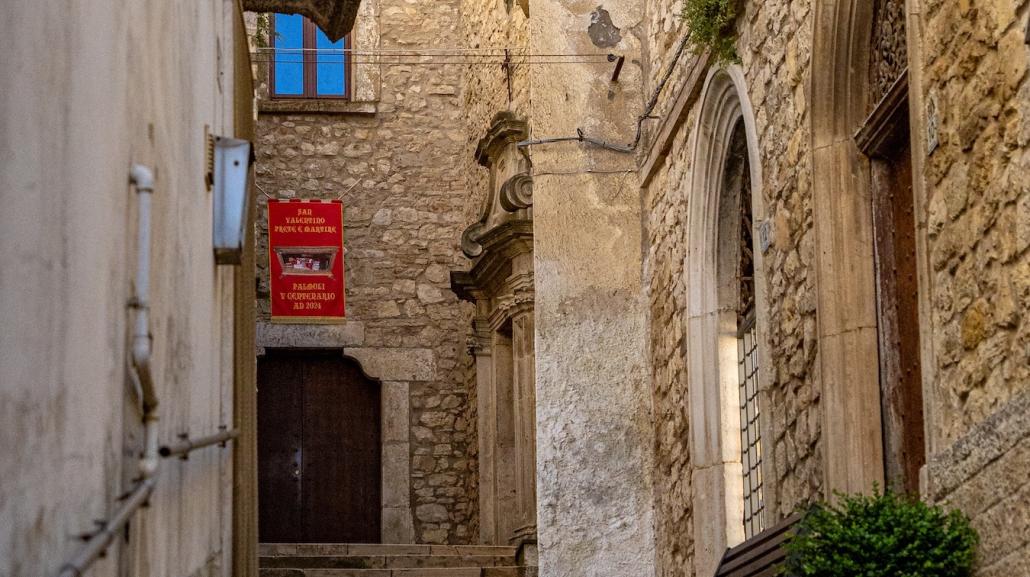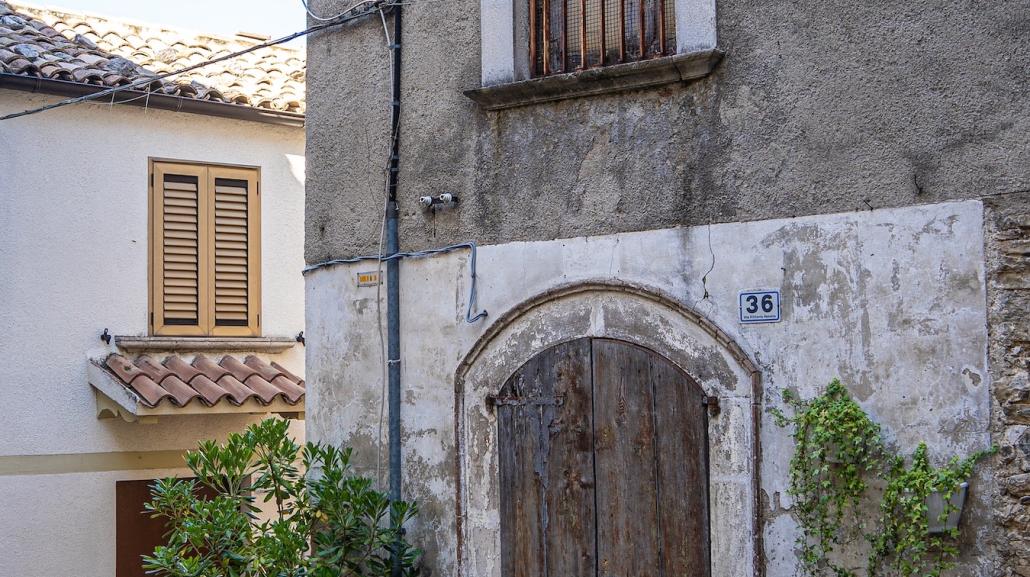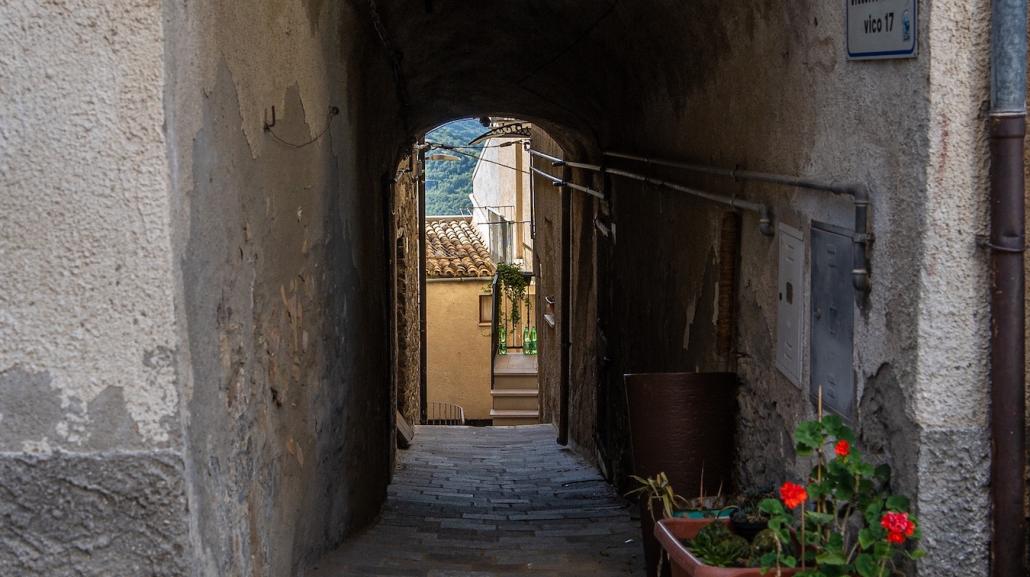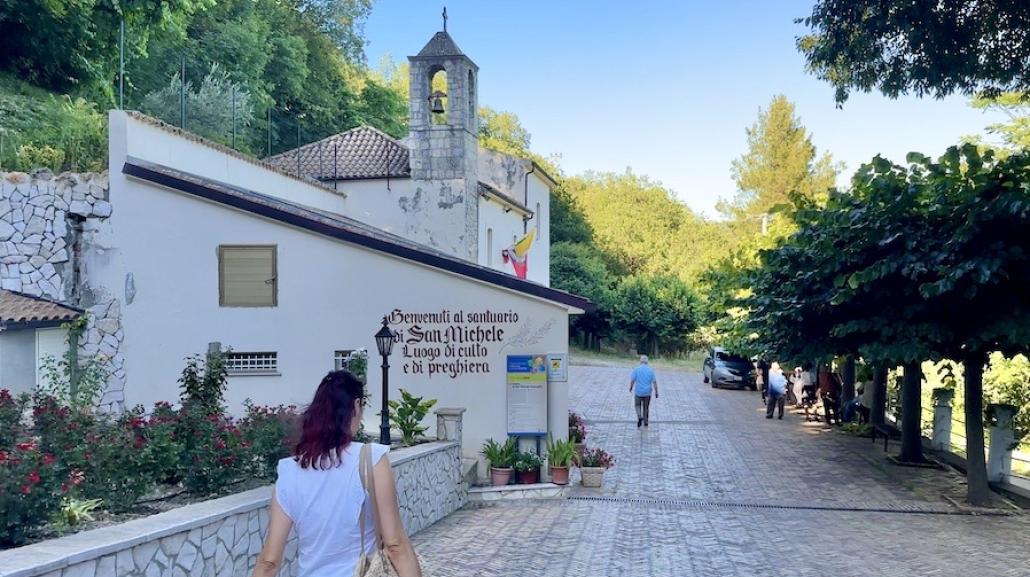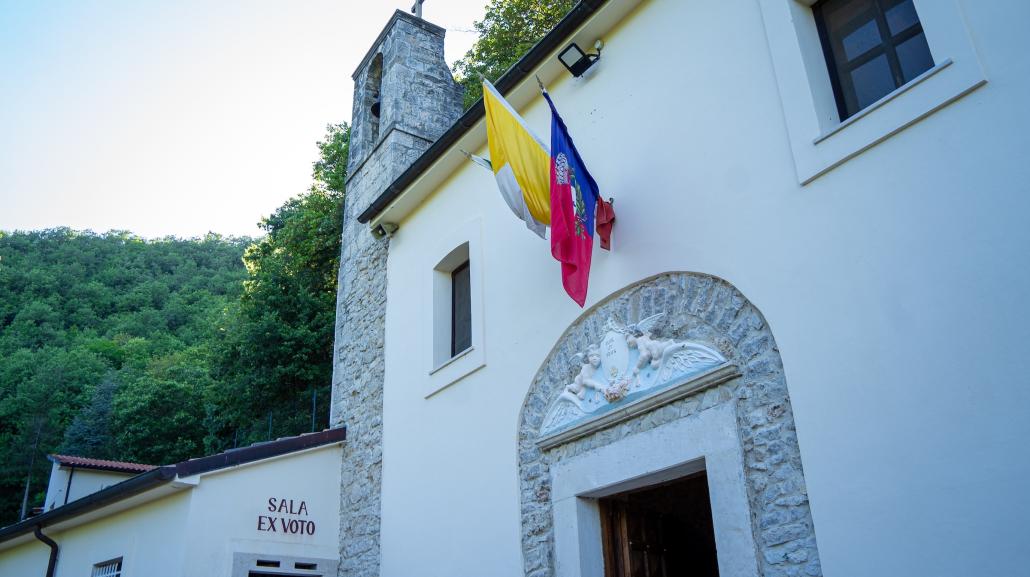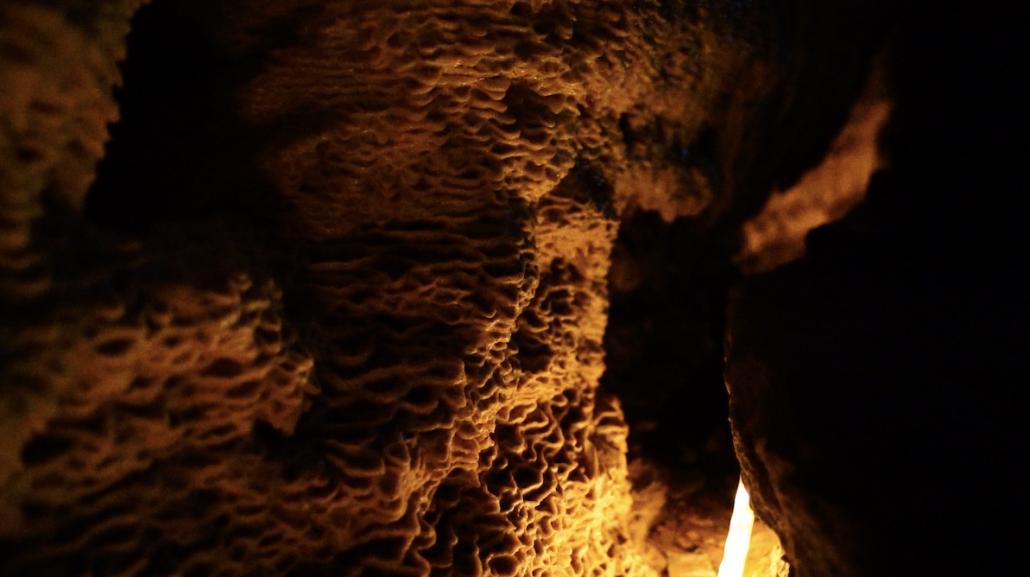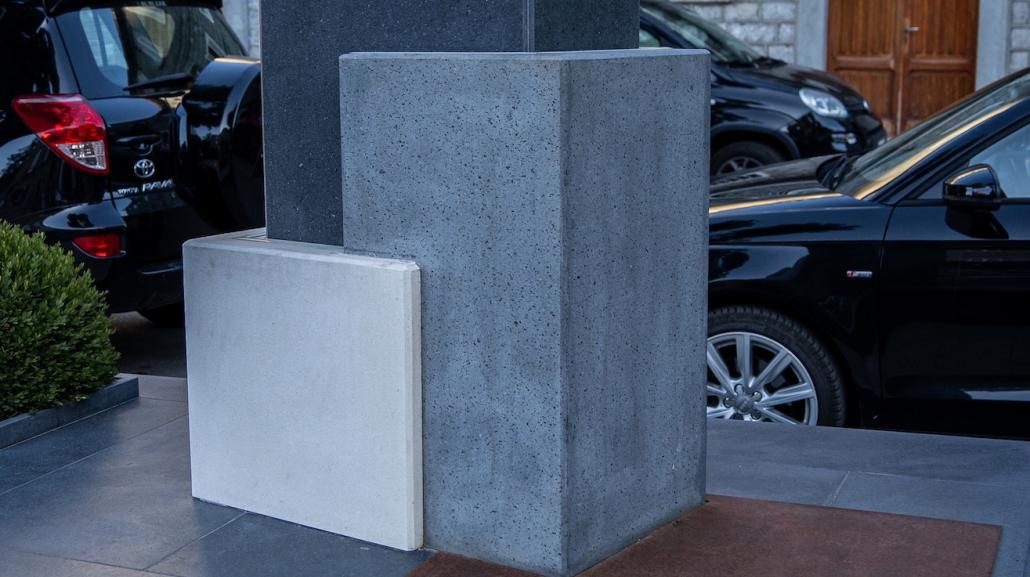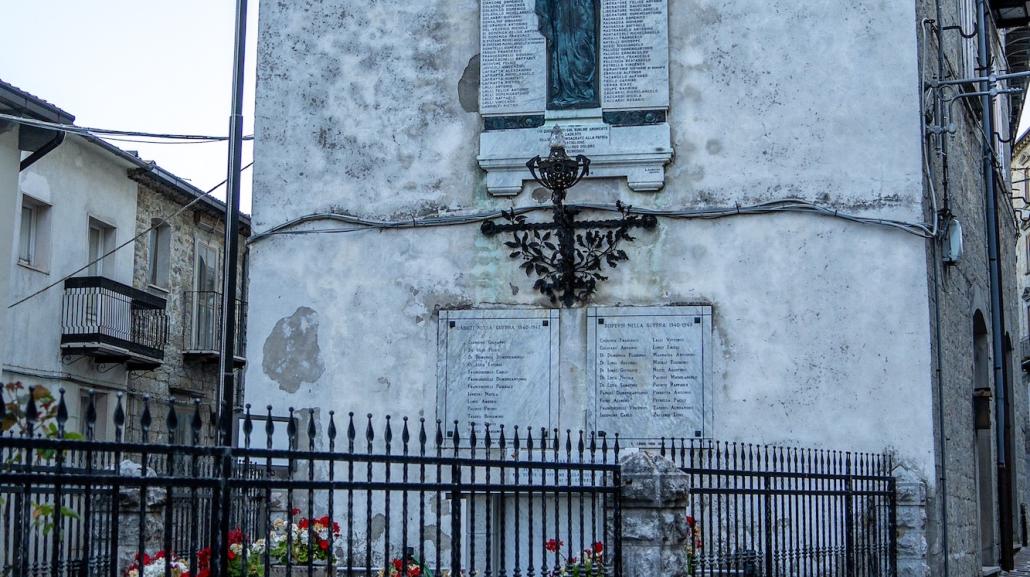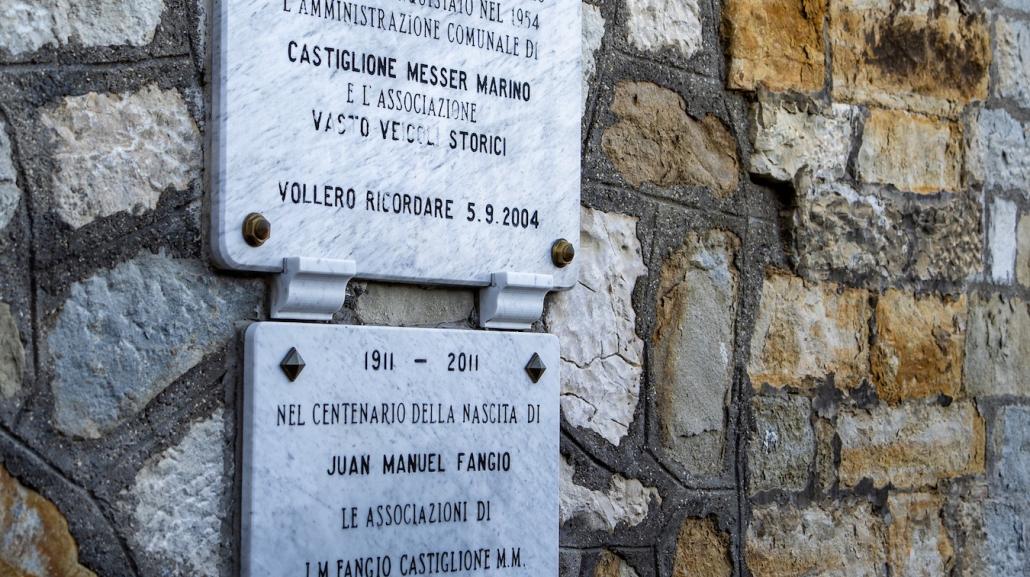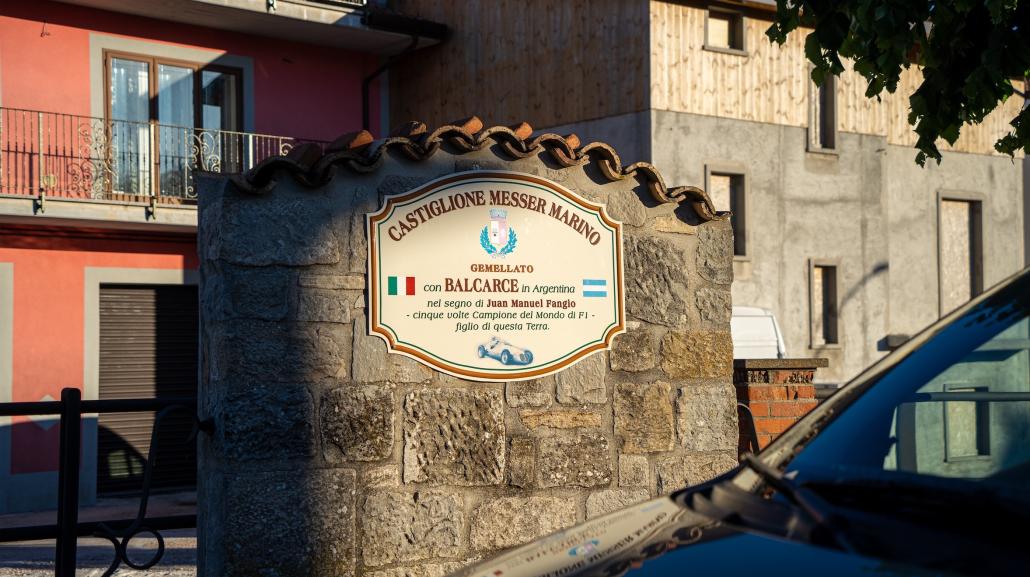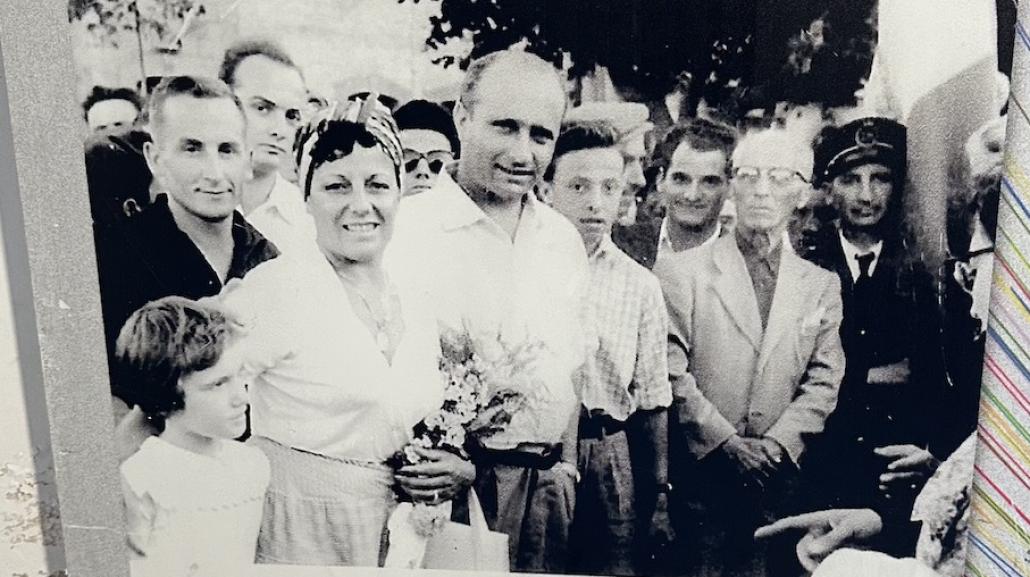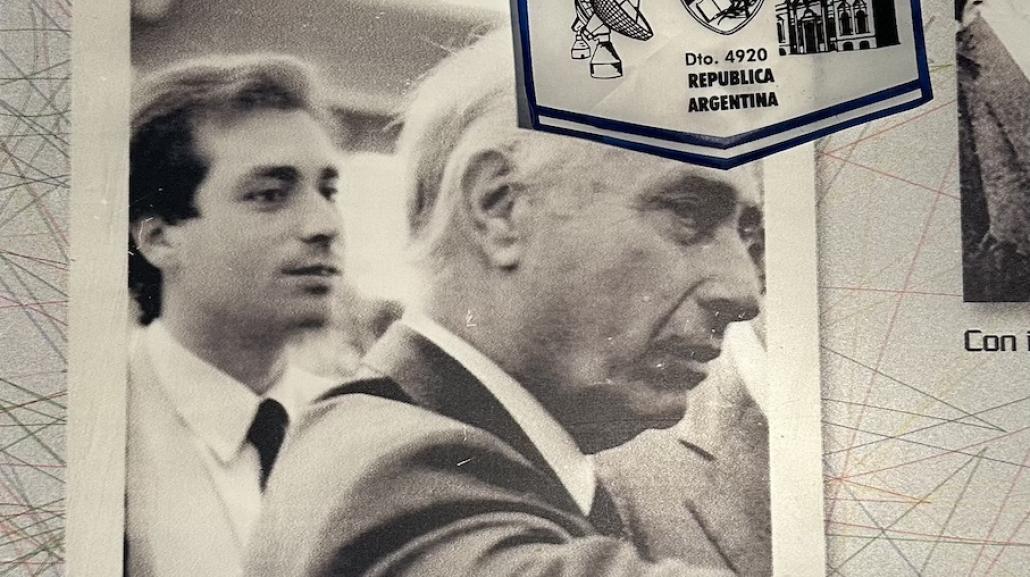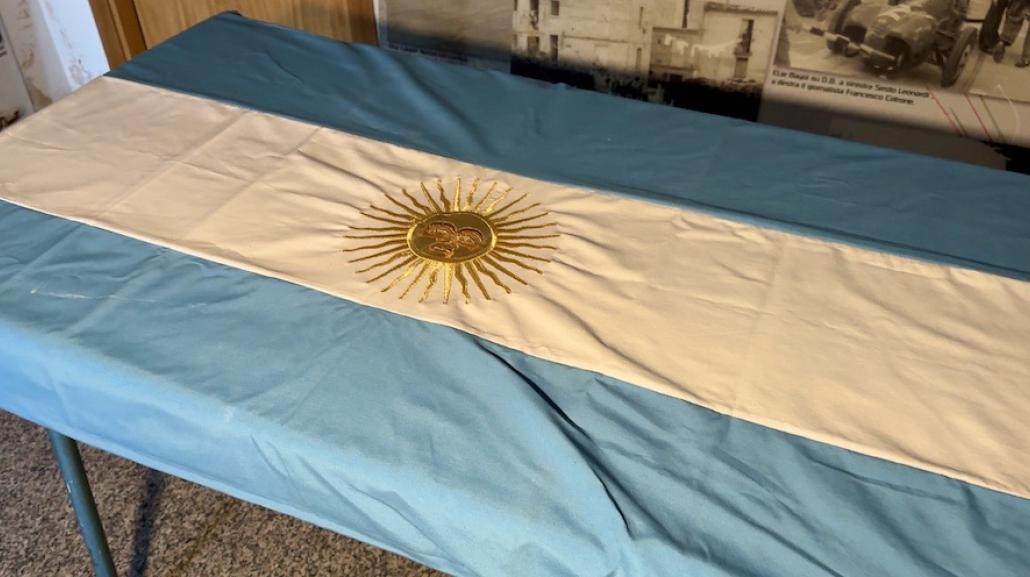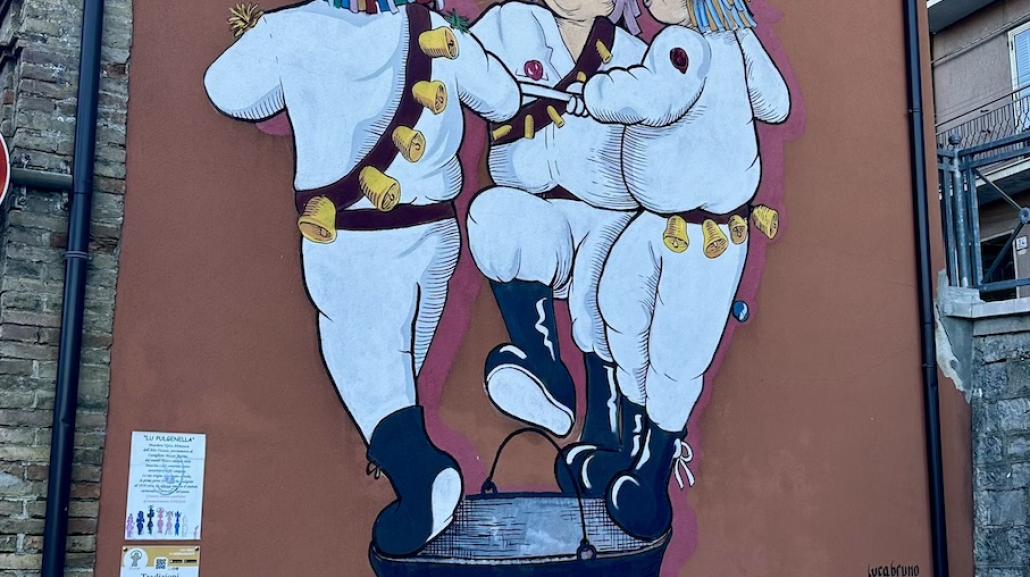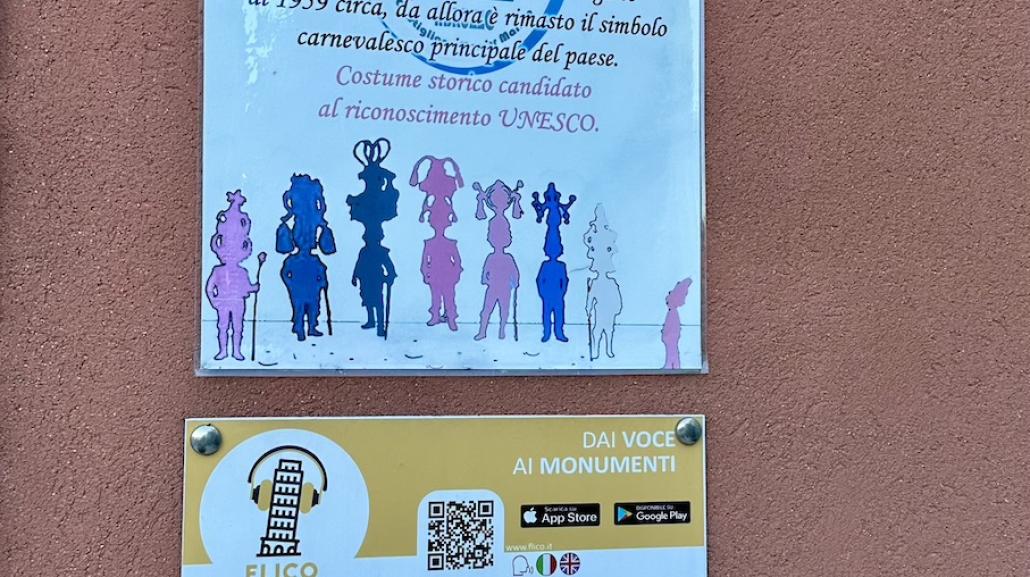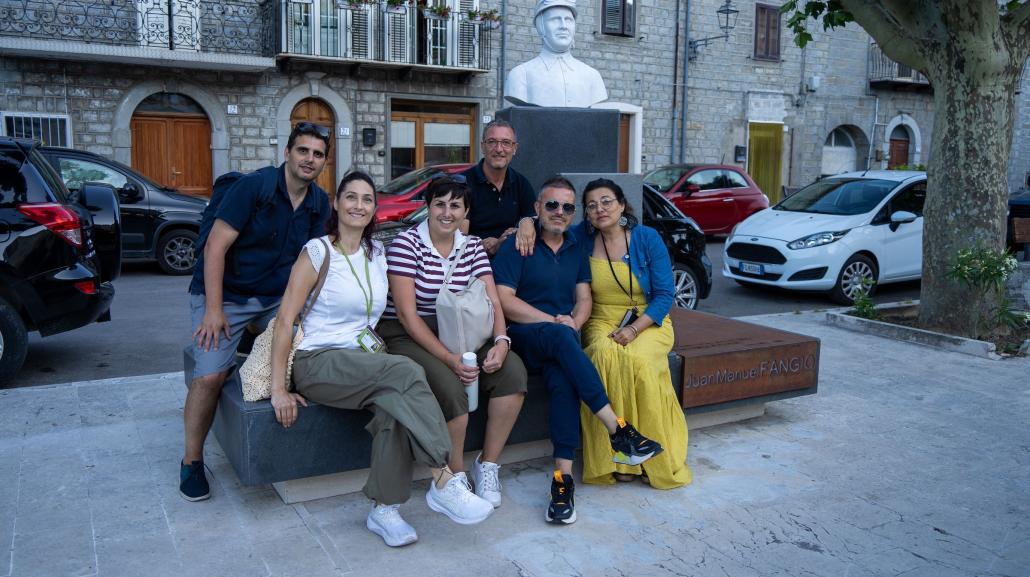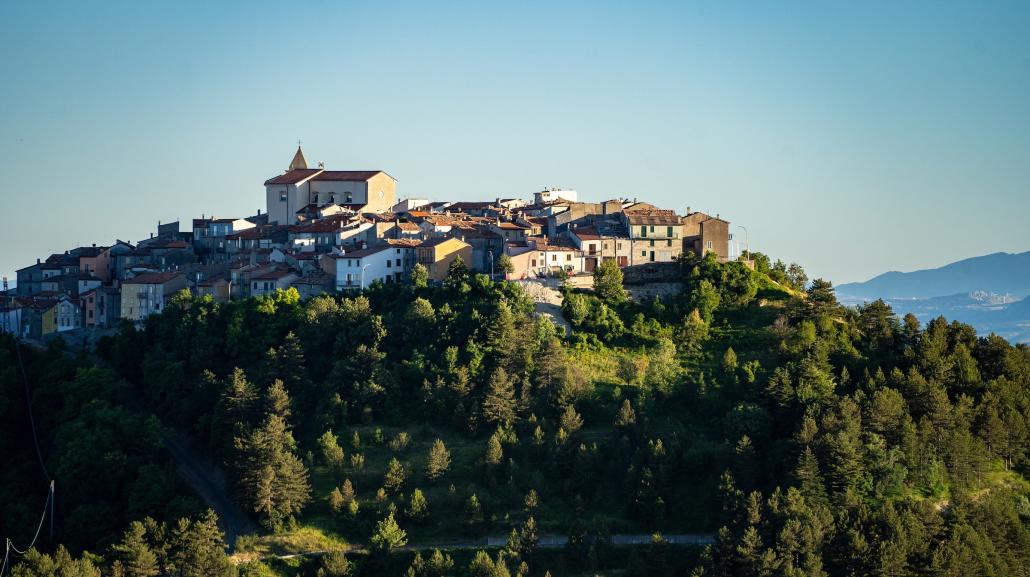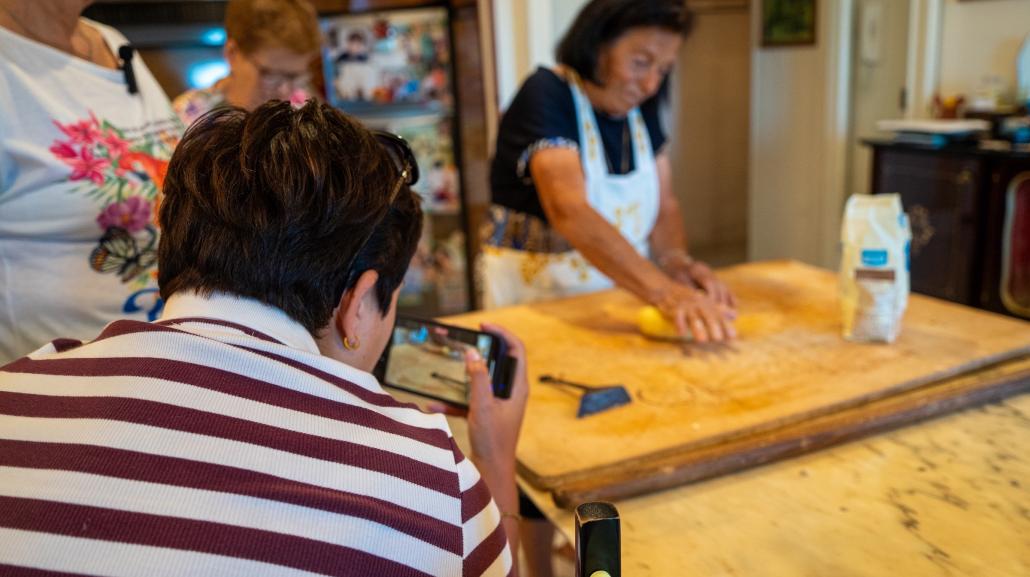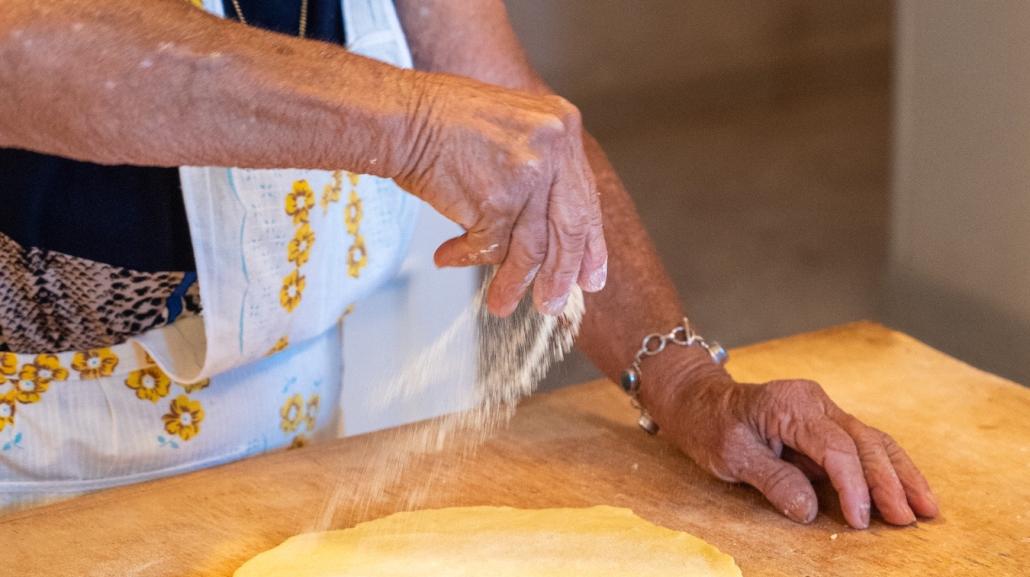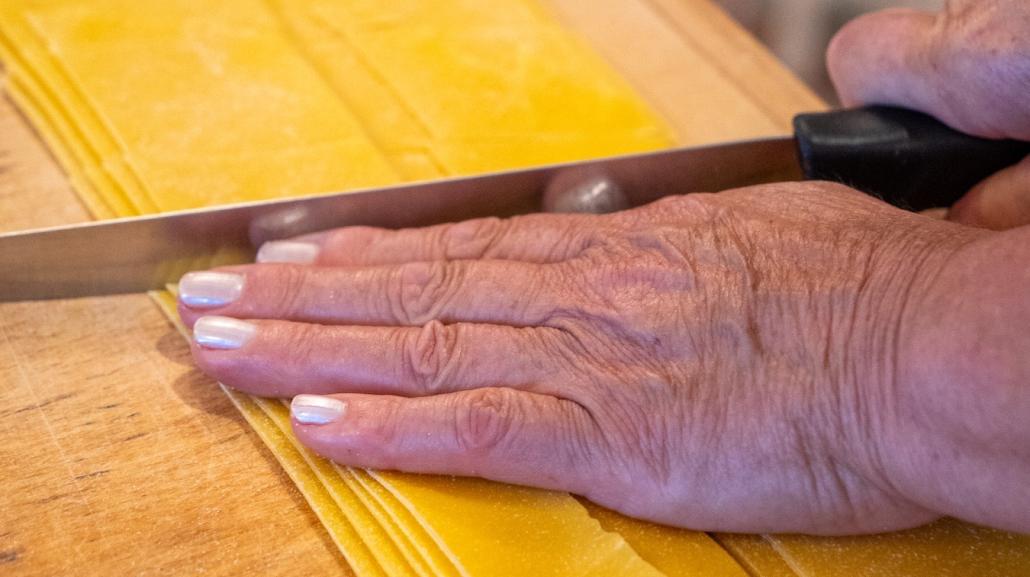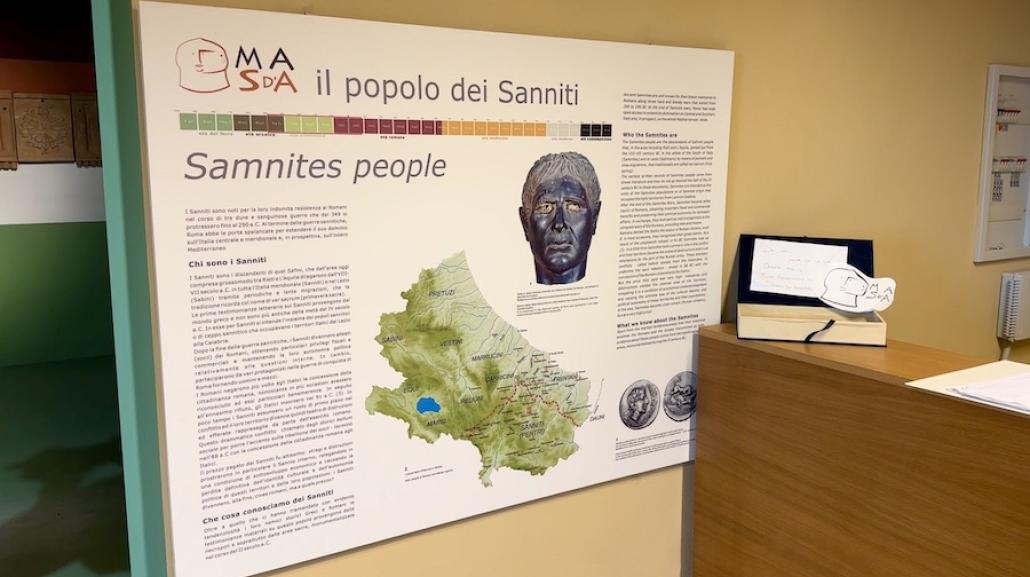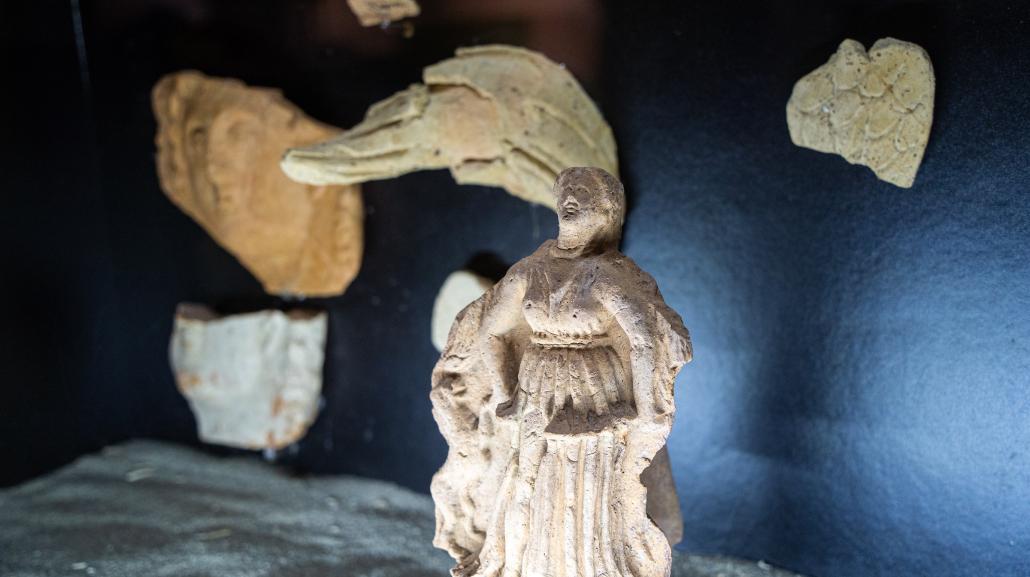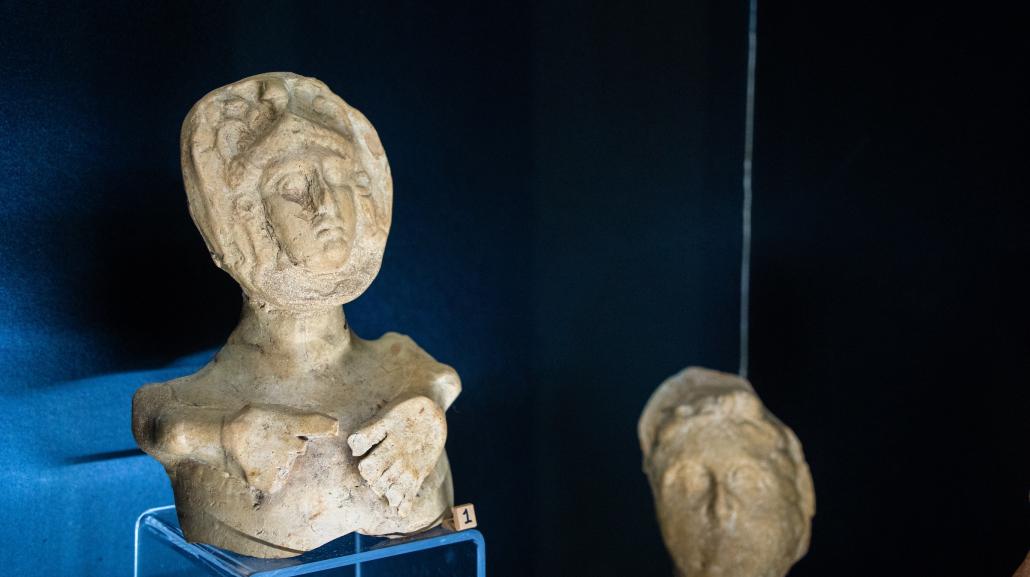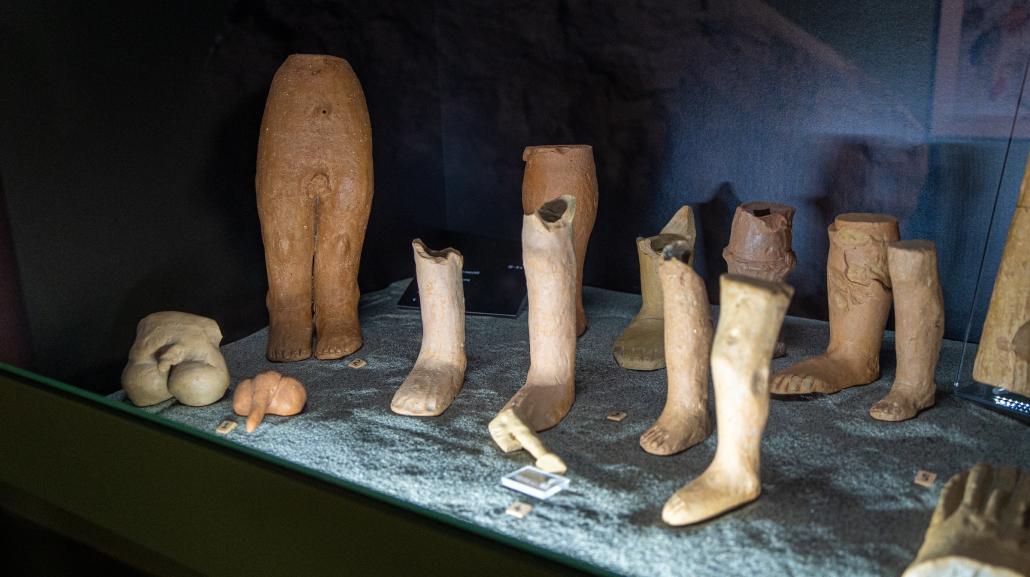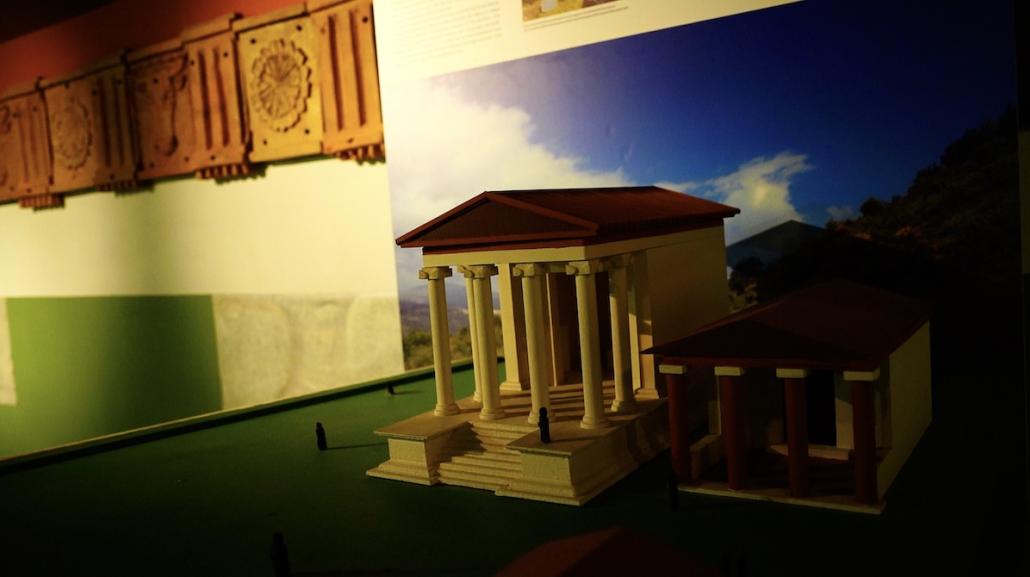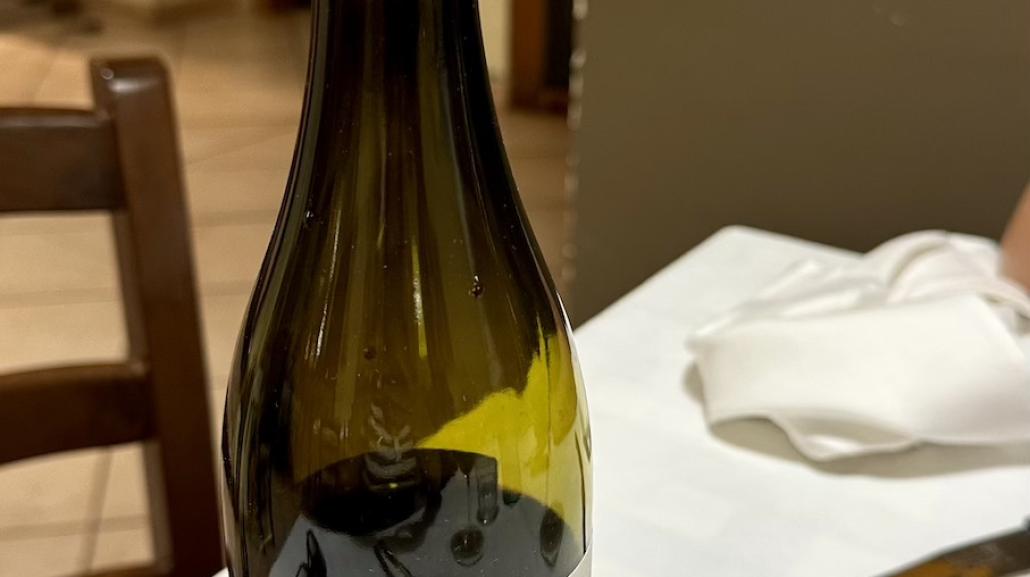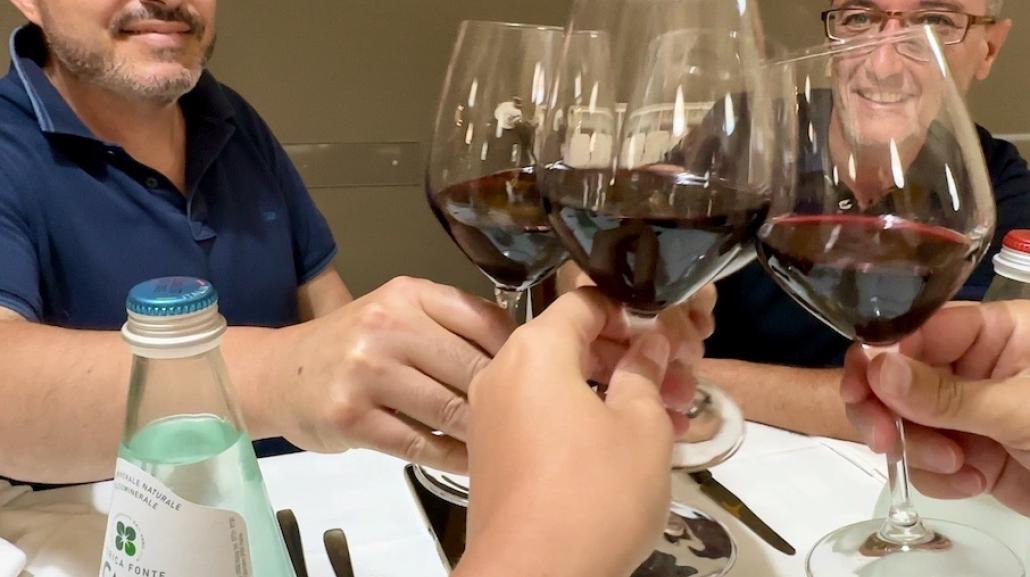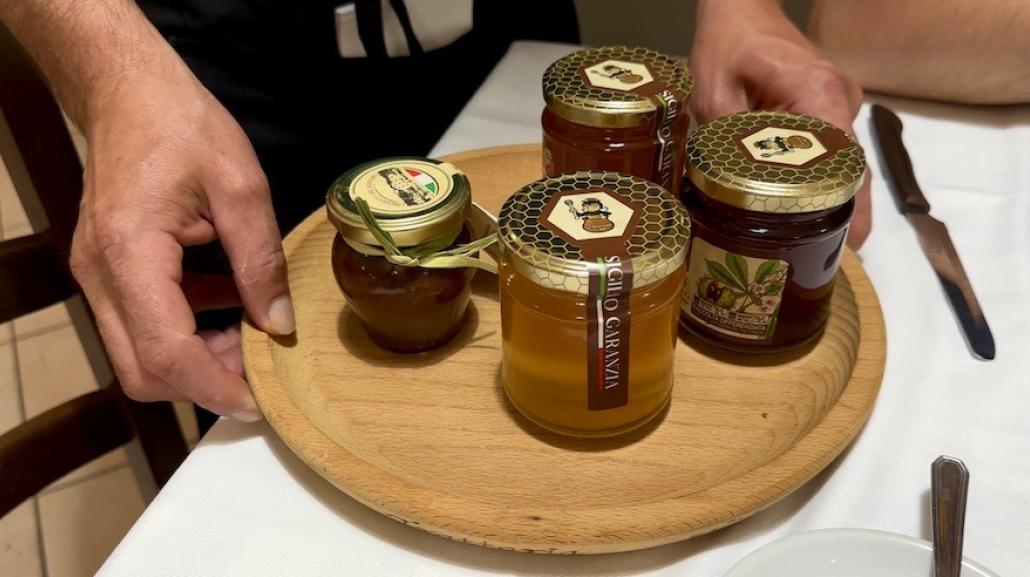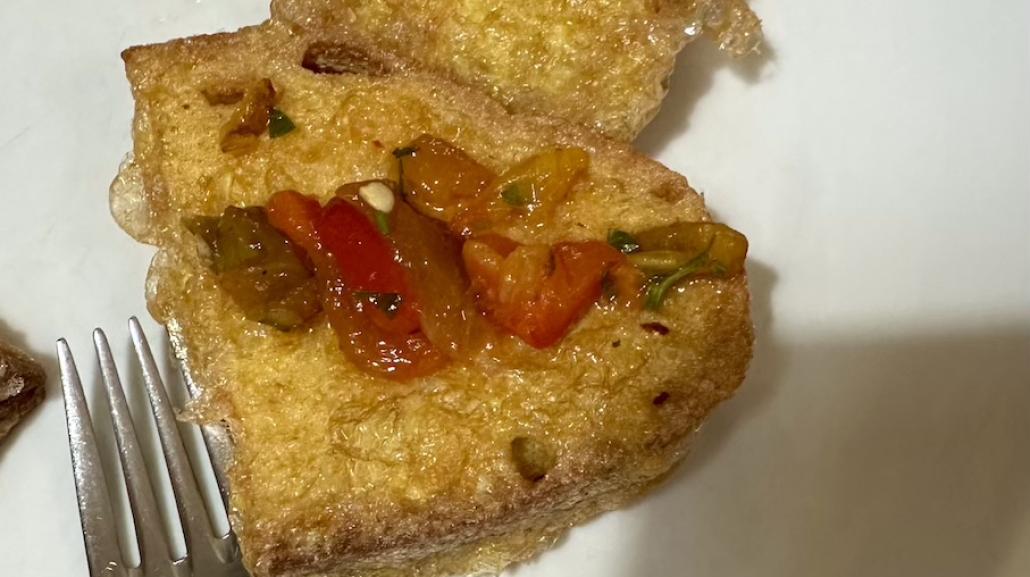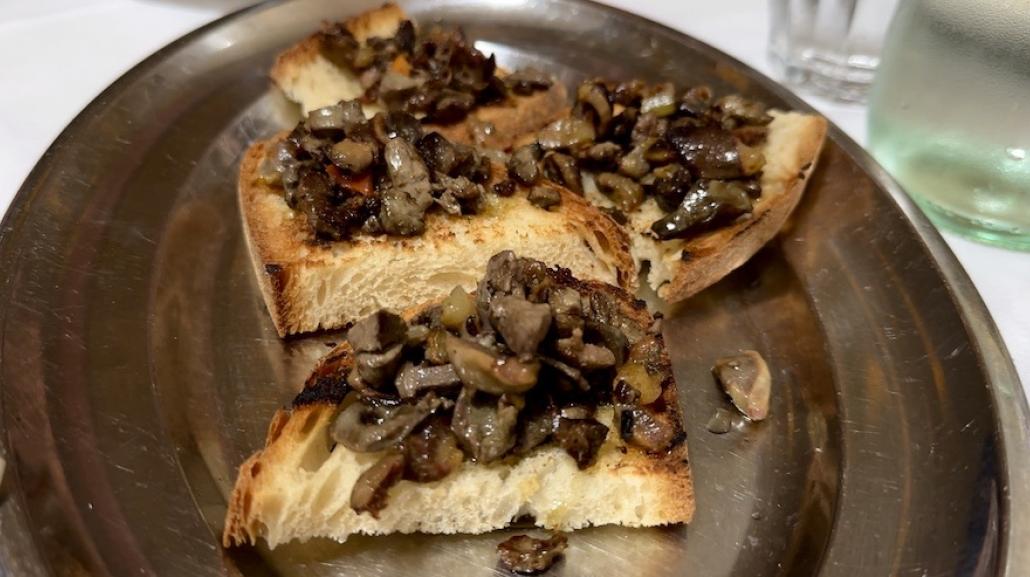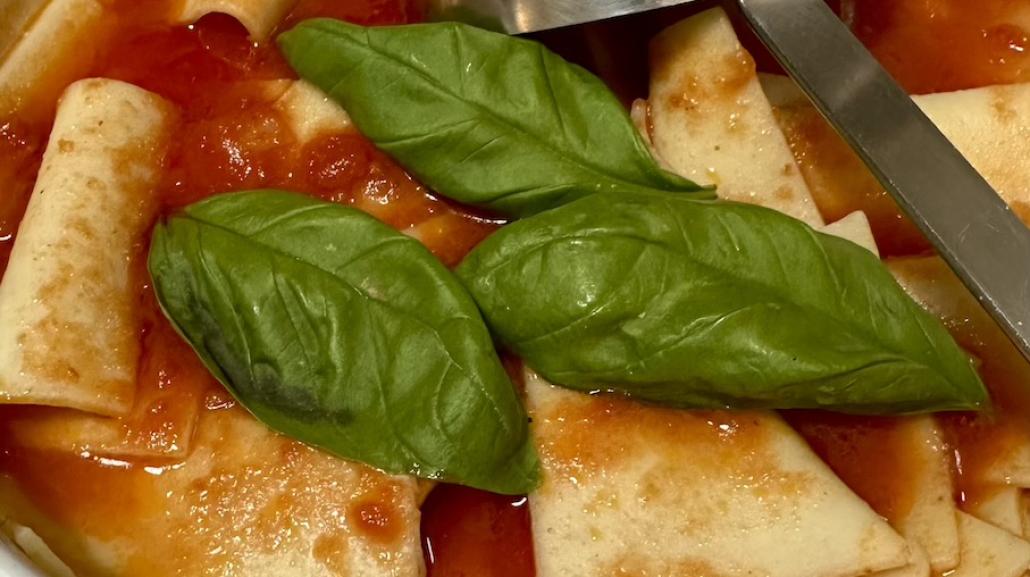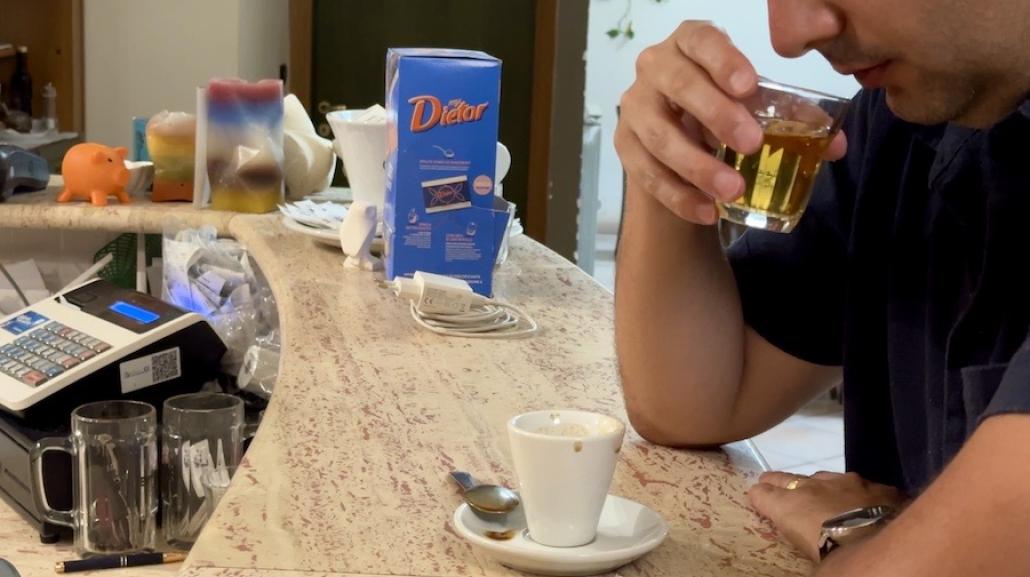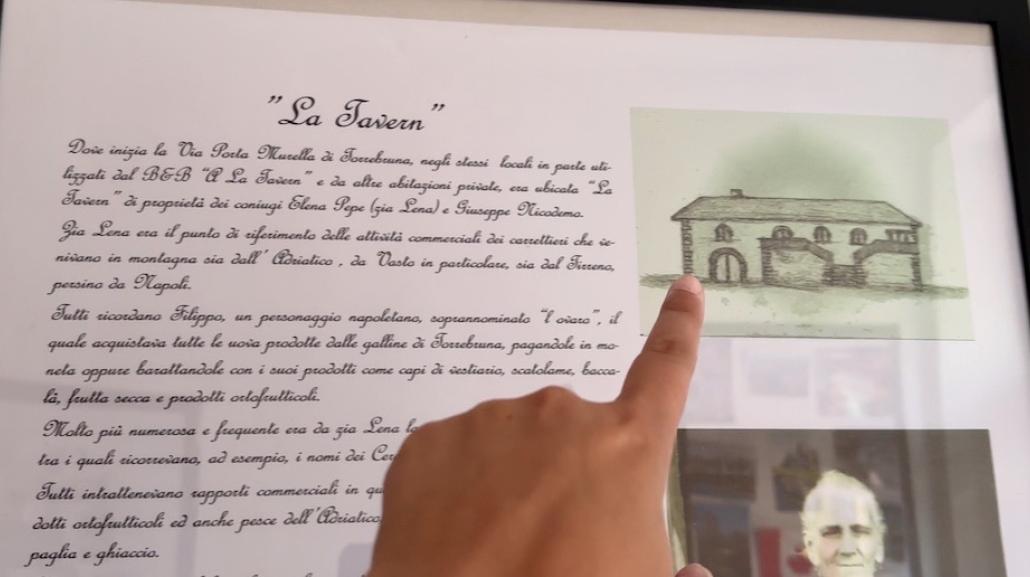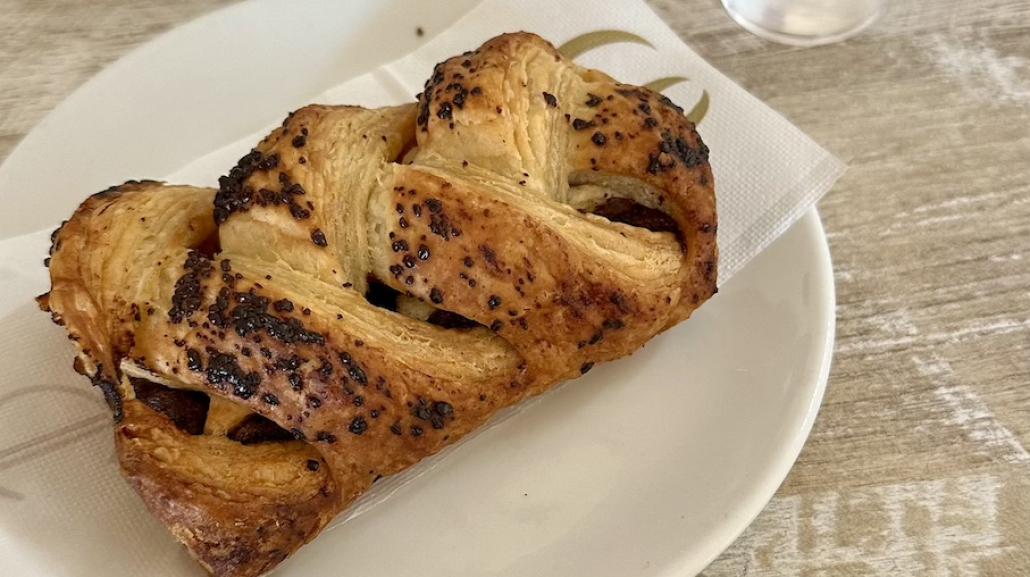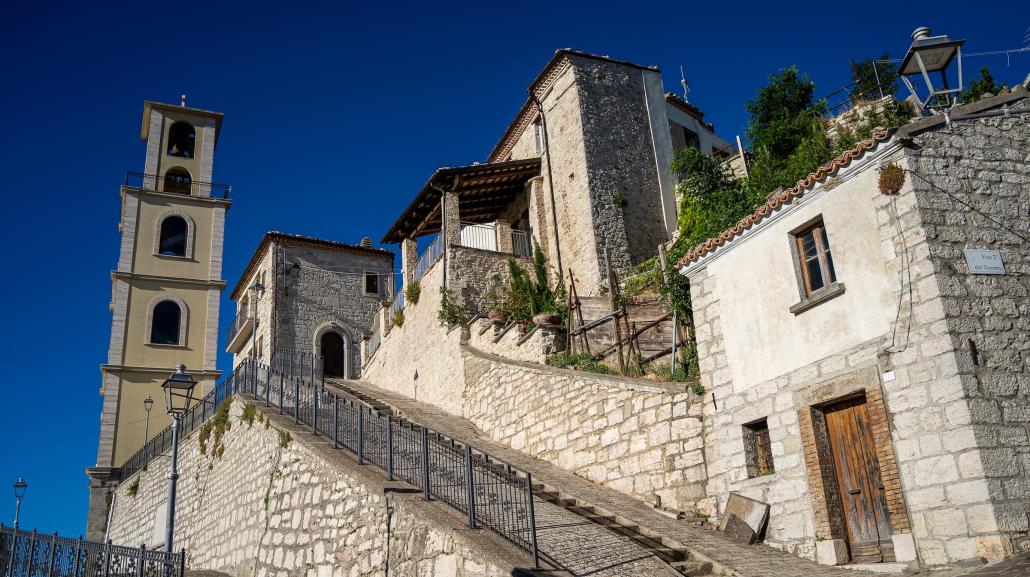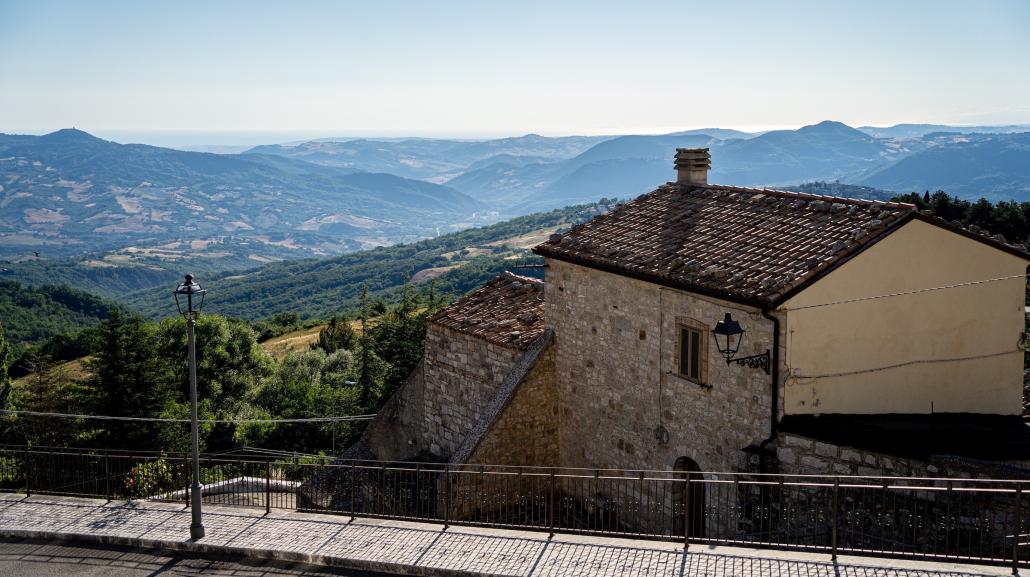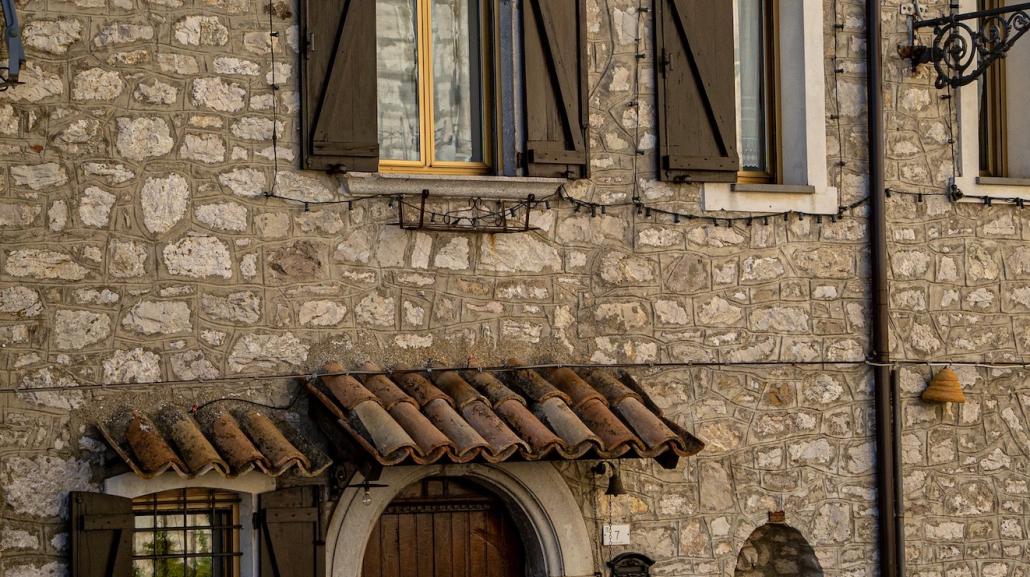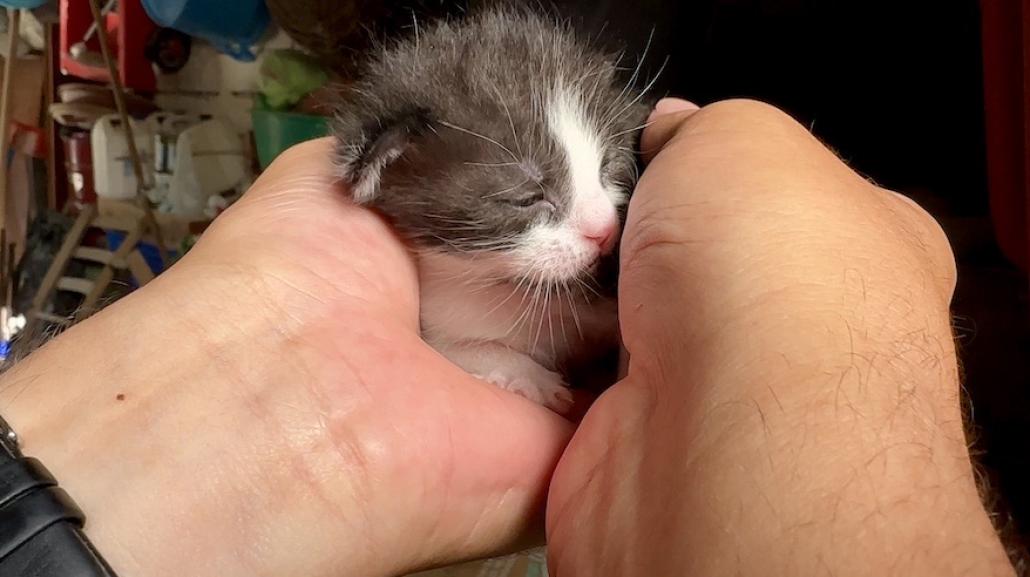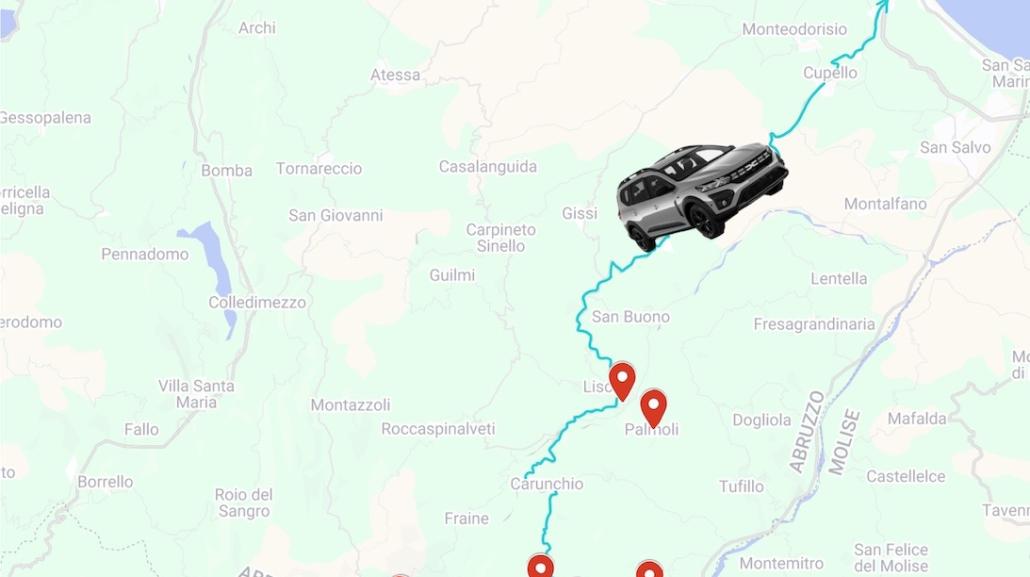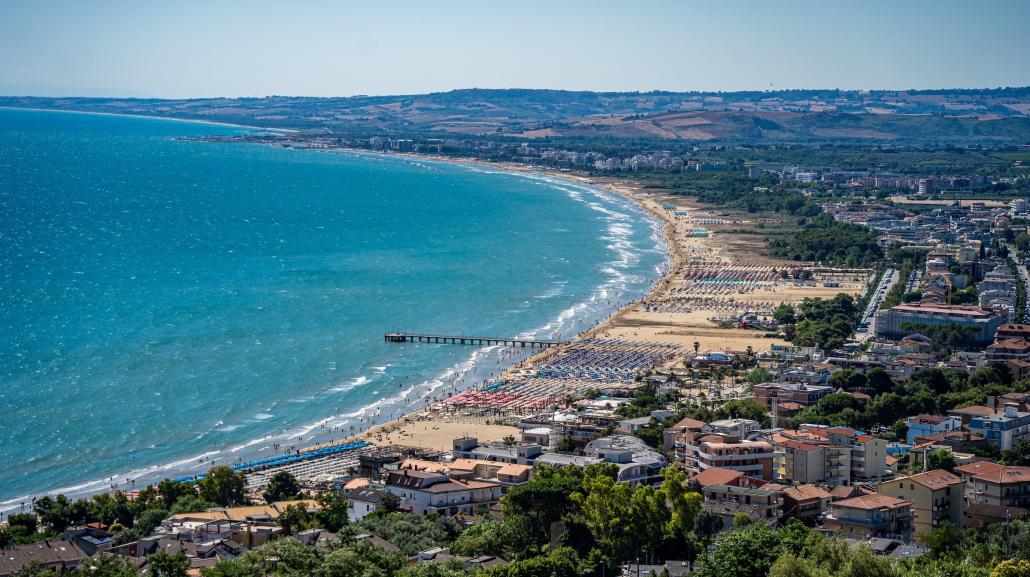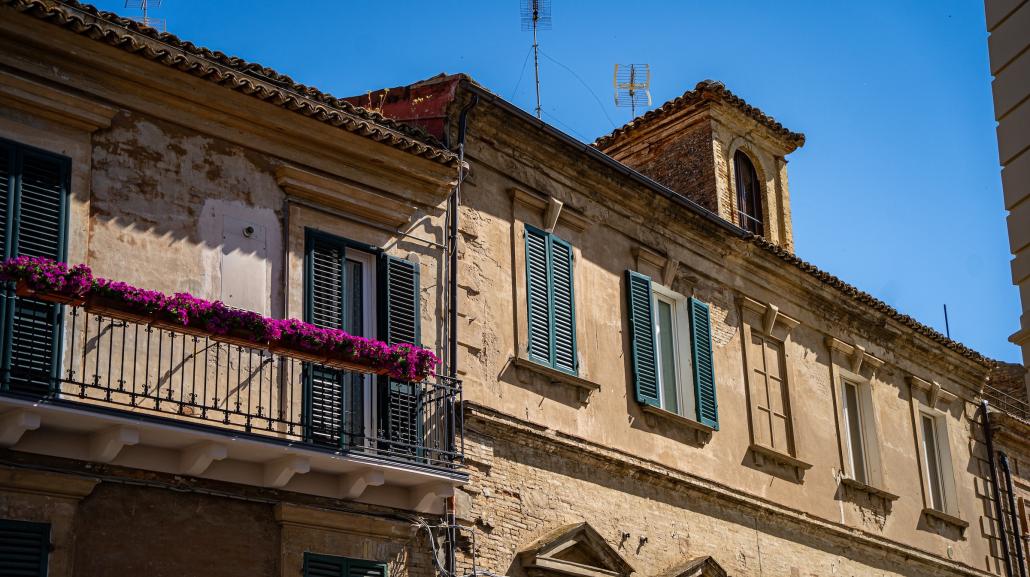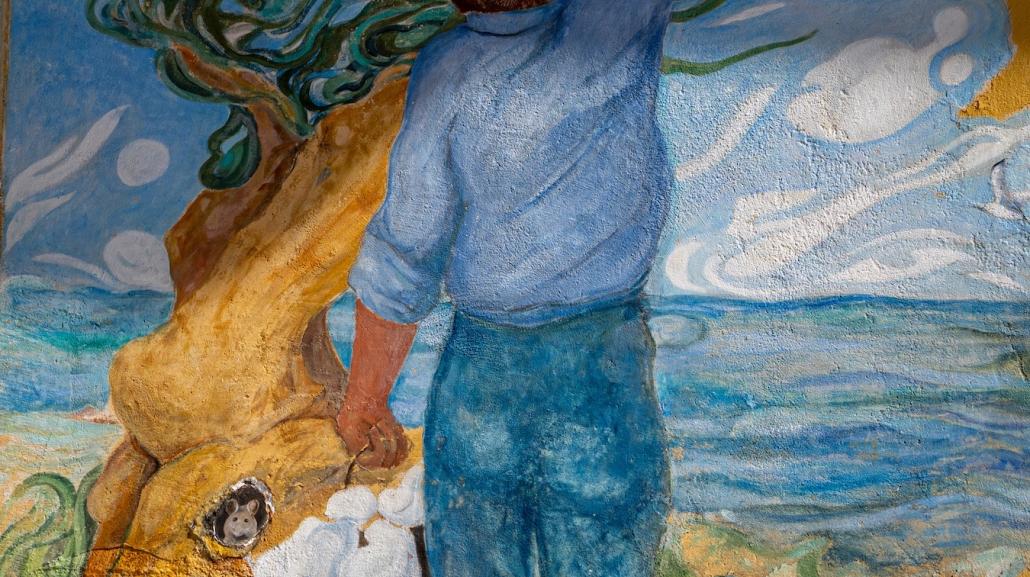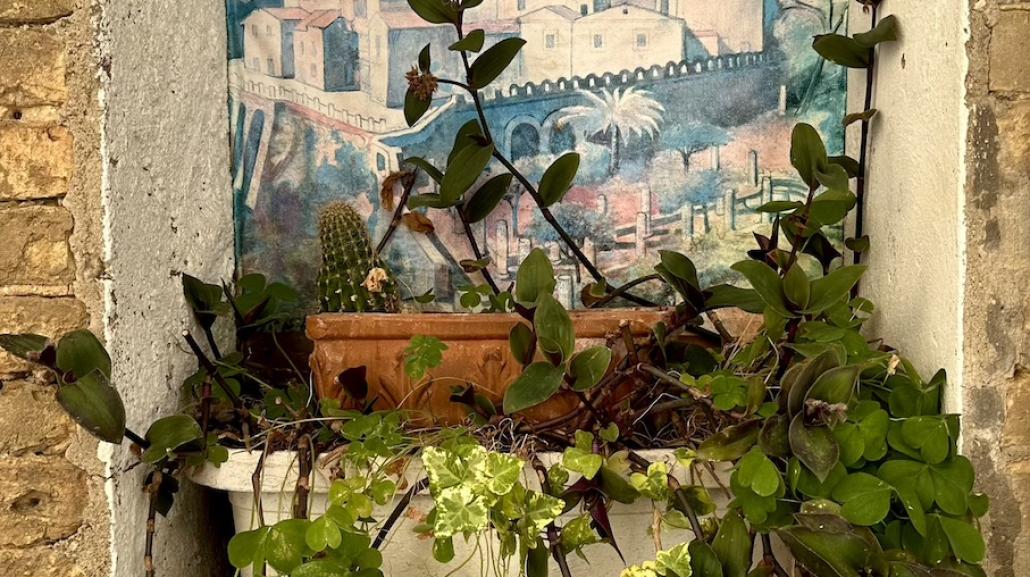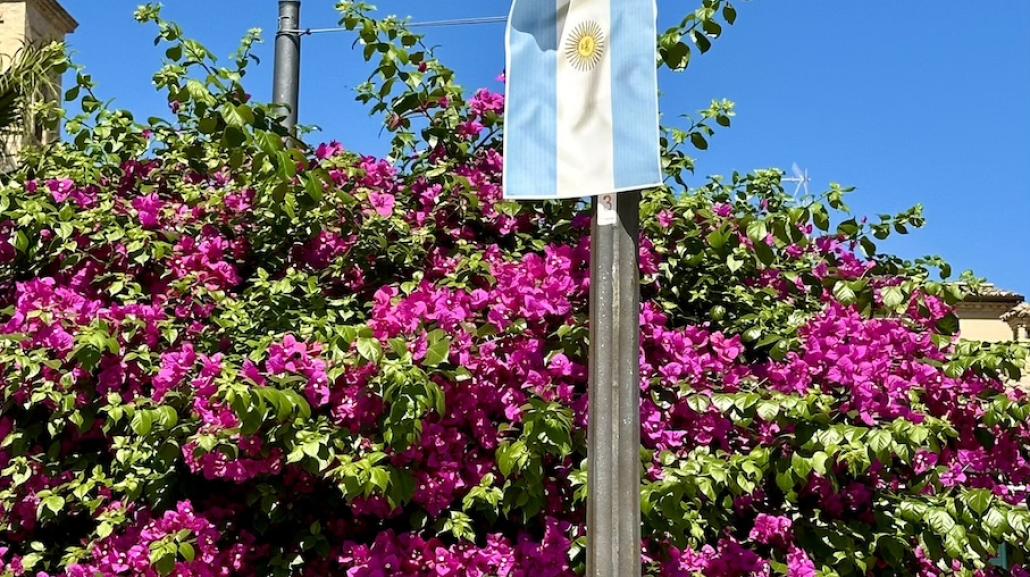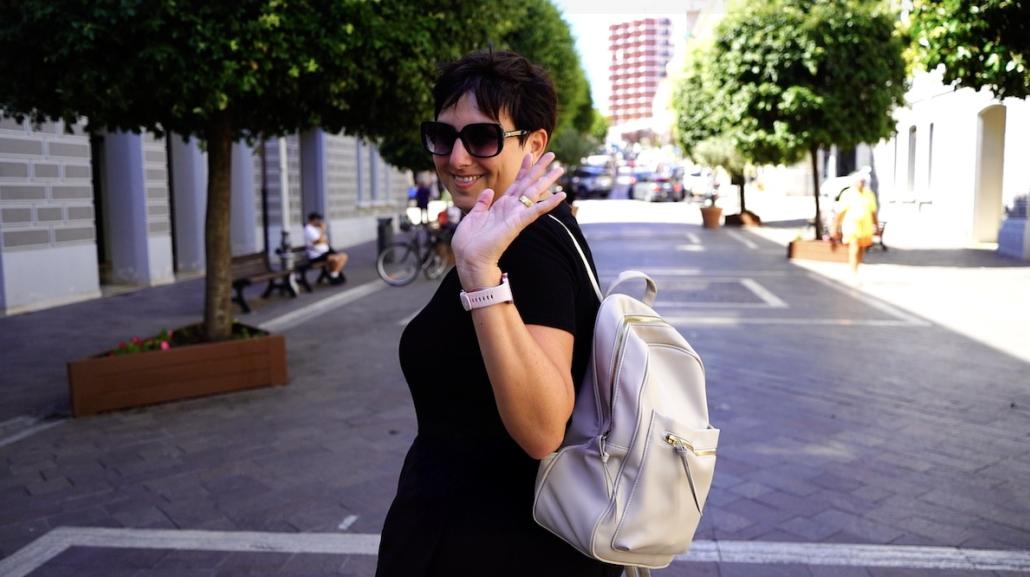A Dive into Abruzzo • Day 1: Arrival and First Encounters • Casalincontrada • Malandra Vecchia • Giant Bench • Guardiagrele • Bucchianico • Day 2: Southern Abruzzo & Local Flavors • Biofattoria Licineto • Celenza sul Trigno • Torrebruna • Palmoli • Hermitage of San Michele Arcangelo • Castiglione Messer Marino • Schiavi d’Abruzzo • Day 3: Farewells and the Sea • Vasto • Reflections on a Journey That Becomes a Meeting
A Dive into Abruzzo
By Köni of @exprimilo
In this travel journal, I’ll take you with me through the heart of Abruzzo Citeriore: from hills steeped in history to breathtaking viewpoints, unforgettable encounters, authentic flavors, and an Italian-Argentine connection you can feel with every step. It’s a short but deep journey, where Abruzzo calls out to you—inviting you to explore its landscapes, traditions, and people, and leaving a mark on your soul.
1,100 miles. 59 hours. 1 goal: to discover the soul of Abruzzo Citeriore in just one weekend..
If you’ve never heard of it, Abruzzo Citeriore is the historic name for what today is the Province of Chieti. It spans around 1,000 square miles of hilly and mountainous terrain, along with some valleys and a section of the Majella mountain range. It’s the most populated province in Abruzzo and offers something for everyone—hiking, nature, beaches, museums, cathedrals, and charming historic towns.
This trip took us deep into the countryside, where the real Italy lives 🇮🇹—the one that doesn’t show up in tourist guides but reveals itself to those curious enough to go off the beaten path. This time, instead of planning the itinerary myself, I let locals guide me through an intense 2-day route designed to help us truly “tuffarci nell’Abruzzo”—dive into it.
Ready for a new adventure? 😃
Day 1: Arrival and First Encounters
The road trip began well before we entered Abruzzo. We left from Piedmont, in the province of Alessandria, at 6:00 AM. The car was packed, the tank full, GPS set, camera ready, and memory card cleared. Let's go.
We took the A21 to Piacenza, then headed through Emilia-Romagna, merged onto the A1, then the A14 toward the Adriatic. As we passed Le Marche, the sea popped in and out of view on our left—quiet and shy, but always there.
Little by little, the landscape changed. The first green, rolling hills of Abruzzo came into view, dotted with rows of olive trees waving at us from the roadside. We had arrived in the deep Italy we were hoping to find.
Casalincontrada
After 385 miles, we reached Aceto, a hamlet of Casalincontrada. This marked the start of our “raw earth house” itinerary—and our lodging for the night: Casa di Tatone.
Tatiana and Constantino welcomed us with incredible warmth. Their guesthouse includes two rooms within a complex of traditional raw earth buildings, connecting you instantly to the land’s identity. What fascinated me most was staying in this kind of historic construction.
The outer walls look like hardened straw and provide perfect insulation: warm in winter, cool in summer. But inside? Fully equipped—private bathrooms, electricity, spacious rooms… even air conditioning!
The small courtyard quickly became our first panoramic viewpoint, with postcard views of the surrounding hills—perfect for filling your camera roll with genuine beauty.
After a quick rest and unpacking, we headed to the historic center of Casalincontrada, known as the “town of raw earth houses,” thanks to its extensive heritage of this ancient construction method.
There we visited CEDTERRA, the permanent documentation center for raw earth architecture, which promotes the research, conservation, and sustainable restoration of these buildings.
Our guide, Stefano, showed us the village, told us about its historic figures, and took us to the Church of Madonna delle Grazie and several picture-perfect corners.
Malandra Vecchia
Next, we visited Malandra Vecchia, a small rural hamlet filled with raw-earth houses—many of them for sale and waiting to be restored. Over the years, the village has been slowly depopulated as people moved to the cities, but locals now hope to bring life back to it.
Thanks to community efforts, there’s now a little park with a fountain, benches, grill area, wood oven, and public restroom—with a stunning view of the surrounding hills.
Giant Bench
Before ending the day, we stopped by the famous Giant Bench No. 390, also in Casalincontrada.
Don’t forget your official bench passport—there are two spots in the village where you can get it stamped!
This is the bench 👇🏻 And this is the view you can admire from there:
Guardiagrele
From Casalincontrada, we took a quick detour to Guardiagrele, one of the official Borghi più belli d’Italia (Italy’s Most Beautiful Villages).
Here, you can visit the Presentosa workshop or explore the Museum of Traditional Costume and Culture—just note that it closes at 7:00 PM.
If you need help, the tourist office is located at Largo San Francesco 11, right next to the town hall.
Along that same street, in the main piazza, the atmosphere is pure Italian charm: café tables with aperitifs, families enjoying the sunset, couples looking for the perfect dinner spot.
We arrived just as the sun was setting, and everything turned magical.
As in every corner of Abruzzo, you’ll find scenic overlooks here too—offering breathtaking views of the surrounding nature.
Bucchianico
At night, we visited Bucchianico during its annual festival - Bucchianico in Festa: music, local food, markets, and performances filled the town with life.
As the night wore on, the streets filled with warmth—people smiling, singing, and sharing a beautiful evening together. The tiredness was starting to set in, so I began the walk back to my hotel, winding through the narrow alleys of the old town, lit only by the moon.And then, just like in a movie, I stumbled upon a group of people singing a serenade to a couple celebrating their 50th wedding anniversary It was one of the most touching moments of the trip. The joy they radiated moved me deeply.
If you want to retrace this day’s route: start in Frazione Aceto, visit Casalincontrada and its raw earth houses, stop by Guardiagrele for the sunset and a drink, and end the night in Bucchianico for a festival or a quiet evening stroll.
Day 2: Southern Abruzzo & Local Flavors
By 8:00 AM the next morning, we were already up—recharged and ready for a full day of activities.
Tatiana prepared coffee, fresh croissants, plums from her garden, and a few parrozzini (little almond treats coated in chocolate) for us to take on the road. The croissant came from caffetteria Anna, one of the best in the area: light, fluffy, and absolutely delicious.
After breakfast, we loaded up our bags, filled our bottles with the fresh water Tatiana had set out for us, and hit the road toward Celenza sul Trigno, where Marco and Ivan from Italea Abruzzo were waiting for us.
Here’s a fun little detail that made me feel even more connected to the place: one of them shares a last name with someone in my family, and I learned it’s actually quite common in this area.
It’s those kinds of coincidences that make a trip feel like a homecoming.
Below is the map of the day’s itinerary, in case you want to follow it too:
Biofattoria Licineto
About 80 miles south of Abruzzo, near the border with Molise and alongside the Trigno River, we arrived at Biofattoria Licineto, a family-run organic farm. We were warmly welcomed by Nicola and his family, who kindly showed us around the property and shared their inspiring vision.
Their production is 100% organic, with ethical and environmental certifications from the European Union.
They offer a range of seasonal products, with standouts like the “Colline Teatine” DOP extra virgin olive oil and local sulla and wildflower honey—both typical of this region.
The farm also hosts educational activities for both kids and adults, and operates as an agriturismo by reservation. Even though it was the middle of summer, a gentle breeze made the visit incredibly pleasant.
After the tour, we headed toward the kitchen area to dive into the local food traditions. Signora Maria gave us a live demonstration on how to cut and shape various types of regional pasta, and we got to taste the authentic ventricina—a spicy cured meat that’s a true Abruzzese specialty.
To learn more or book a visit to the Biofattoria, check out their website: https://www.biofattorialicineto.it/
Celenza sul Trigno
After visiting the Biofattoria, we drove up to the historic center of Celenza sul Trigno, a small village of about 800 residents located at 2,120 feet above sea level.
Here stands the San Donato Sanctuary, dedicated to the town’s patron saint—and its story is truly unique.
In the past, San Donato was invoked to cure epilepsy through a ritual that involved weighing the sick person on a scale and placing an equivalent offering on the opposite side.
This tradition was practiced until 1985, and you can still find traces of it inside the sanctuary today.
It’s truly worth getting lost in the historic center: reading the dialect phrases painted on the walls, looking at historic photos of local residents, strolling through Piazza del Popolo, visiting the Church of Santa Maria Assunta and the old tower—and above all, soaking in the stunning panoramic views from the town’s scenic overlooks.
Ivan told us that many residents of Celenza sul Trigno emigrated to Argentina—the country where I was born—creating a special bond between these two distant lands.
Torrebruna
This charming village, nestled at the foot of the mountains, sits at about 2,770 feet above sea level and is home to roughly 650 people.
We took a walk through its historic center, where we admired the croce viaria—a centuries-old waymarker along the Ateleta-Biferno route, once used during transhumance, when shepherds moved their flocks with the seasons.
This path is now recognized as UNESCO heritage.
We also visited the town fountain and the public washhouse, which were once important community gathering places—where daily life unfolded and gossip was exchanged.
Finally, we made a quick stop at the Chiesetta della Madonna delle Nevi, a small alpine chapel tucked among the hills of Carunchina, at over 3,400 feet in elevation.
Next, we headed to the Pro Loco headquarters, located along the Trail of Springs and Fountains, where we enjoyed a well-deserved lunch in a truly warm and welcoming atmosphere.
There were several local product stands, and of course, I took the opportunity to sample everything I could.
It was here that I met Candela and her father, two Argentinians who chose this region to start a new chapter in their lives.Candela arrived first, and when her father came to visit, he fell in love with Torrebruna—and decided to move there permanently.
During lunch, I also met Tiziana, who later joined us as a guide for the rest of our journey. Her deep knowledge of the area enriched every moment. After meeting the mayor and filming a short interview, we took a group photo on the town’s helipad to capture the moment. Then, with Tiziana, Marco, and Iván, we set off northward to continue our exploration.
Palmoli
Palmoli sits at 2,385 feet above sea level, perched on a remote hilltop offering breathtaking views of the Majella and Gran Sasso mountains.
At the entrance of the MUBEN – Museum of Rural Life, located inside Palmoli Castle, we were warmly greeted by Attilio Mauri, who had kindly prepared a guided tour of the museum’s different sections.
On the ground floor, we explored the area dedicated to traditional trades, featuring videos, interviews, and tools once used in the region.
The main goal of the museum is to showcase and preserve the agro-pastoral lifestyle of the area, through a display of farming tools, household objects, and traditional garments once worn by the rural communities of Palmoli and its surroundings.
The second room immerses you in everyday life from the past and the powerful stories of emigration that shaped the identity of these villages. These are stories that especially resonate with people like me—descendants of Italians who once crossed the ocean in search of new beginnings and a better future.
After the tour, we climbed up the tower to take in a panoramic view that stretched all the way to the sea—we could even spot the Tremiti Islands in the distance. It’s the perfect spot for a sunset aperitivo or even special events hosted at the museum.
After leaving the castle, we wandered through the historic center of Palmoli. Many locals were sitting outside, reading or chatting, and they greeted us warmly as we passed by. To me, these hidden inland villages embody the true spirit of Italian life—far from mass tourism and deeply connected to the land and its traditions.
For more information about the museum: @muben_palmoli
Hermitage of San Michele Arcangelo
After leaving Palmoli, we took a scenic hill road to reach the Hermitage of San Michele Arcangelo in Liscia. Our guide shared the story of the saint and the legend of the miraculous cave. The water that flows from the cave is believed to have healing powers, attracting pilgrims from across the region every year.
Castiglione Messer Marino
Our next stop came with a surprising and emotional twist: Castiglione Messer Marino, where the town’s main square features a monument to Juan Manuel Fangio. Surprised? The father of the legendary Formula 1 champion was originally from this very village. That’s why the town is twinned with Balcarce, Argentina—Fangio’s birthplace.
But that’s not all: Castiglione Messer Marino is also home to a museum dedicated to Fangio. In the center of the main hall, proudly displayed, is an Argentinian flag—a sight that nearly brought tears to my eyes. There, we met some of Fangio’s extended family, who took us to see the house where his father lived before emigrating to Argentina.
In the town’s main square, we found a mural of “Lu Pulgenella”, a traditional mask from the Alto Vastese area, originally from this very village.It has ancient roots and is the iconic symbol of the local carnival. Here’s a photo and a QR code if you’d like to learn more:
Before continuing our tour, we took a group photo with our guide, joined by a representative from the local municipality who had accompanied us throughout the visit to the village.
Schiavi d’Abruzzo
From there, we headed to Schiavi d’Abruzzo (the cover photo of this article), where—together with Marco’s family—we learned how to make the town’s traditional pasta, guided by real local home cooks. The whole family gathered to show us, in both Italian and Abruzzese dialect, how to prepare sagne pezzate, which we had the pleasure of enjoying later that evening.
Before sunset, we visited the Samnite Archaeological Museum, where Marco shared the history of his hometown with deep passion and affection. The museum holds a collection of ancient artifacts and reconstructions that bear witness to the rich heritage of this land.
At 9:00 PM, after wrapping up the official tour, we headed to Antica Trattoria Vittoria, where our host, Vittorio Di Carlo, welcomed us like family. What awaited us wasn’t just dinner—it was a full-blown ritual of hospitality. We kicked things off with a glass of Montepulciano d’Abruzzo, a smooth, easy-drinking red. Then came the appetizers: a tasting of local cheeses—highlighted by a fresh ricotta made that very day, light as a cloud and melting in your mouth—paired with regional honeys (which they kindly gifted me at the end of the meal 😊). Next came fried bread, more ventricina, a special bruschetta, the sagne pasta we had learned to make earlier, pallotte(cheese and bread balls), and chicken.
To finish, we tried a golden-colored amaro from Abruzzo that instantly reminded me of our beloved caña Legui
📍 Antica Trattoria Vittoria
If you’d like to try these dishes yourself, this is the place to go!
After that hearty dinner, we said goodbye to Marco and drove back with Iván to Torrebruna to check in at our accommodation. Our host was Mauro Pepe, at B&B A La Tavern, a longtime local favorite and trusted reference point in Torrebruna.
Day 3: Farewells and the Sea
Torrebruna
We woke up early and had breakfast at Bar del Corso, where the stay includes a nice coffee and a delicious chocolate braid. We spent a few minutes chatting with Mauro, who shared more local stories about the village.
After breakfast, we explored the historical part of Torrebruna with him as our guide. He pointed out the details of every corner and took us to the town’s scenic viewpoints to admire the surrounding landscapes.
Before leaving, Mauro showed us his litter of newborn kittens 🐈⬛ and gifted us some fresh eggs to take home. With our hearts full from these simple yet meaningful gestures, it was time to say goodbye and hit the road for the final stop of our journey.
Vasto
Thanks to a little “shortcut” recommended by Mauro, we headed north toward the Adriatic Sea. Here’s the map of our final day—just in case you’d like to retrace our steps.
Upon arriving in Vasto, I parked at the Villa – Chiesa di Santa Maria Maggiore parking lot, just a few steps from Loggia Amblingh—the viewpoint that stole my heart more than any other during the trip.
From the parking lot to Palazzo D’Avalos, home to the civic museums, you follow an elevated coastal path that offers one charming view after another. I believe this city deserves a longer visit—especially a trip down to the marina to enjoy the beaches.
I was struck by the many information signs in Spanish, and even some flags from various countries.
I truly felt welcomed 🙌🏻✨
Reflections on a Journey That Becomes a Meeting
This trip carried a deeply Italian-Argentine flavor—not just because of my heritage as a descendant of Italians, but also due to the genuine connection with the local people. Many of them had traveled to Argentina and are deeply committed to spreading Abruzzese culture among the descendants of emigrants, through initiatives like Italea Abruzzo.
They told me that these lands have a strong bond with Argentina, as many people emigrated to that country. Some dialect words have even been “recovered” thanks to those who left, as many preserved their original way of speaking, while those who stayed gradually adopted standard Italian.
Our guide, Tiziana, took a special interest in this connection and asked us to teach her some Spanish words. It was a true cultural exchange that enriched every moment of the trip.
Some colleagues have already explored other parts of the territory and will soon share their experiences in upcoming posts. I encourage you to read them to discover which corners of Abruzzo Citeriore are calling you—and to find that voice of Abruzzo waiting for you.
From the pedestrian area of Vasto, I send you off with a heart full of gratitude 💛.
I hope you loved this journey as much as I did, that every story transported you, and that you feel—as I did—that Abruzzo isn’t just a destination: it’s a meeting with the most authentic soul of Italian identity.
For more content and new adventures, follow me on Instagram: 📸 @exprimilo
Thank you for joining me on this journey. Until the next adventure! 💋

